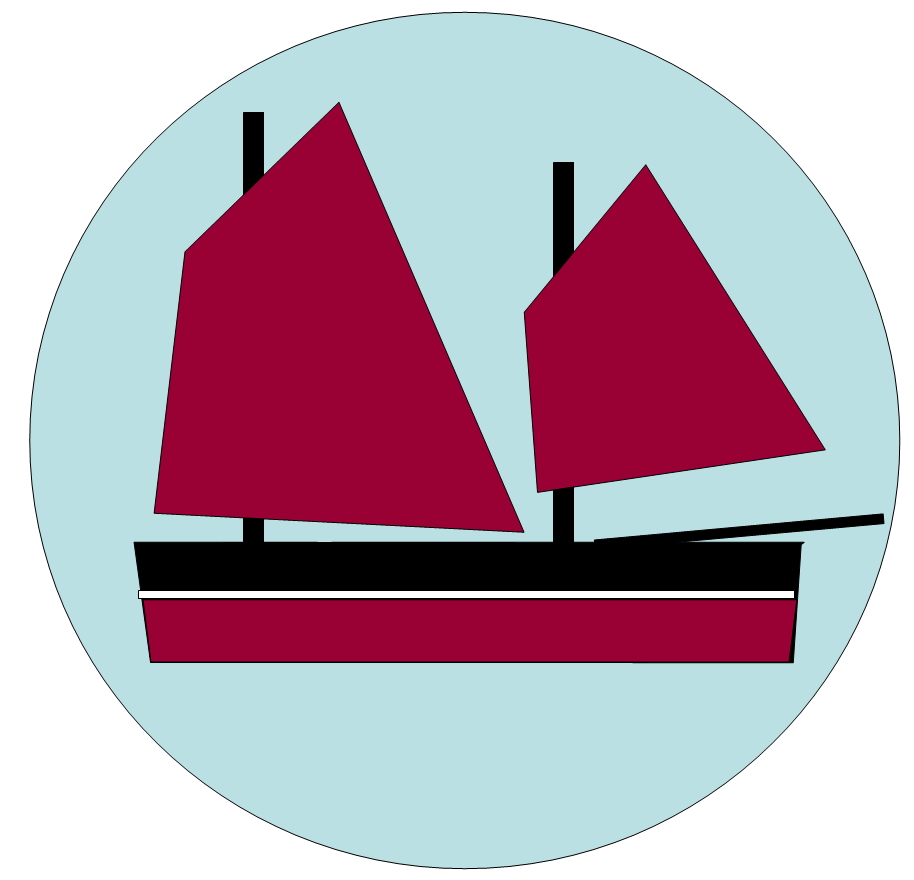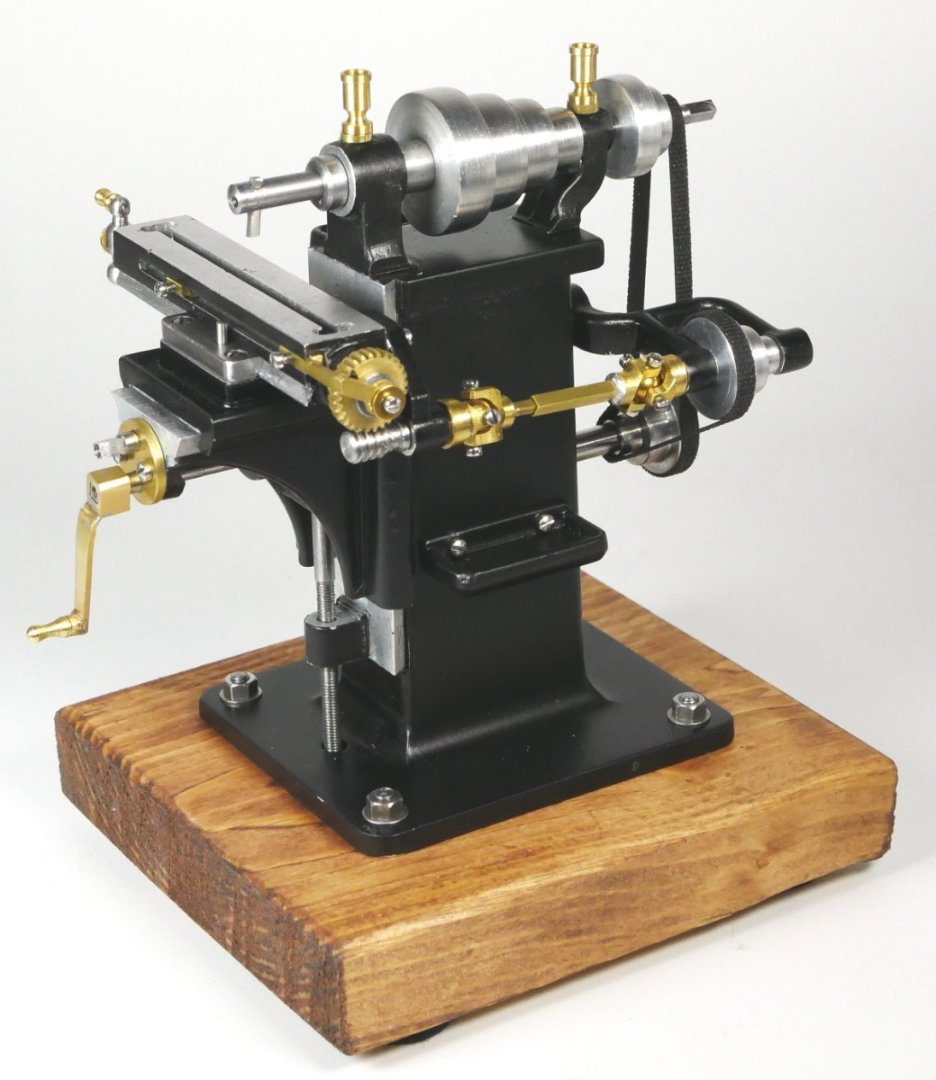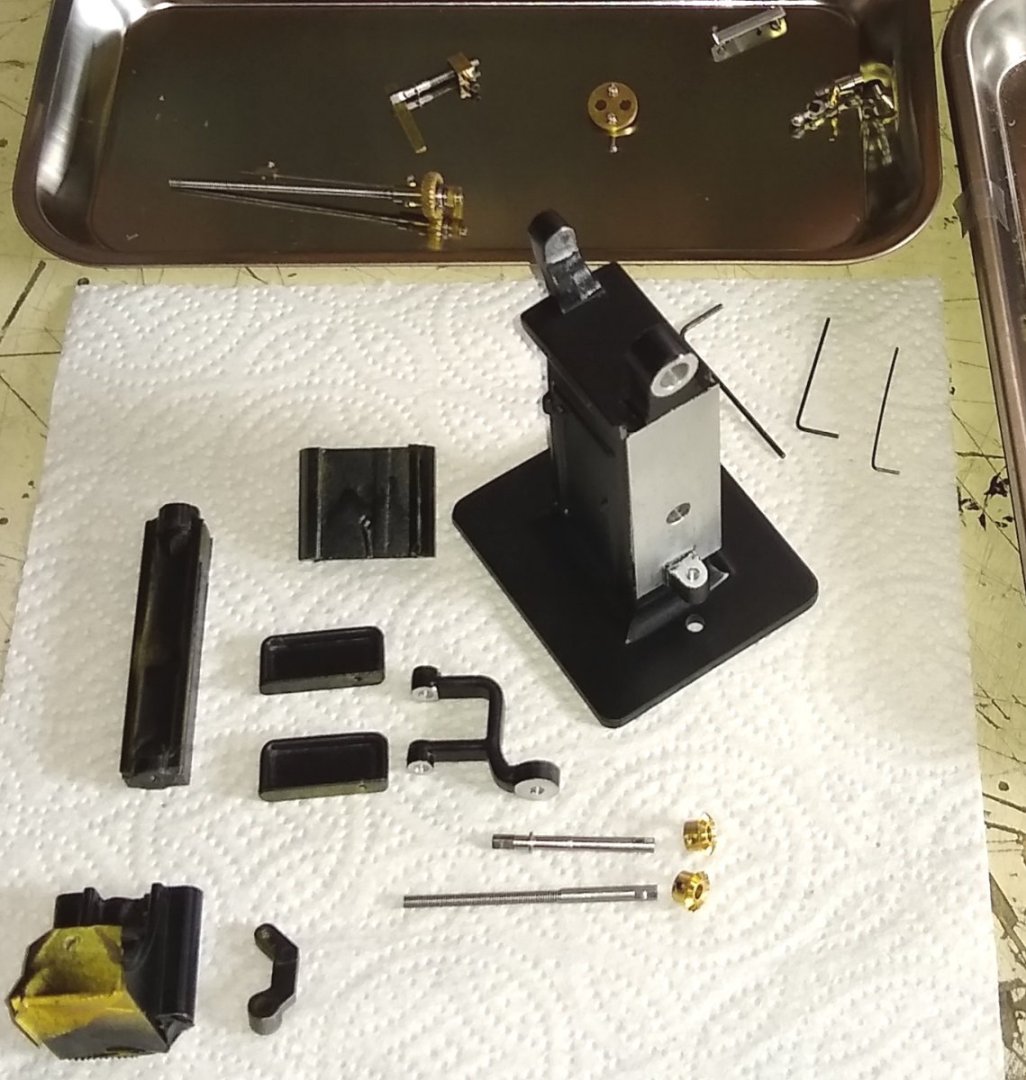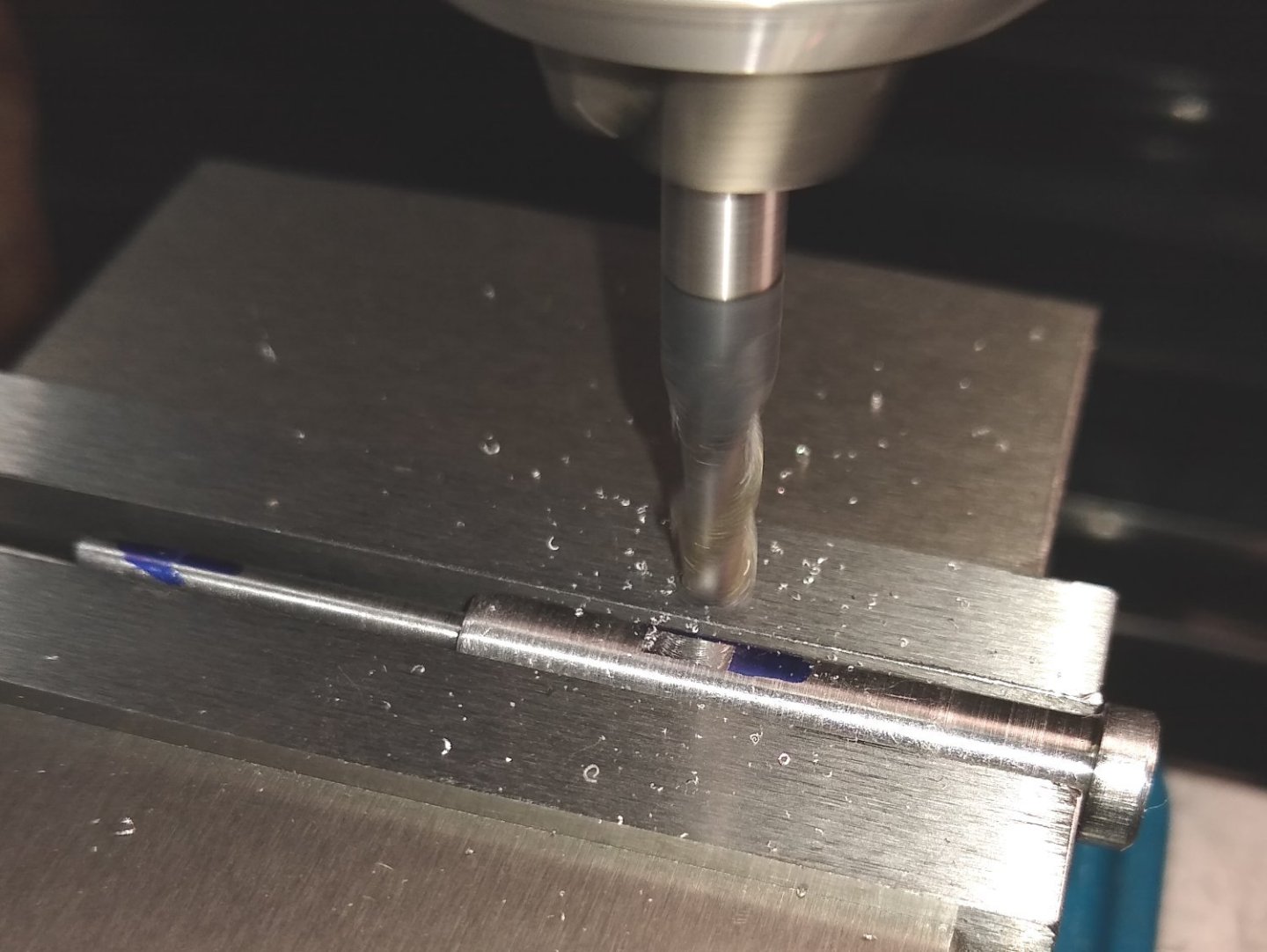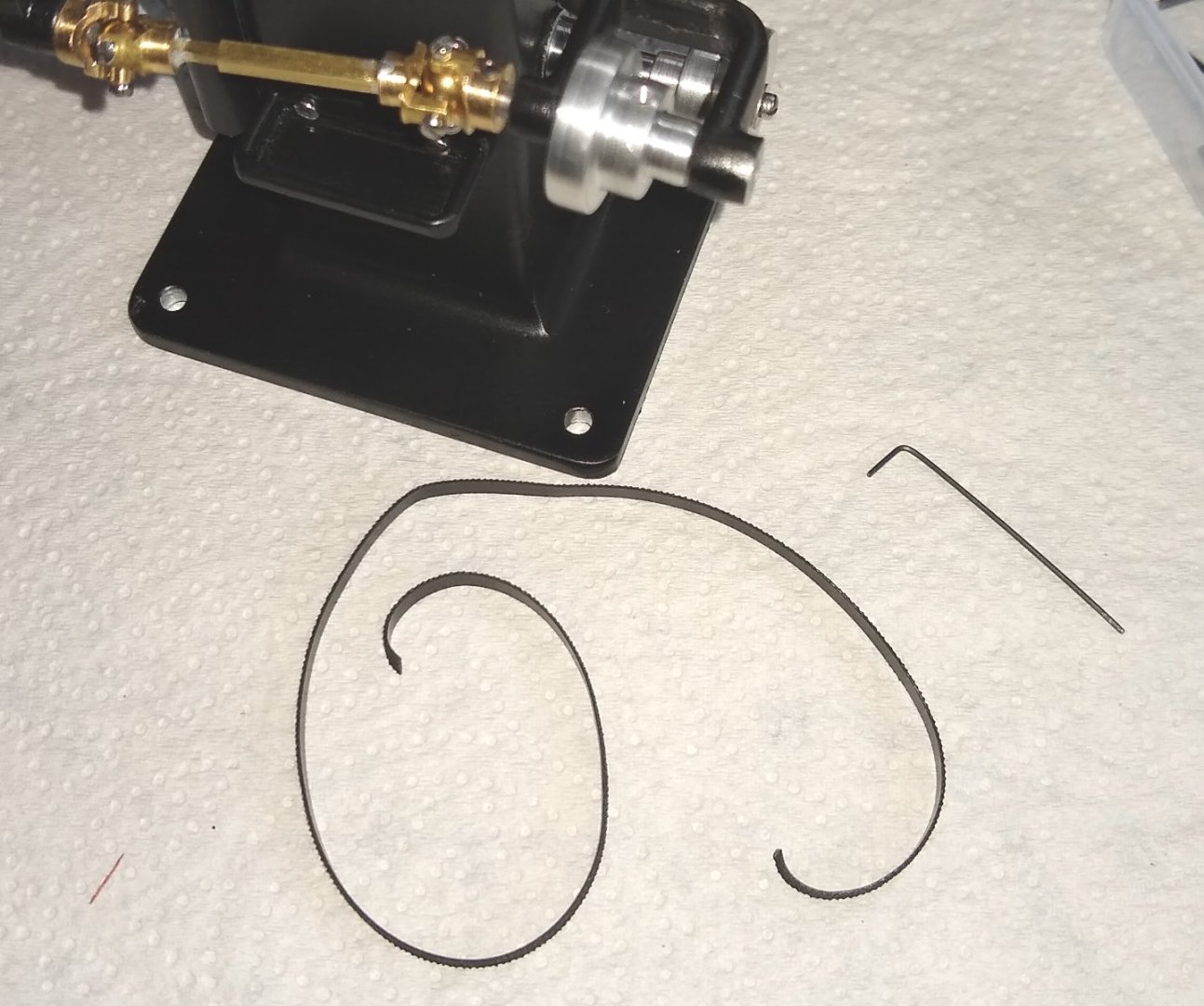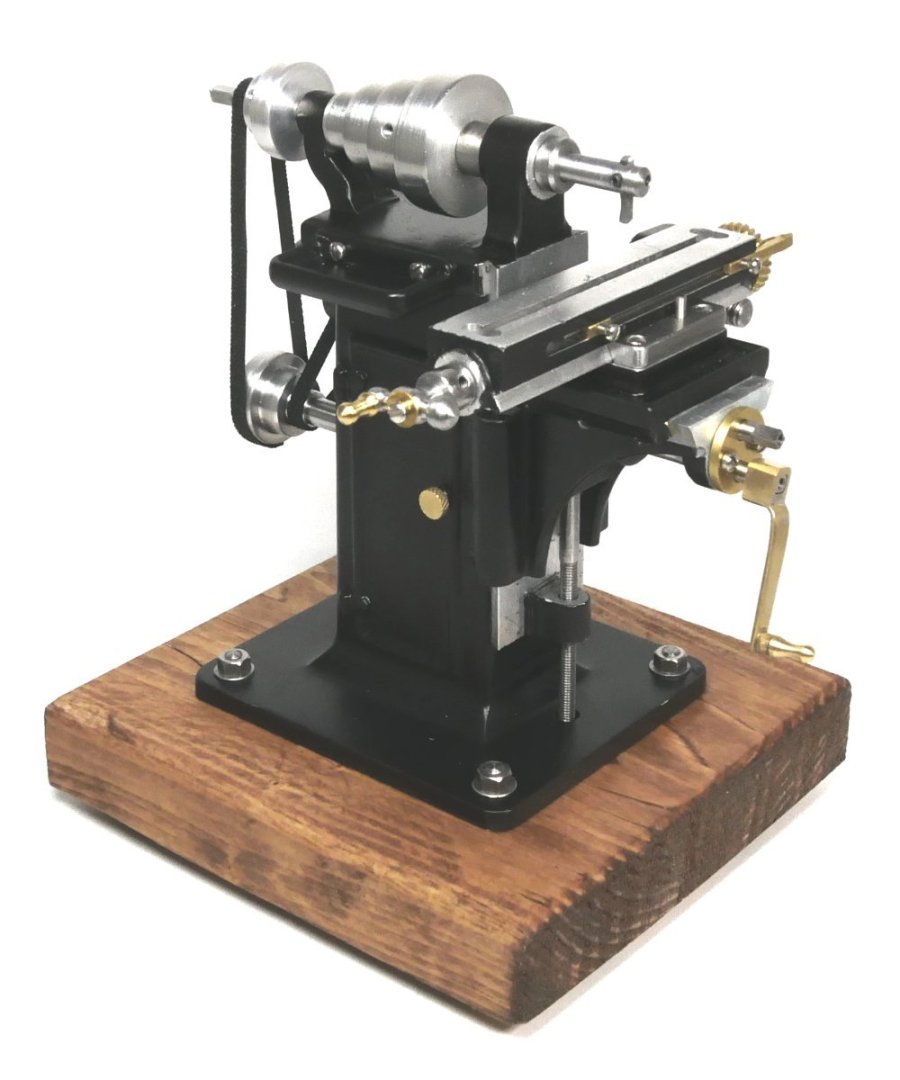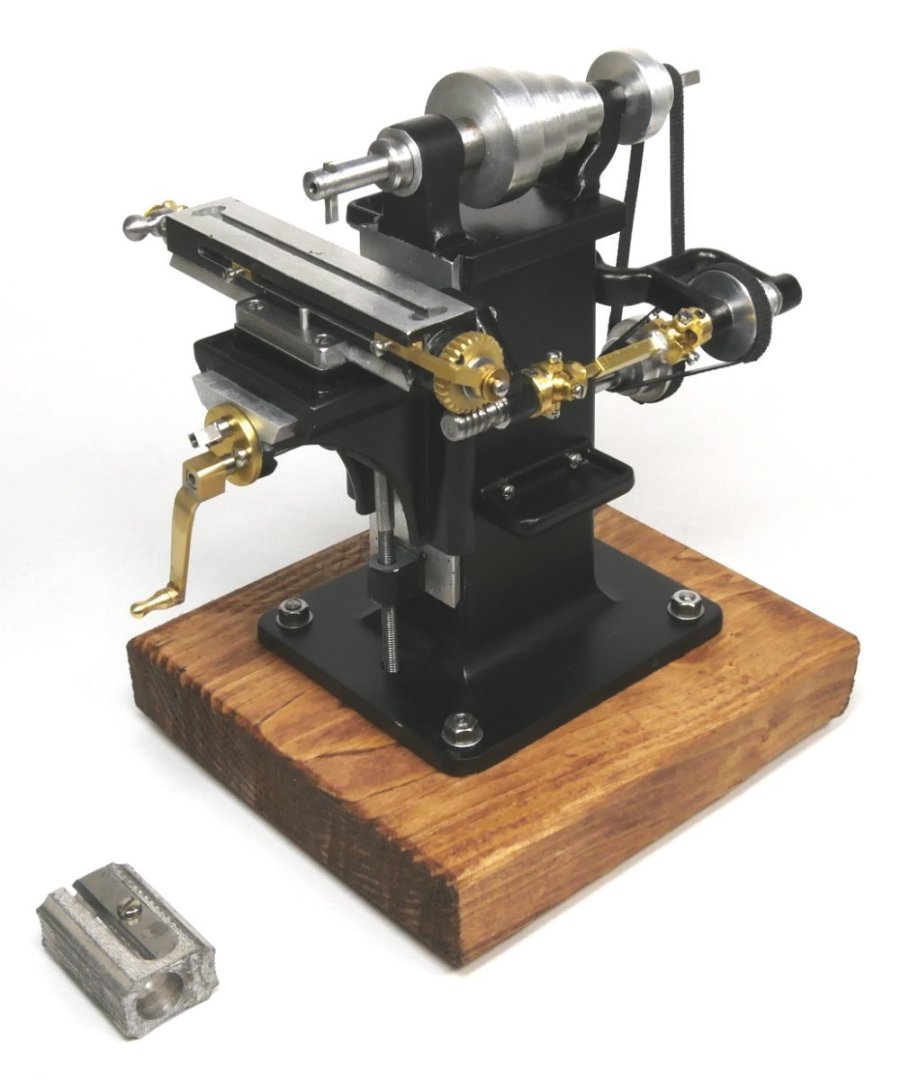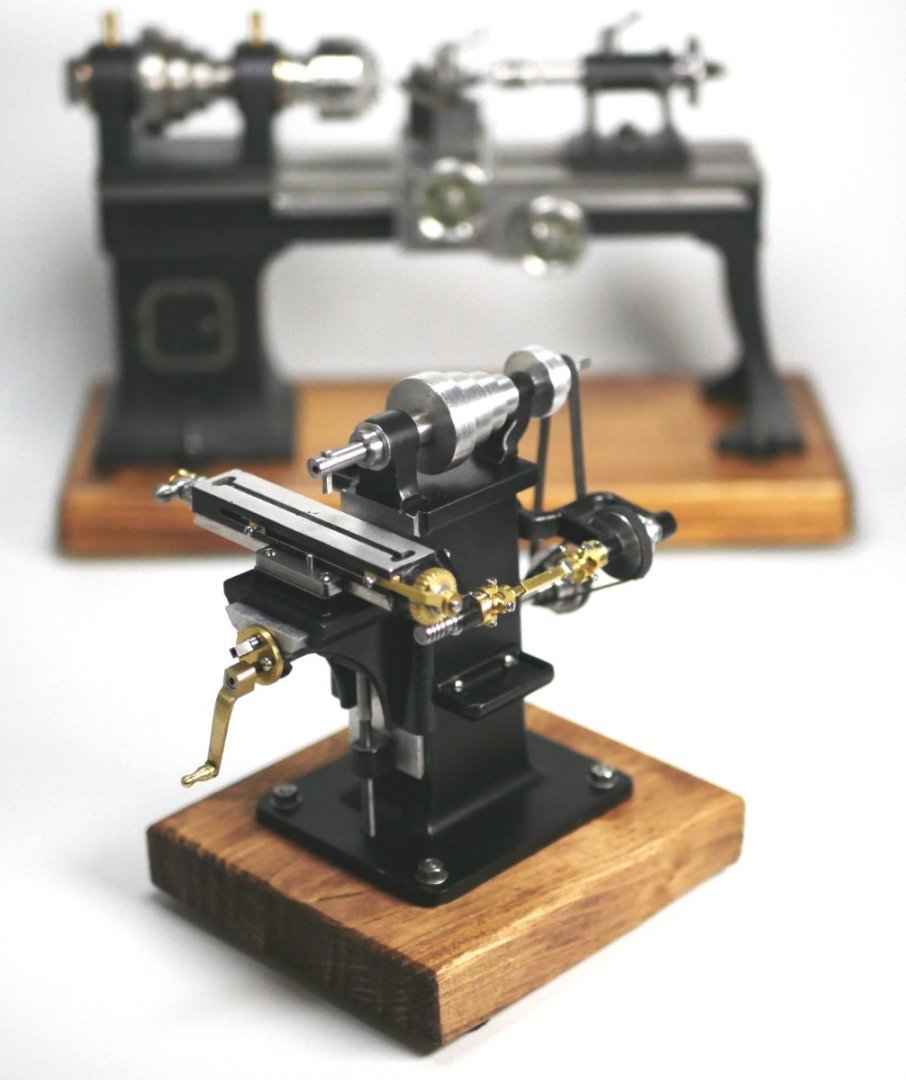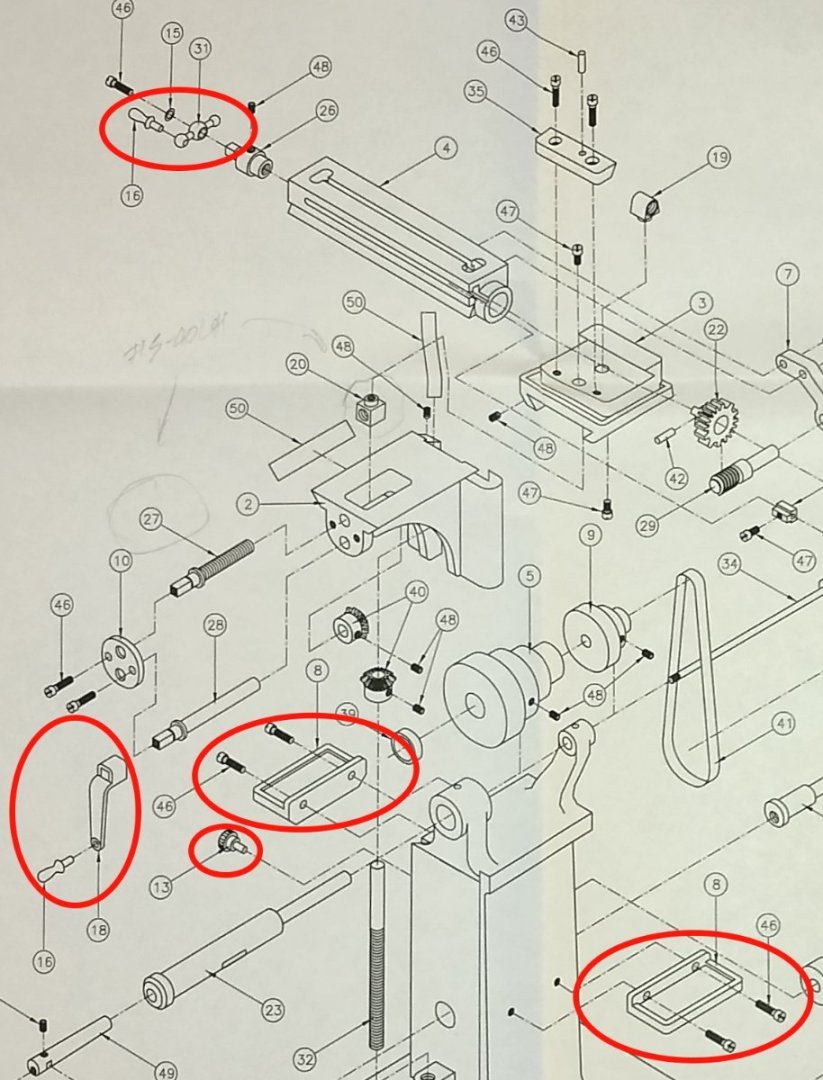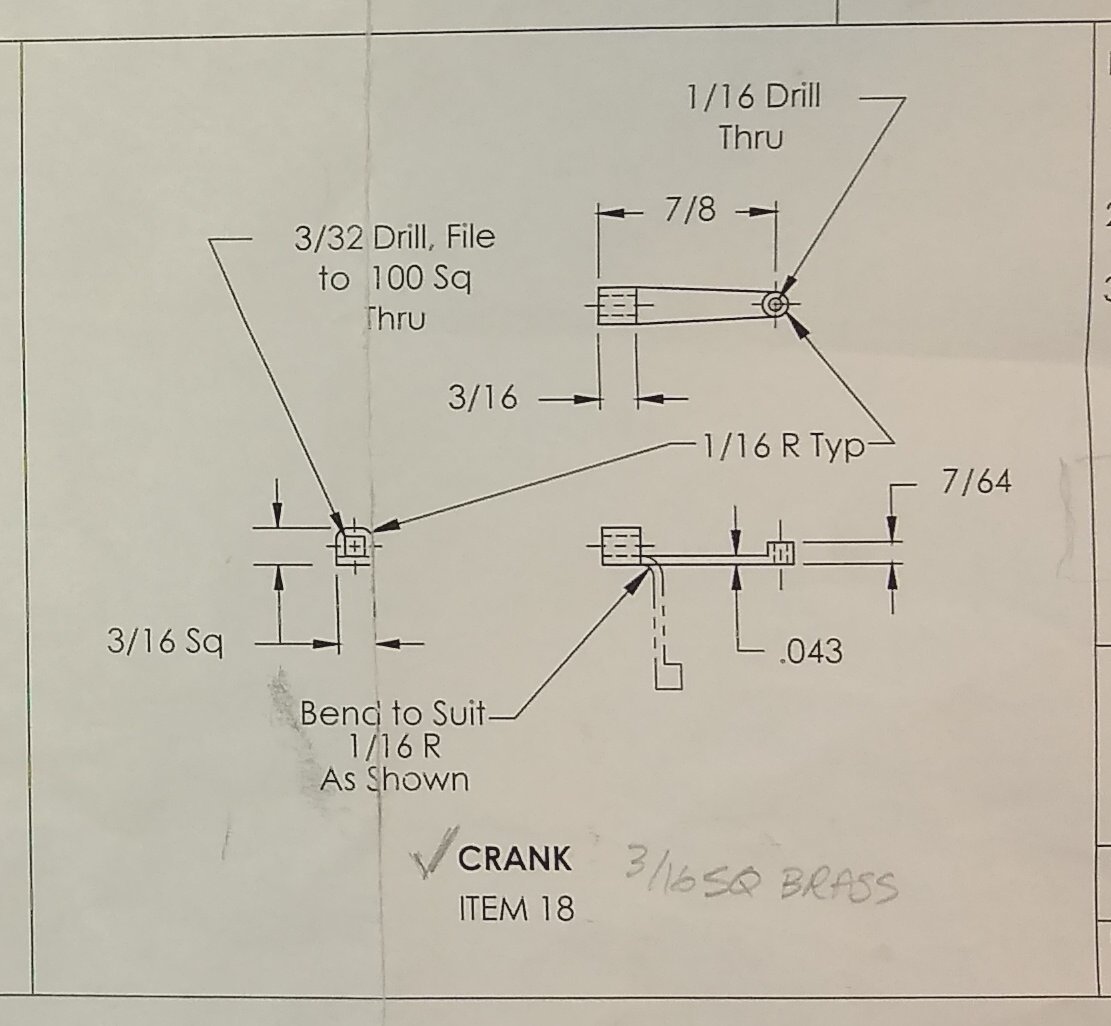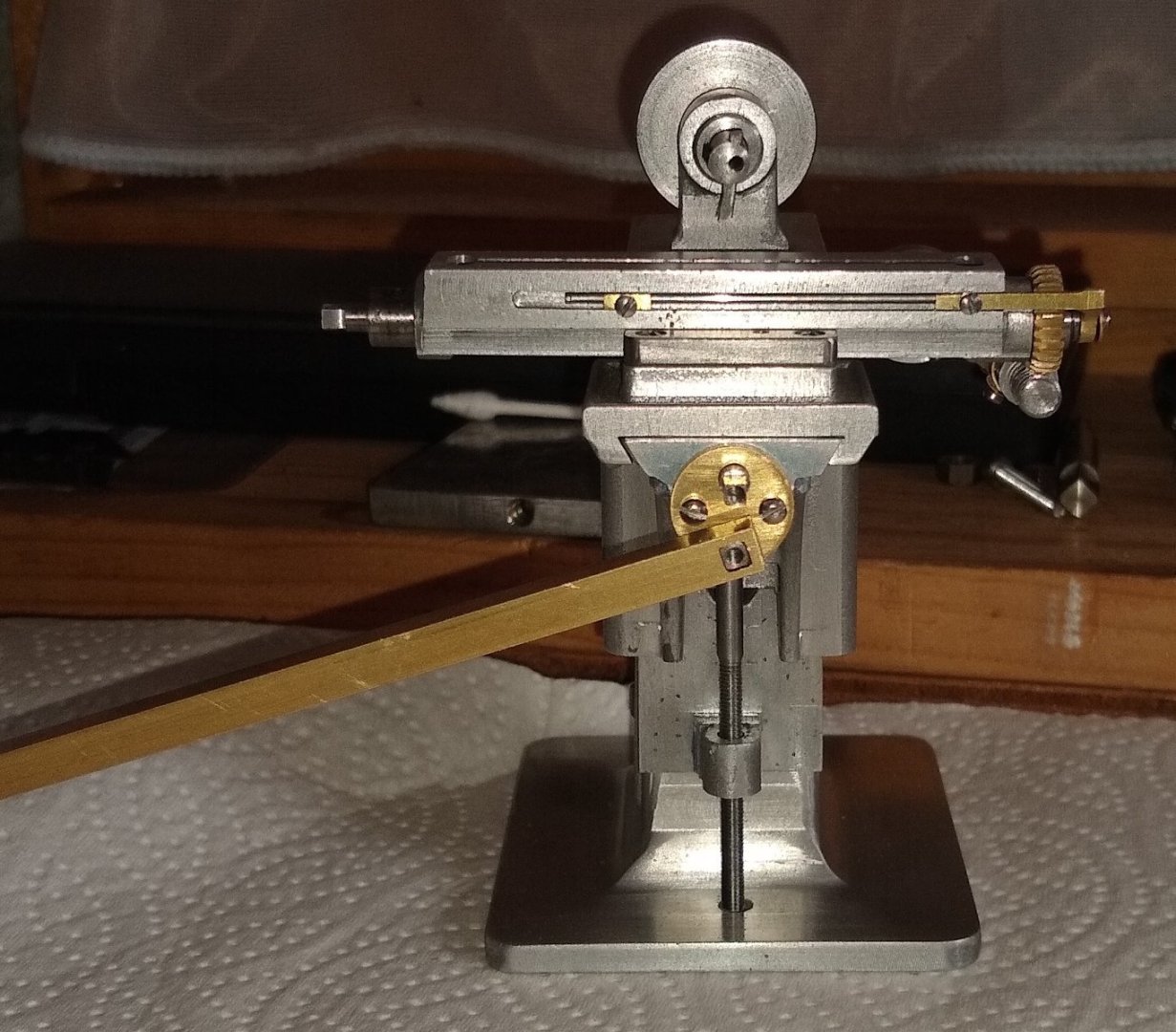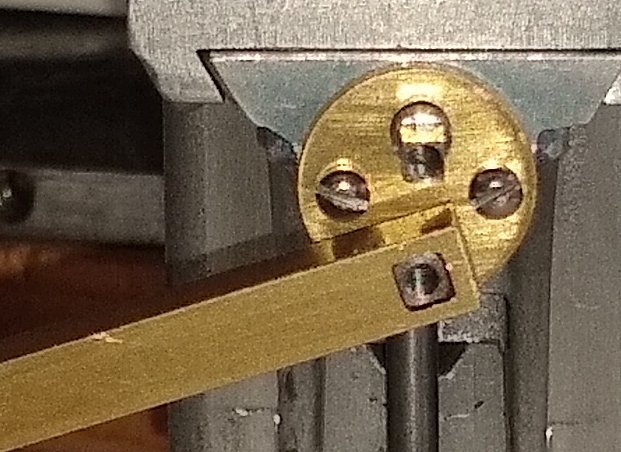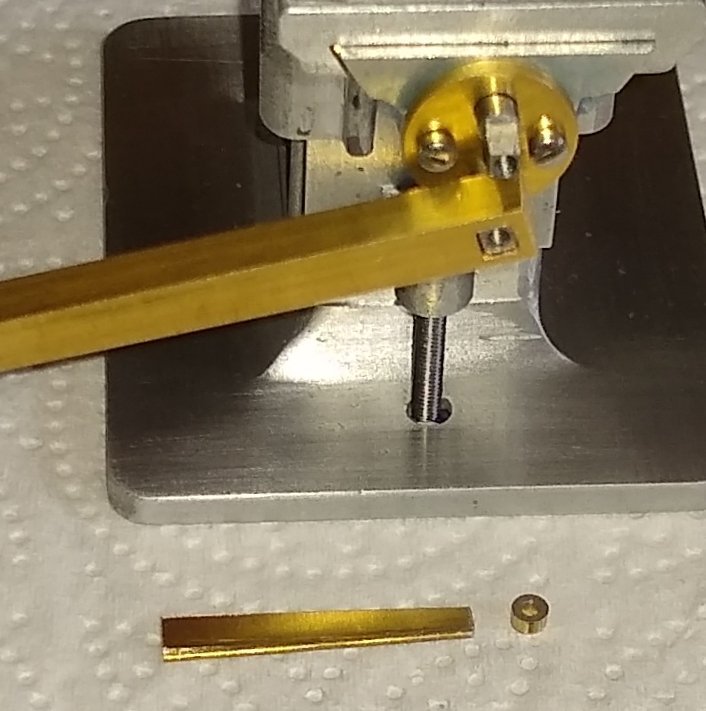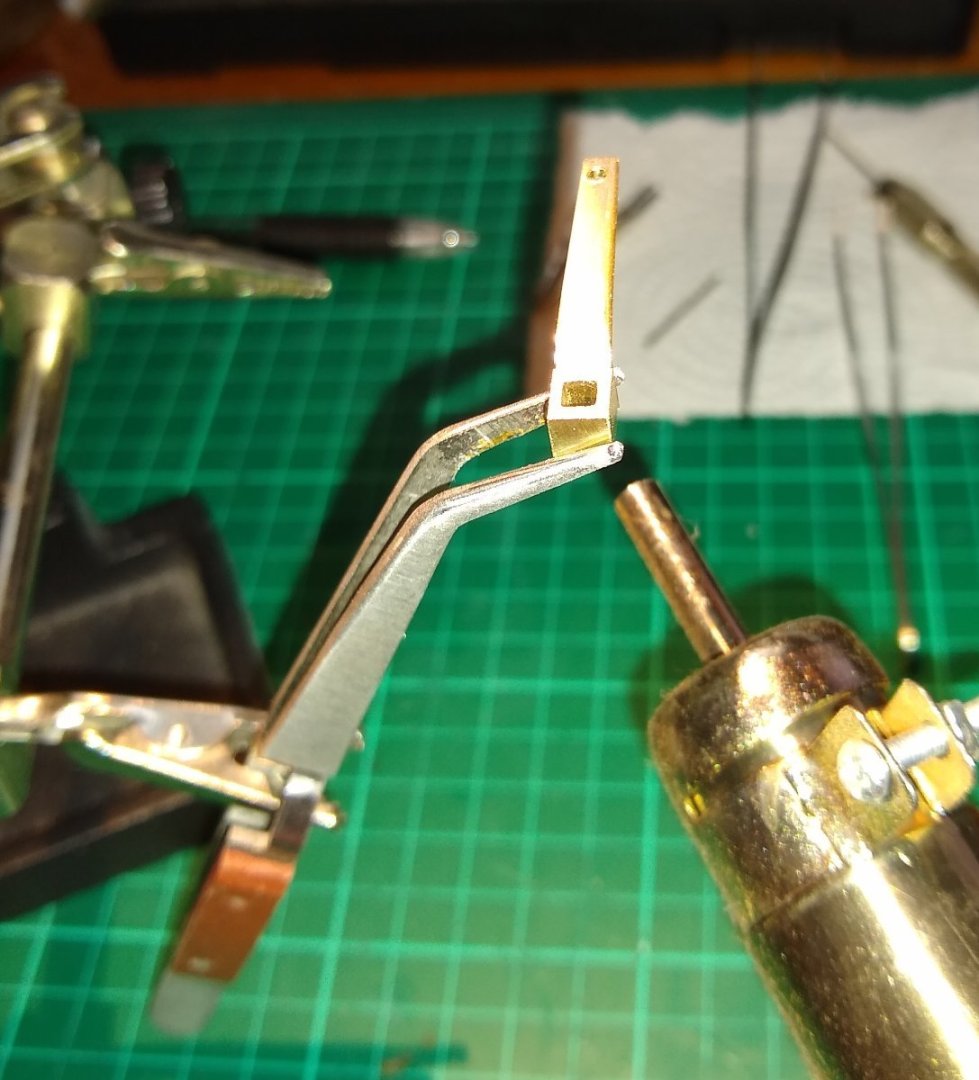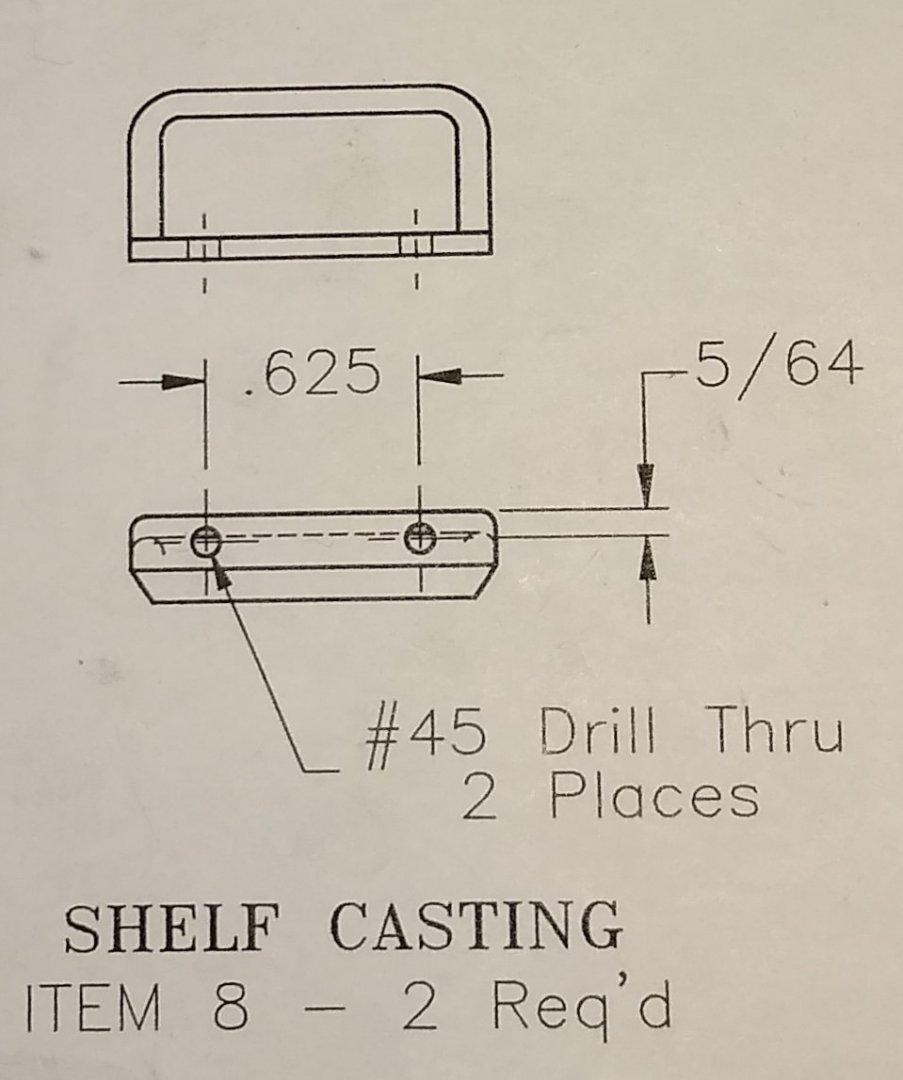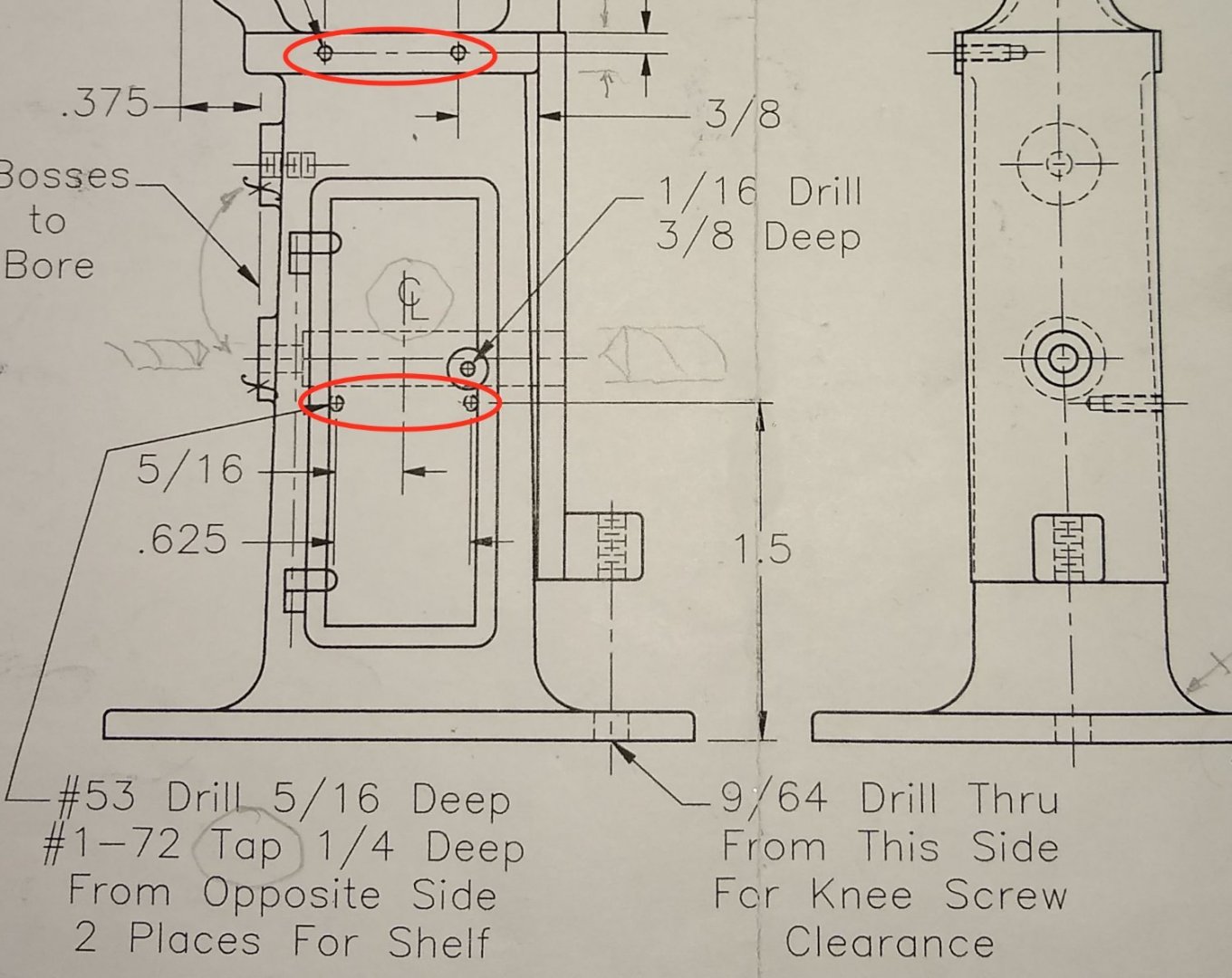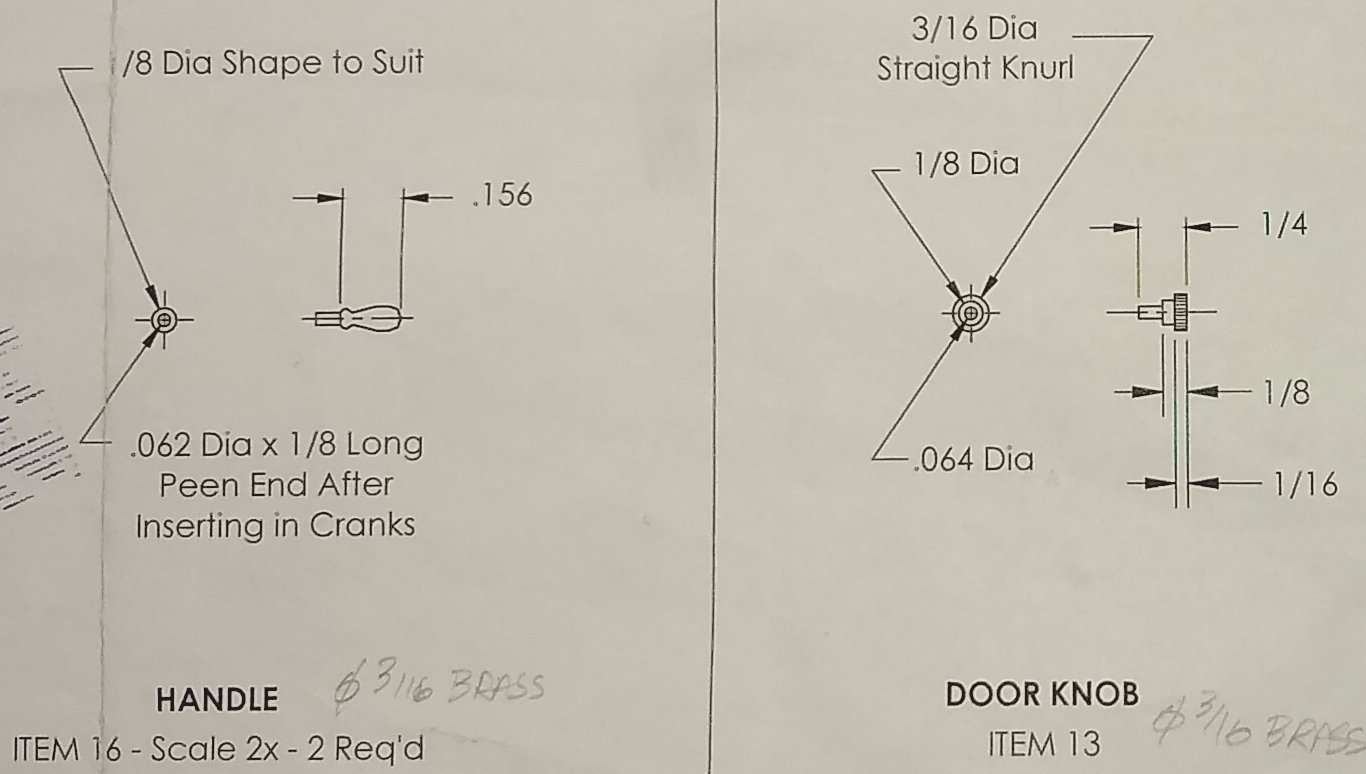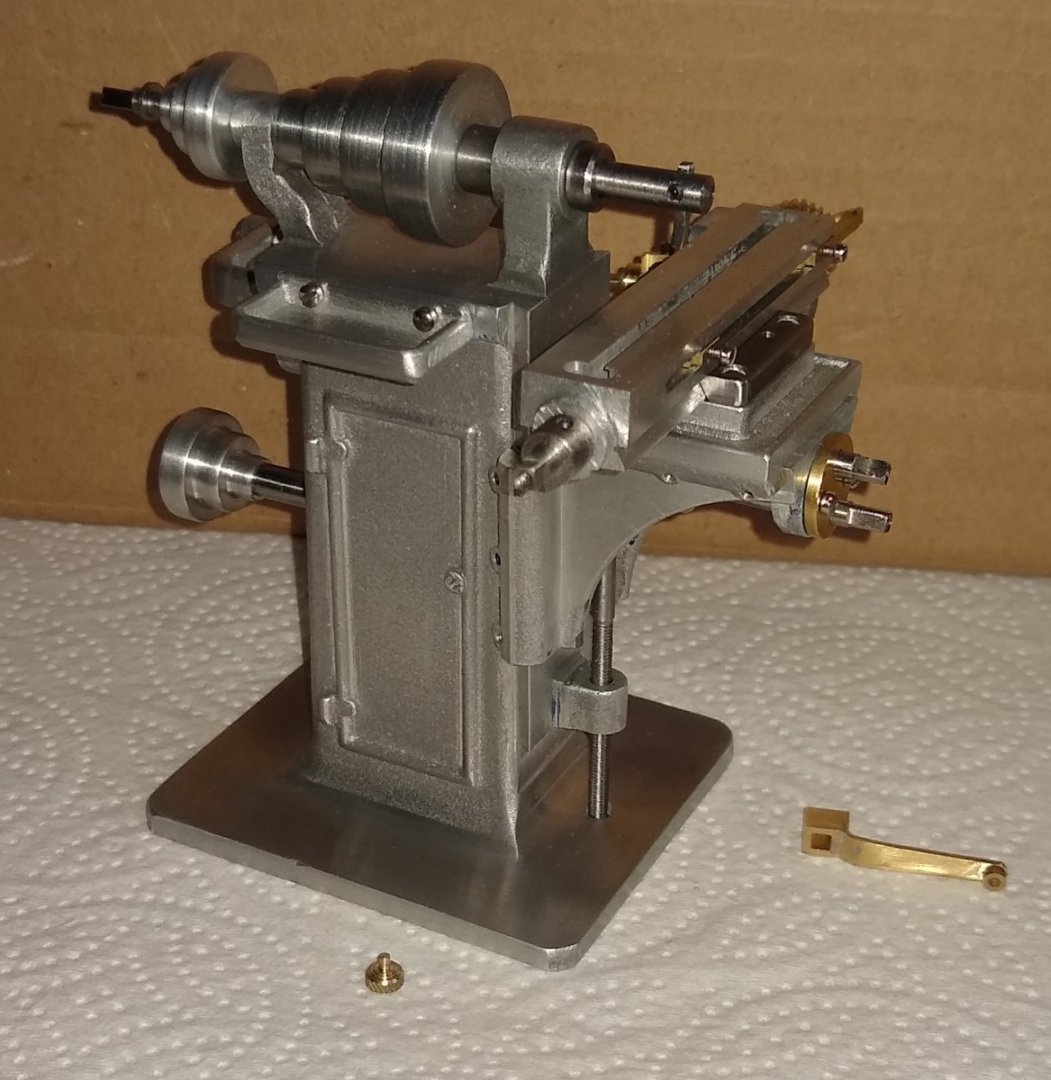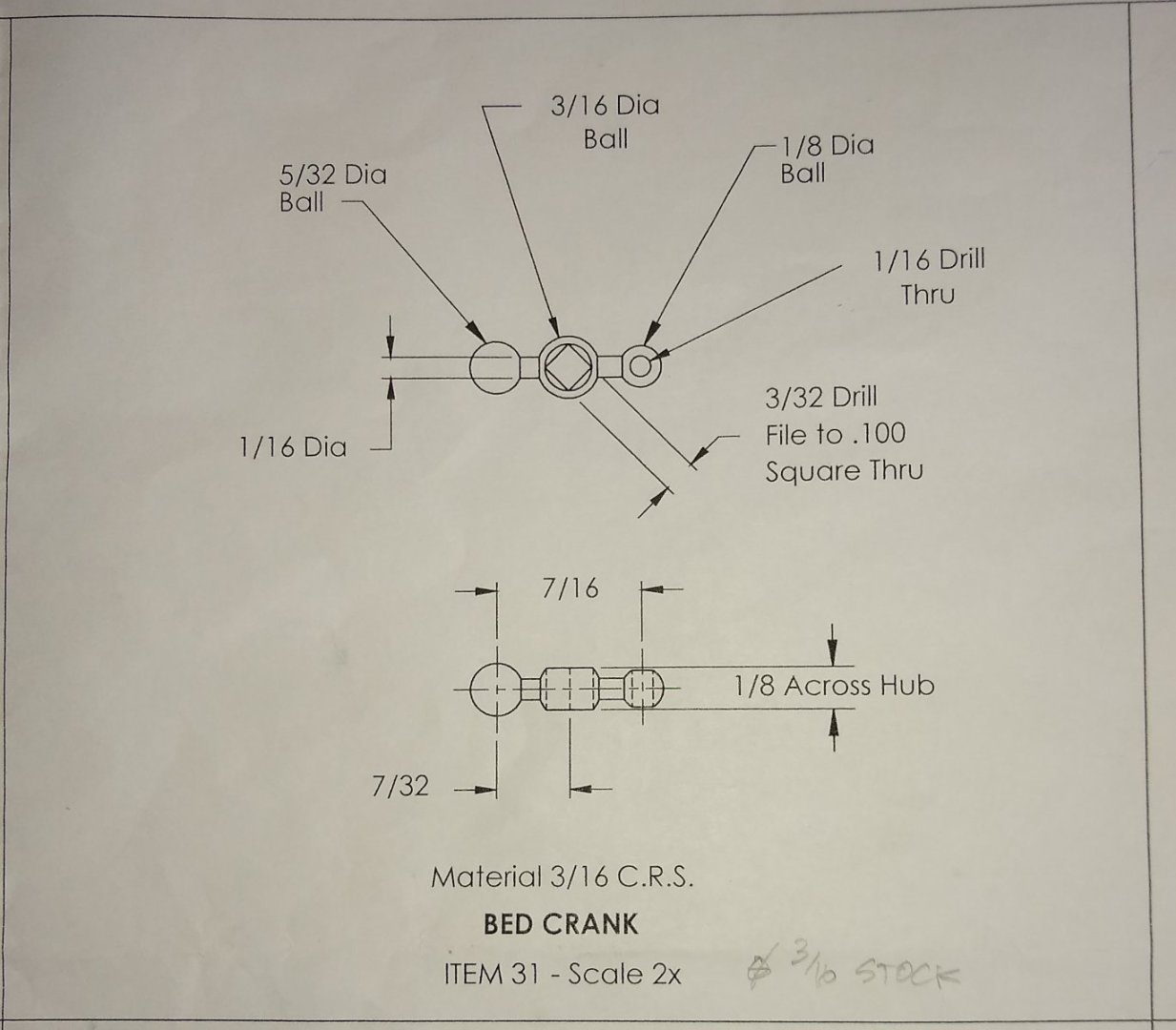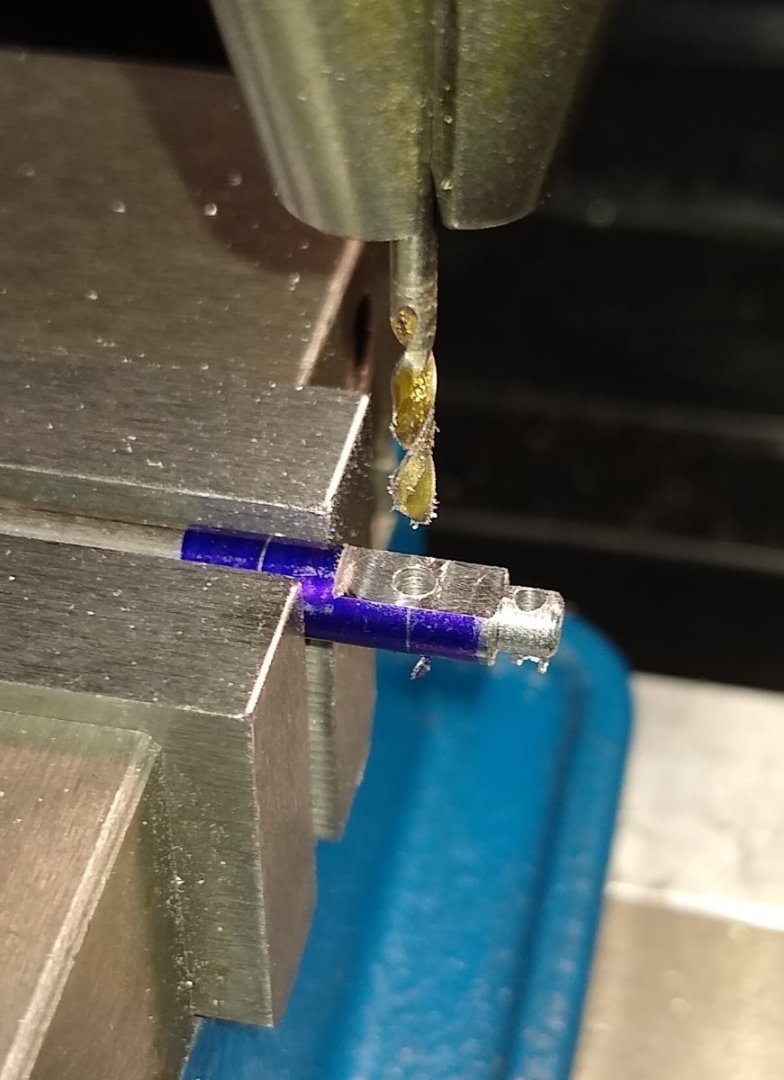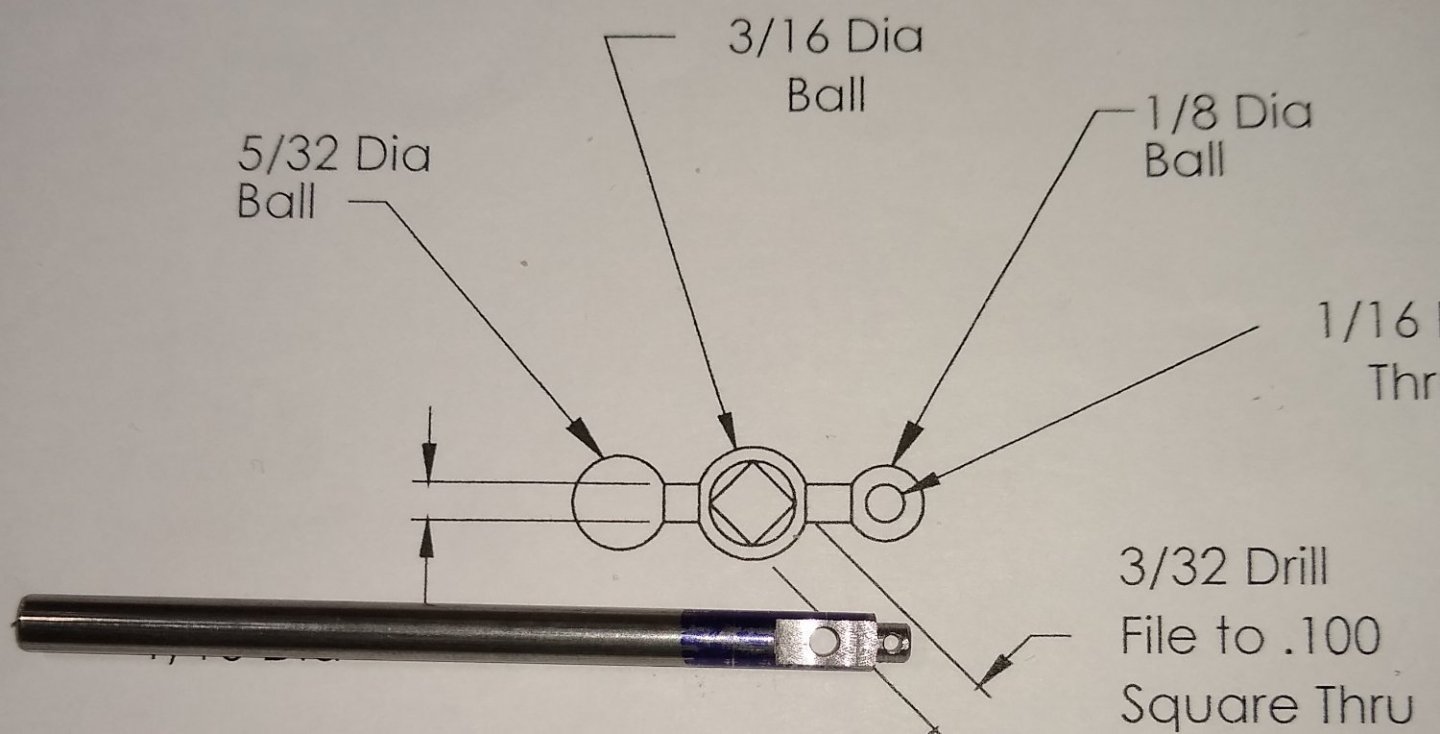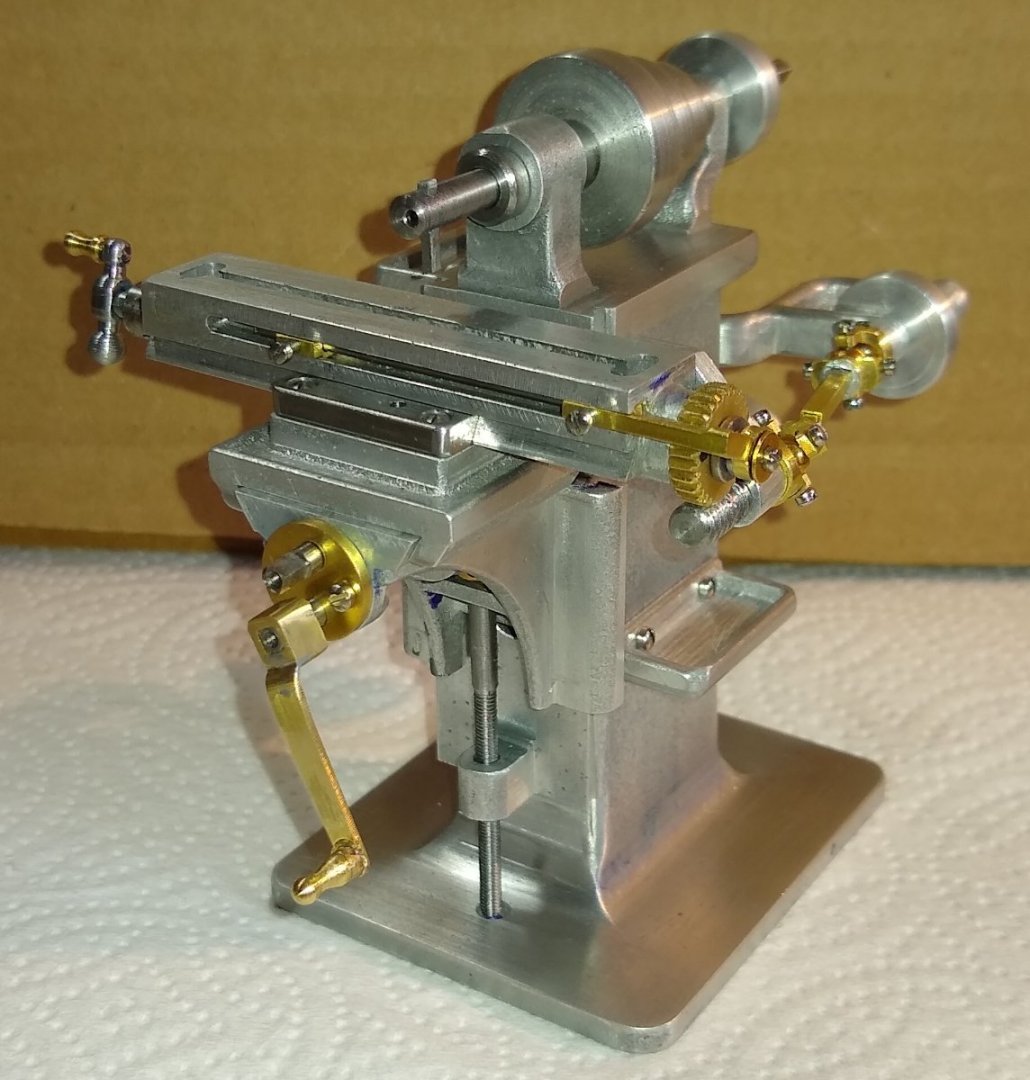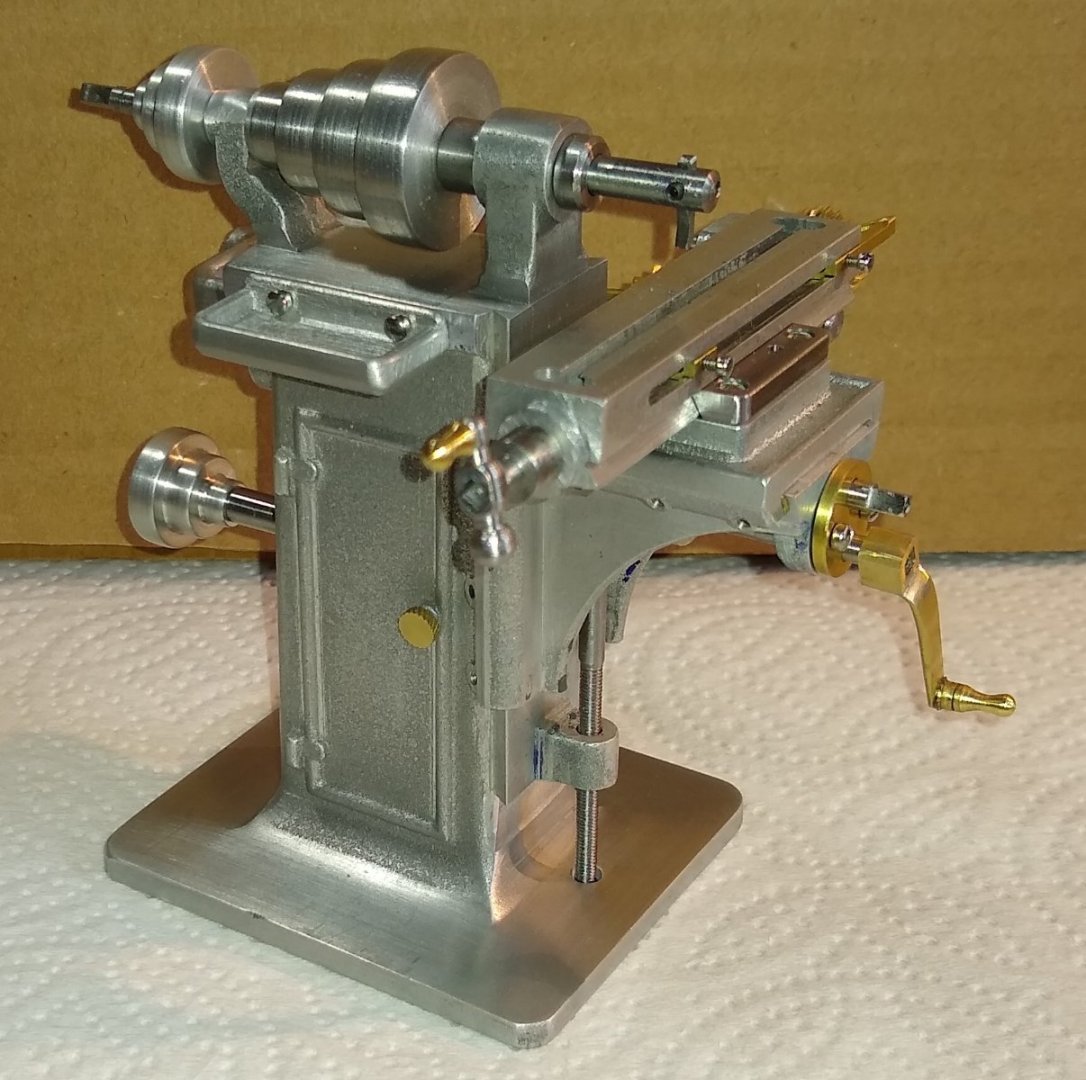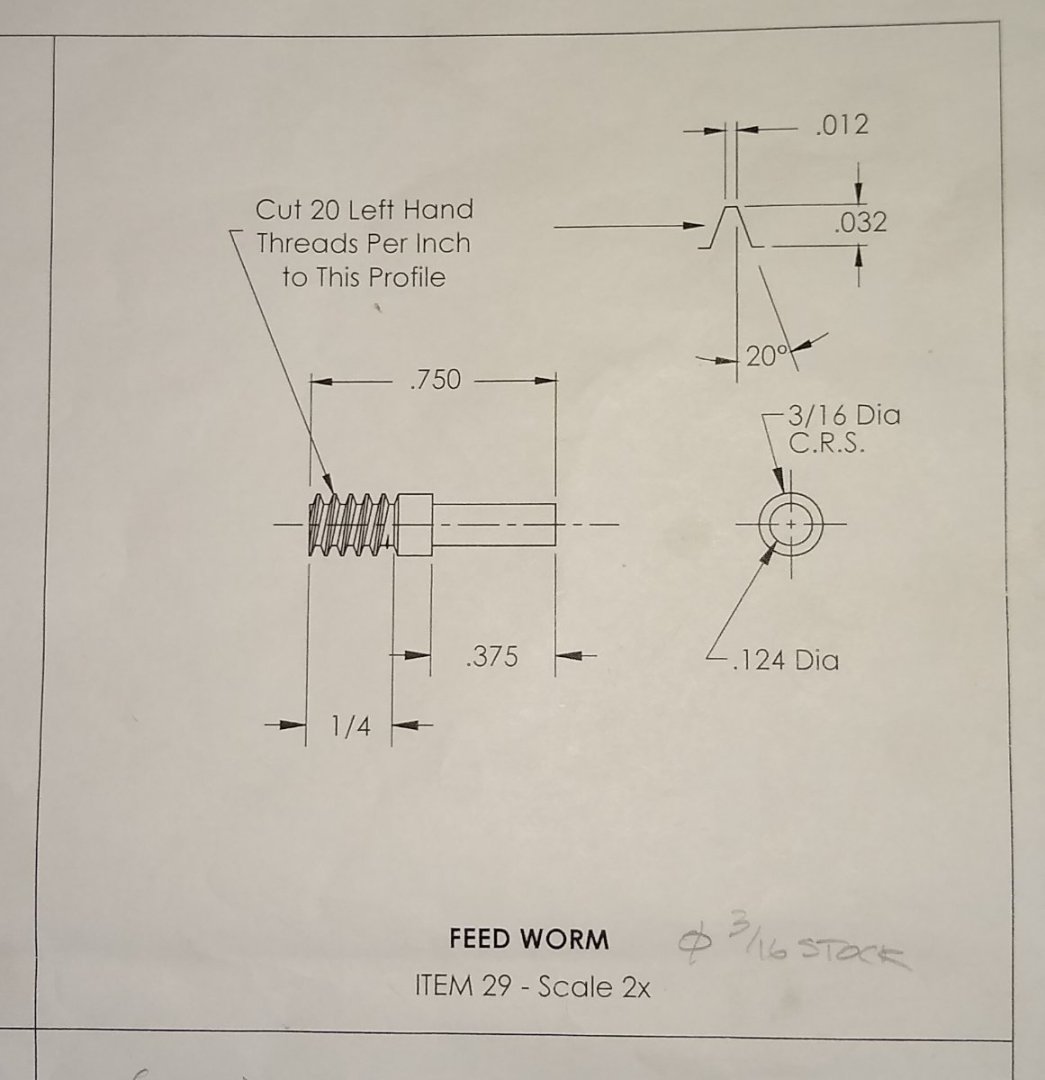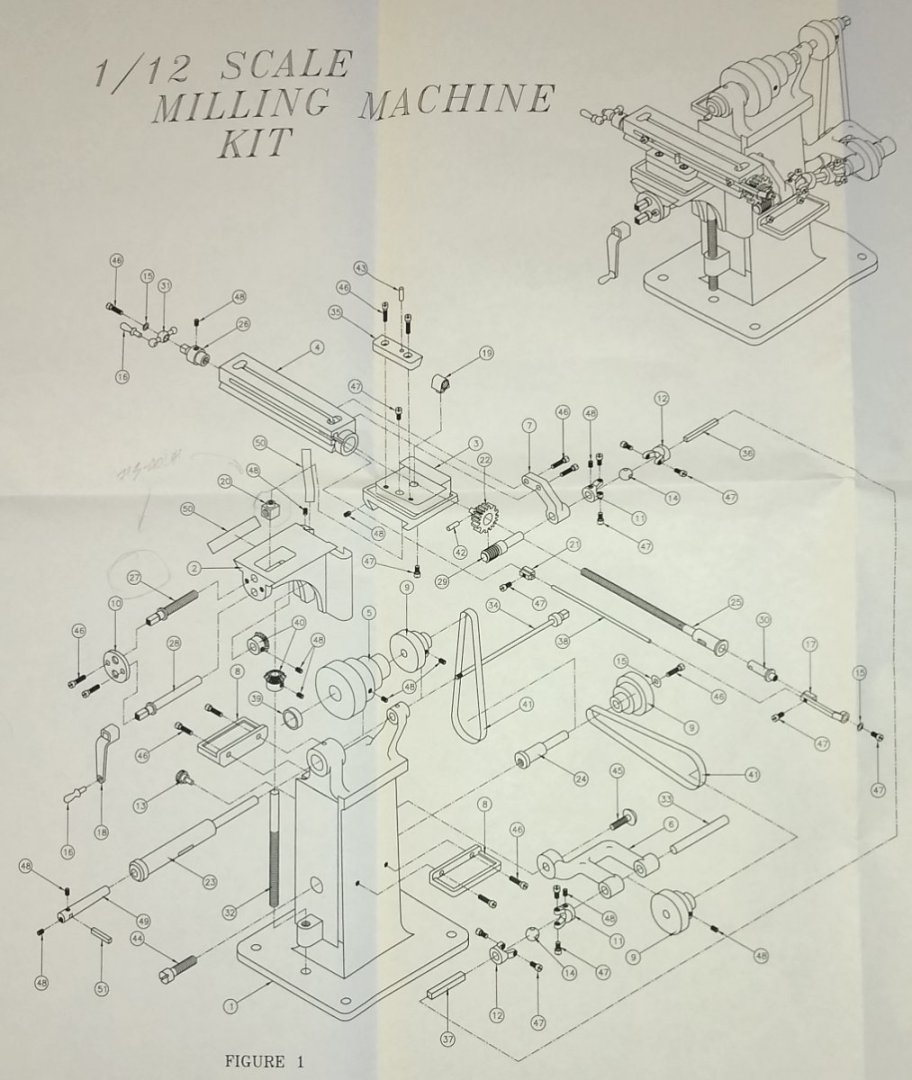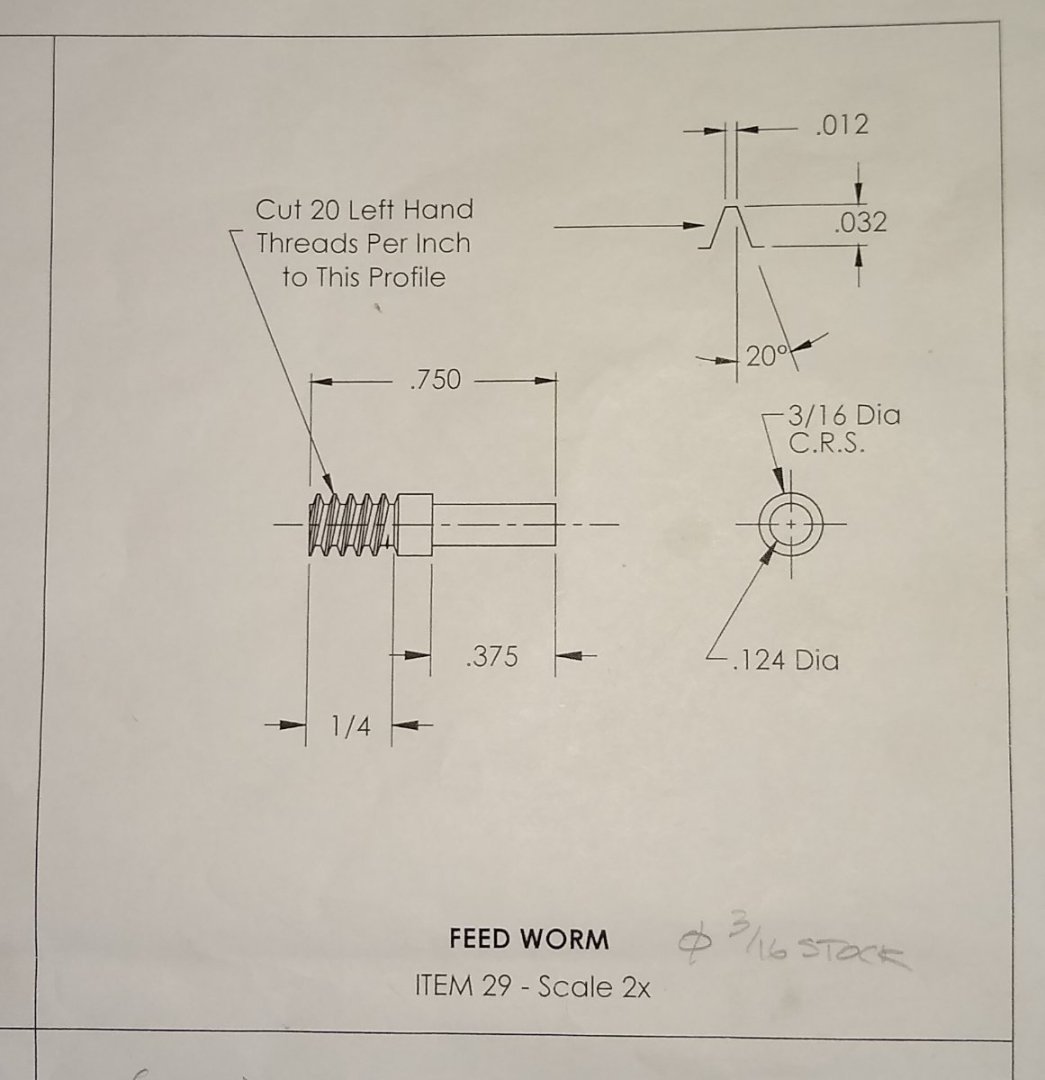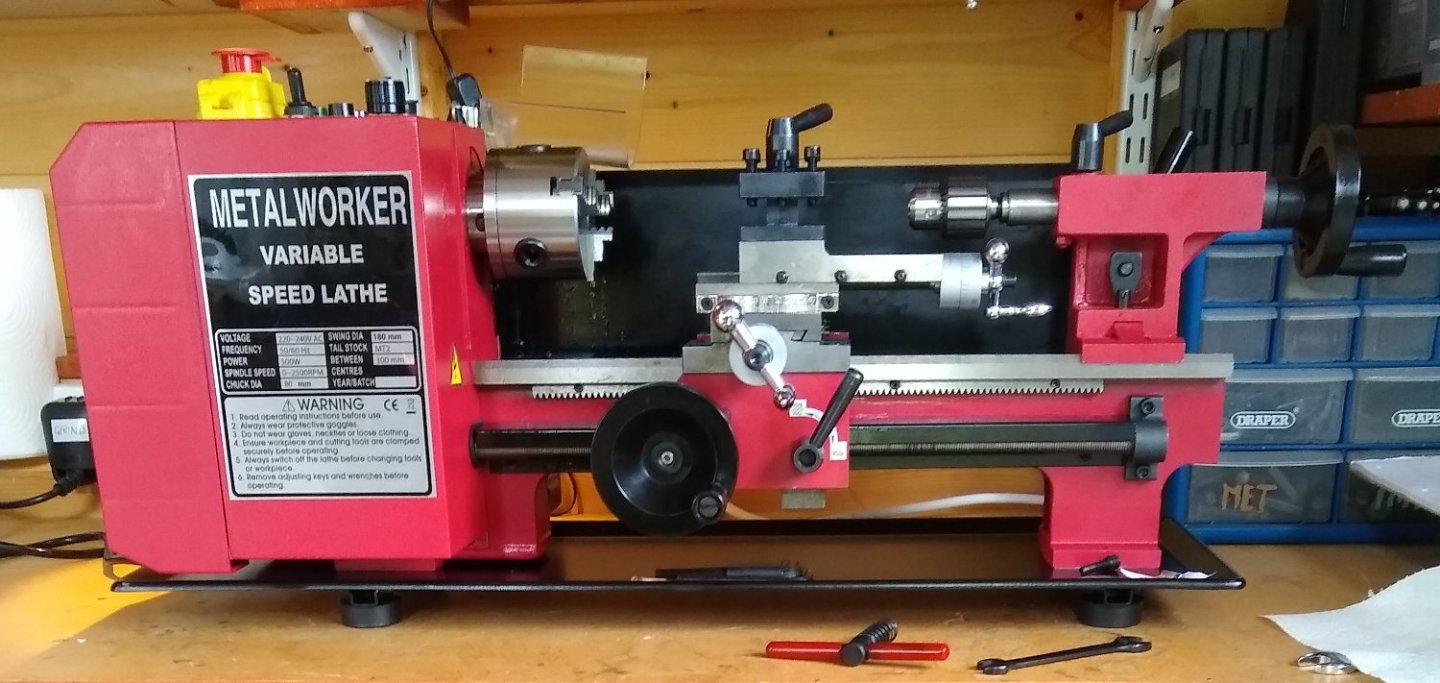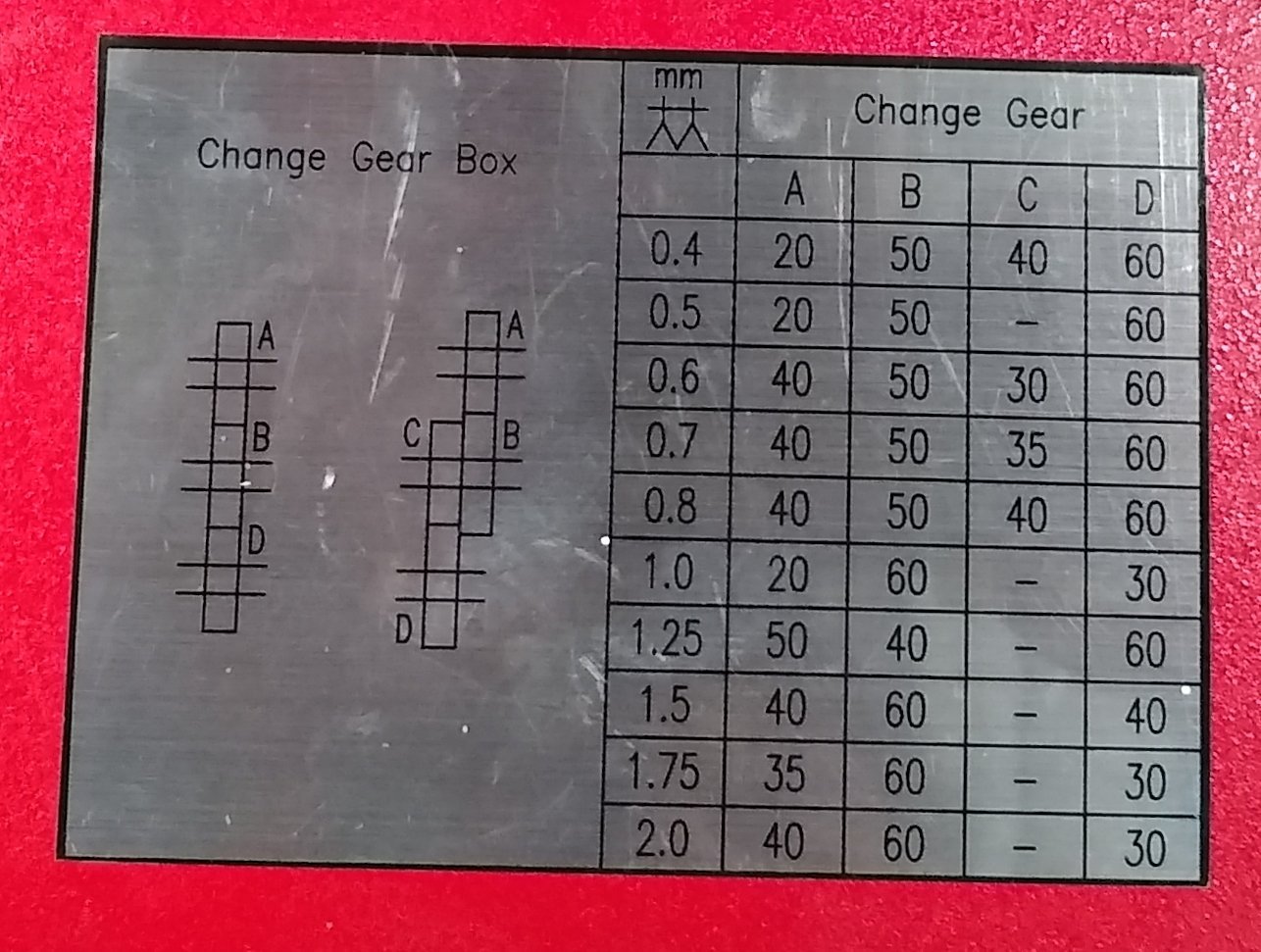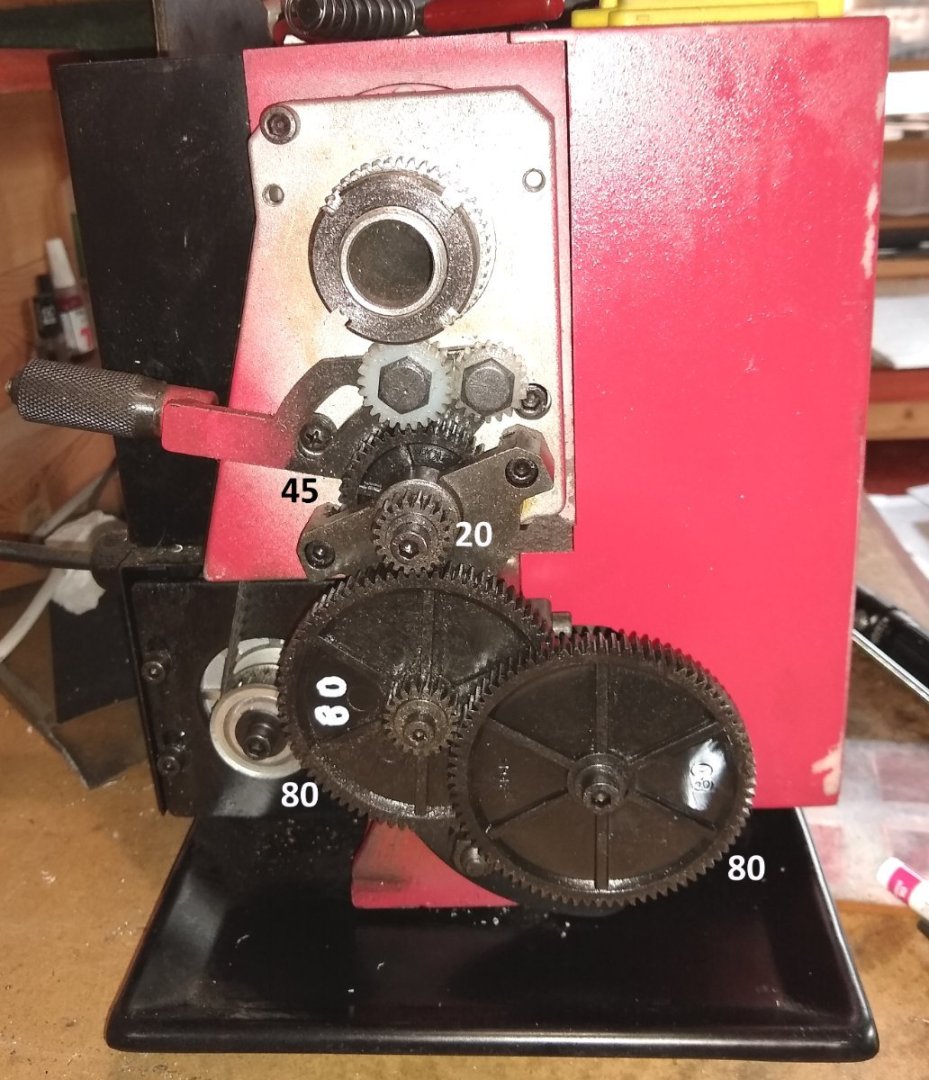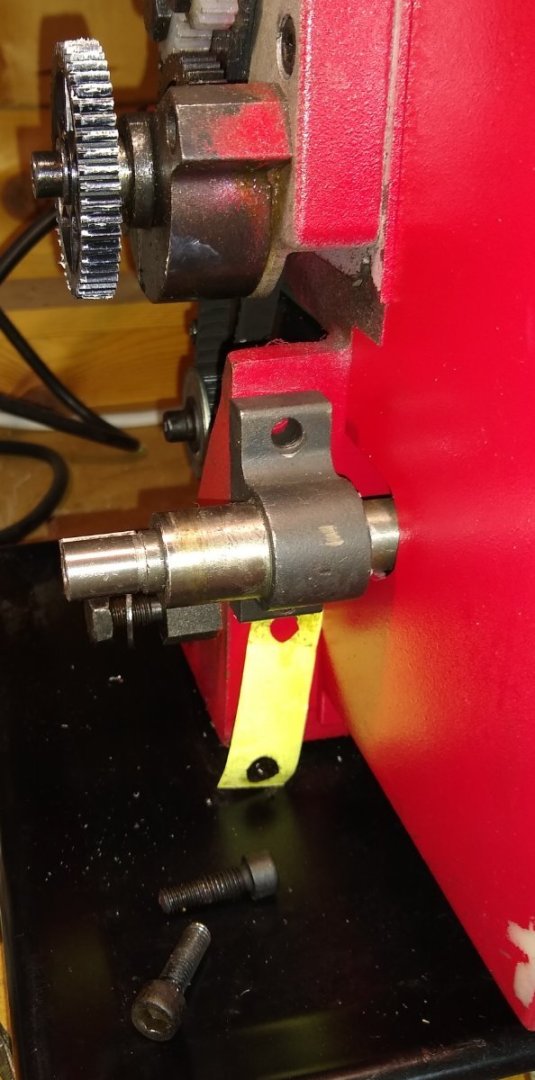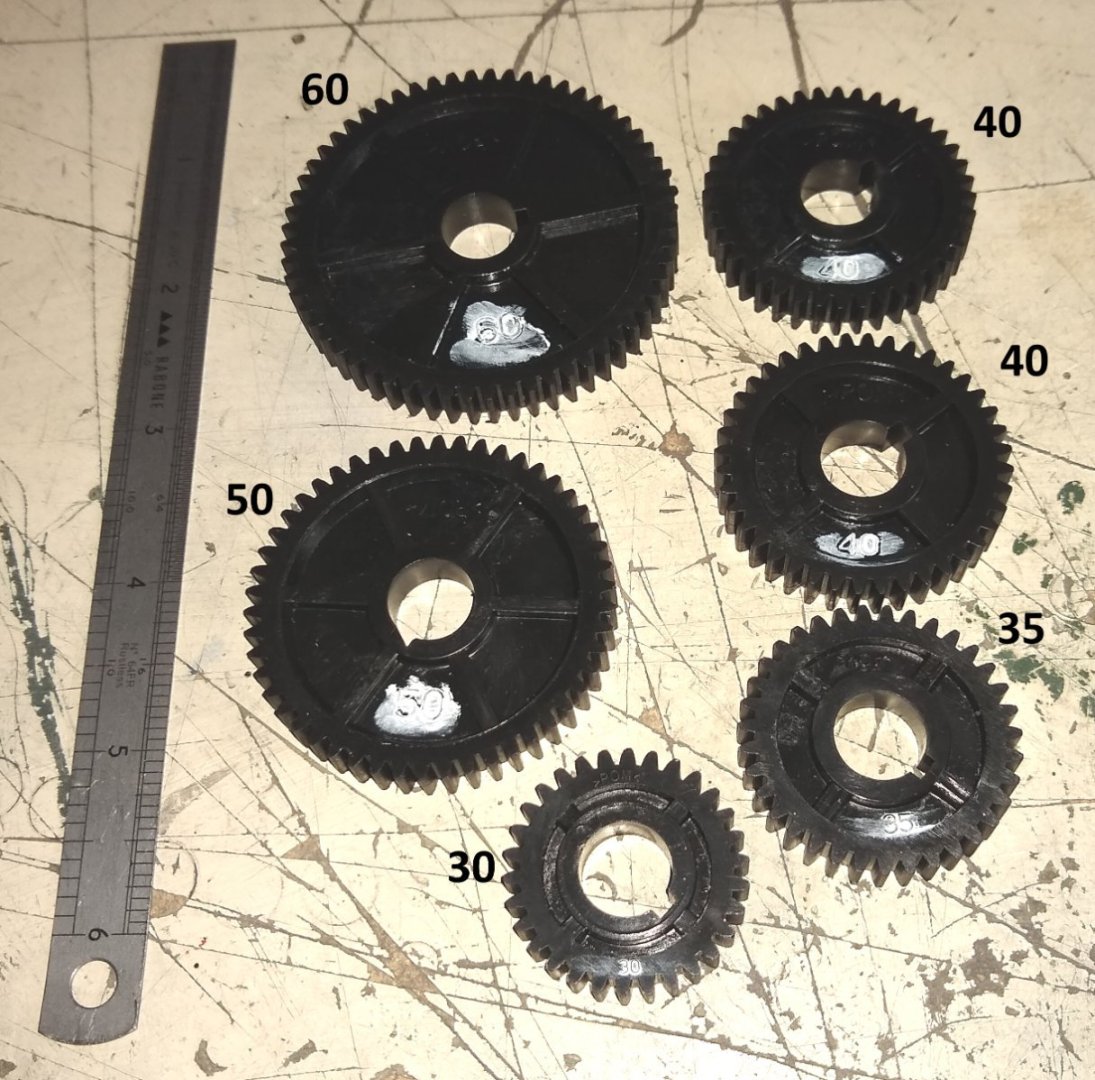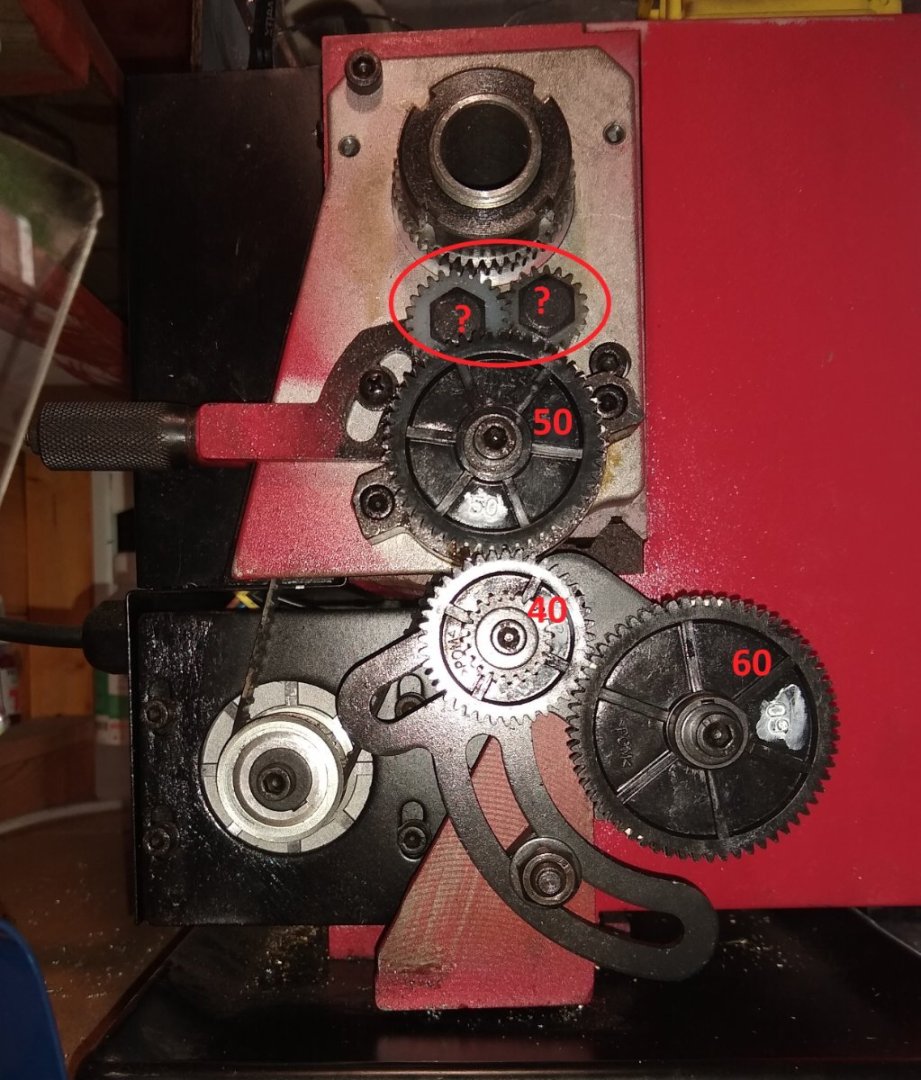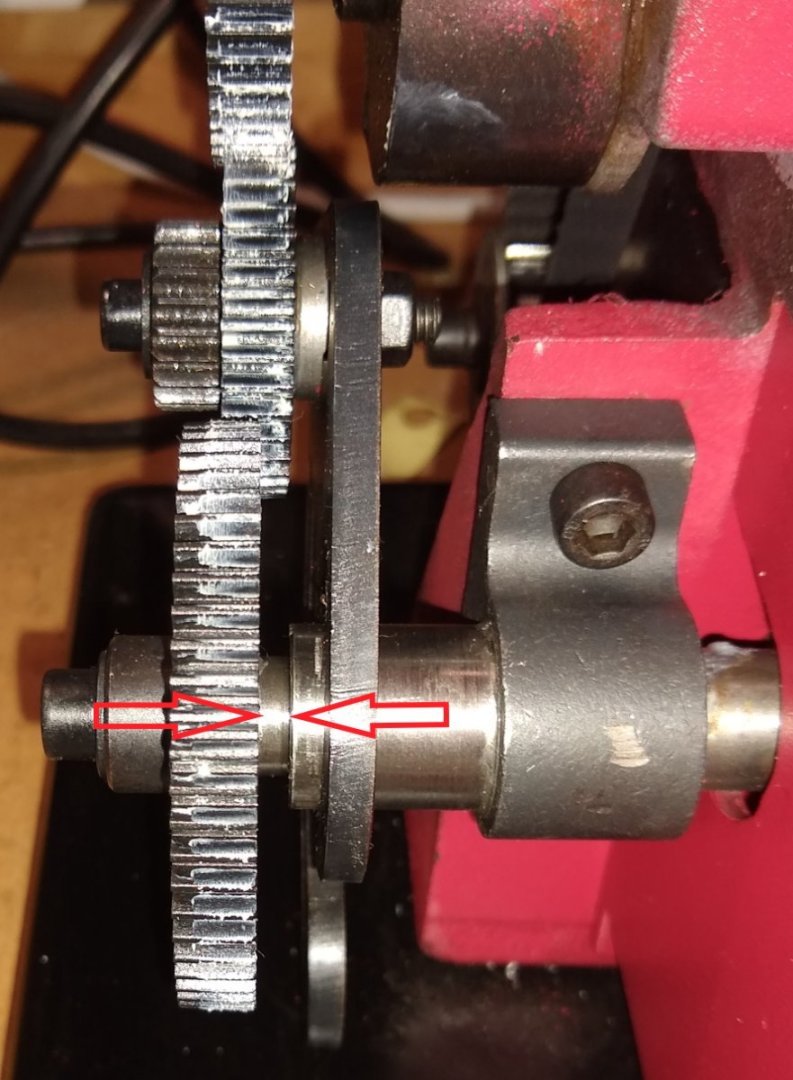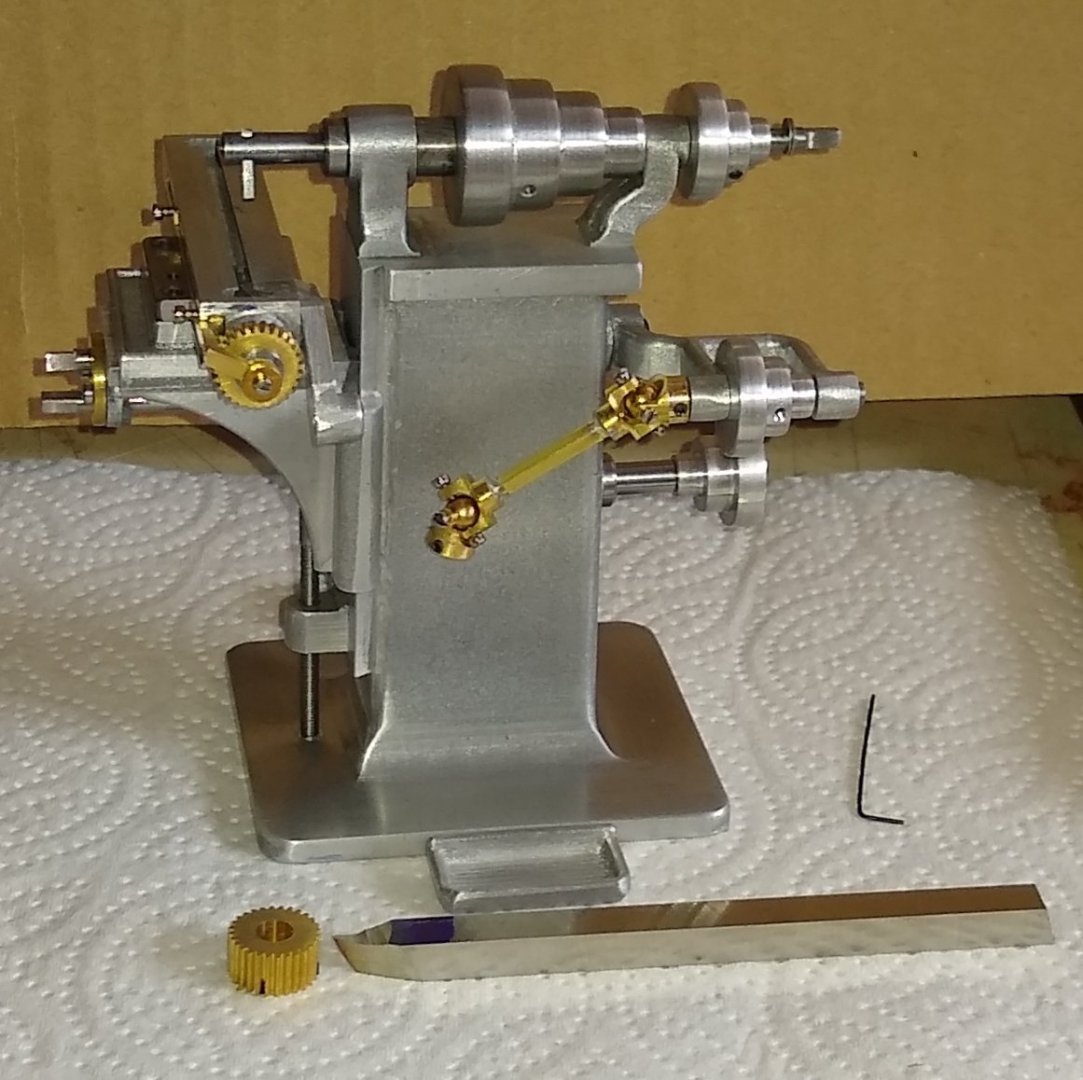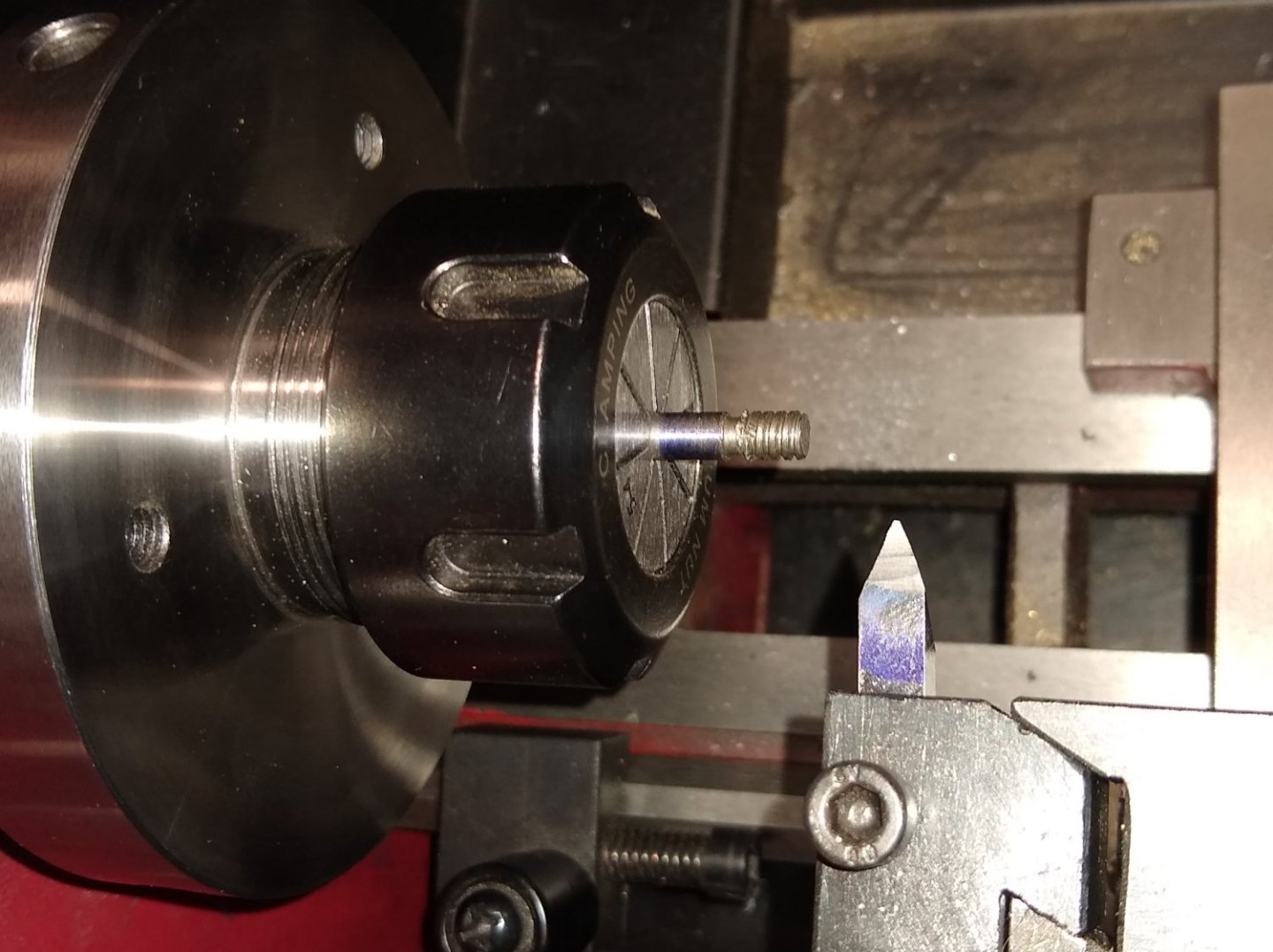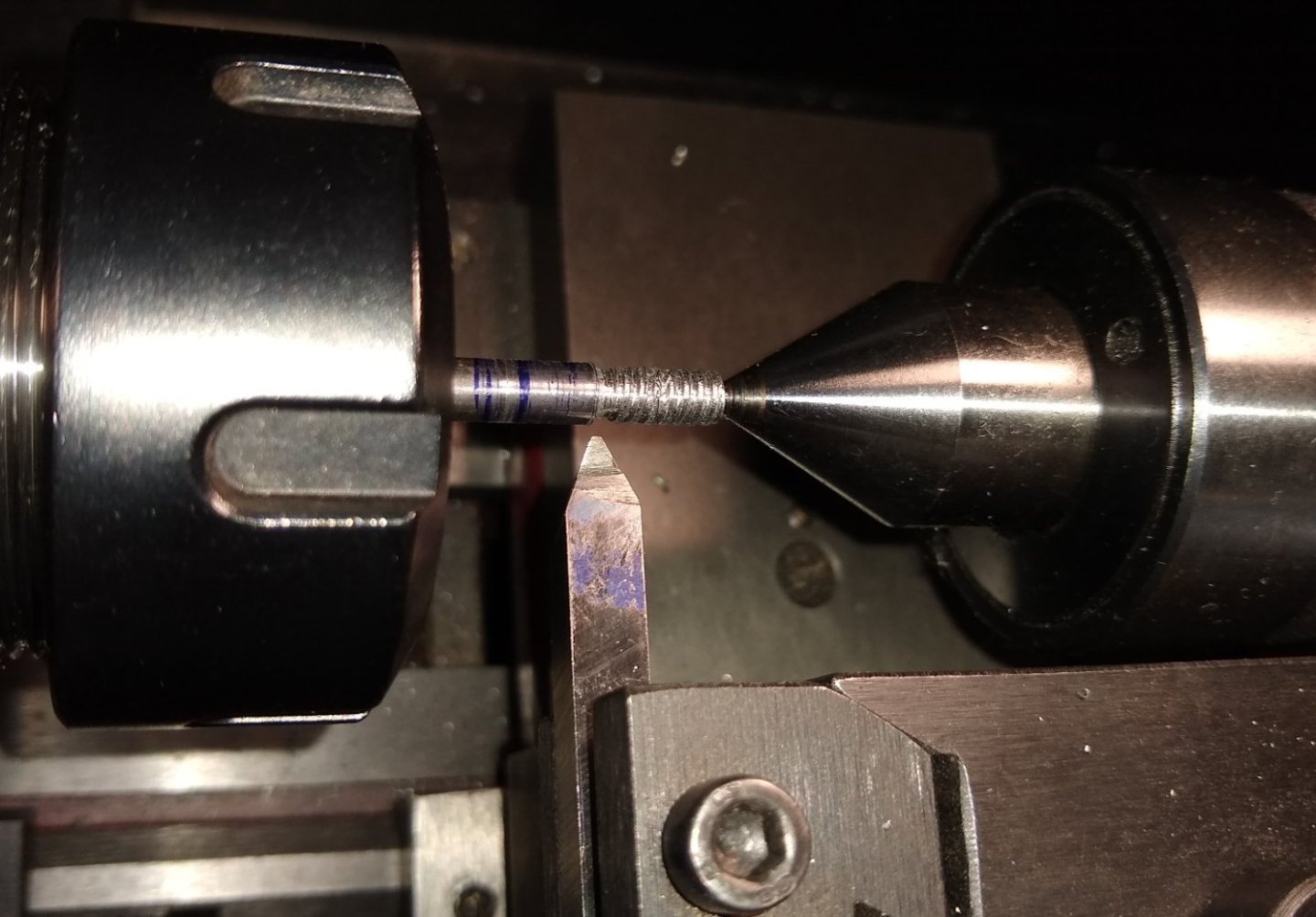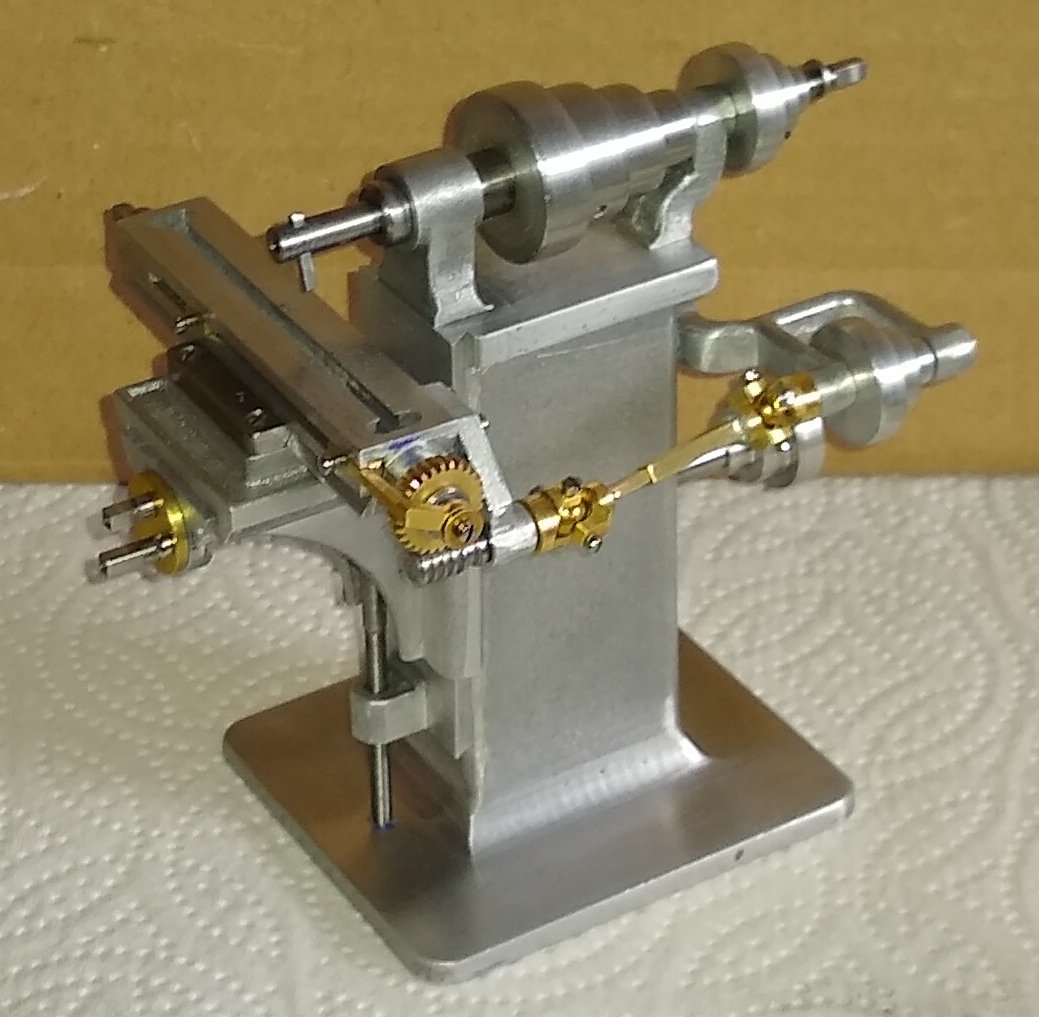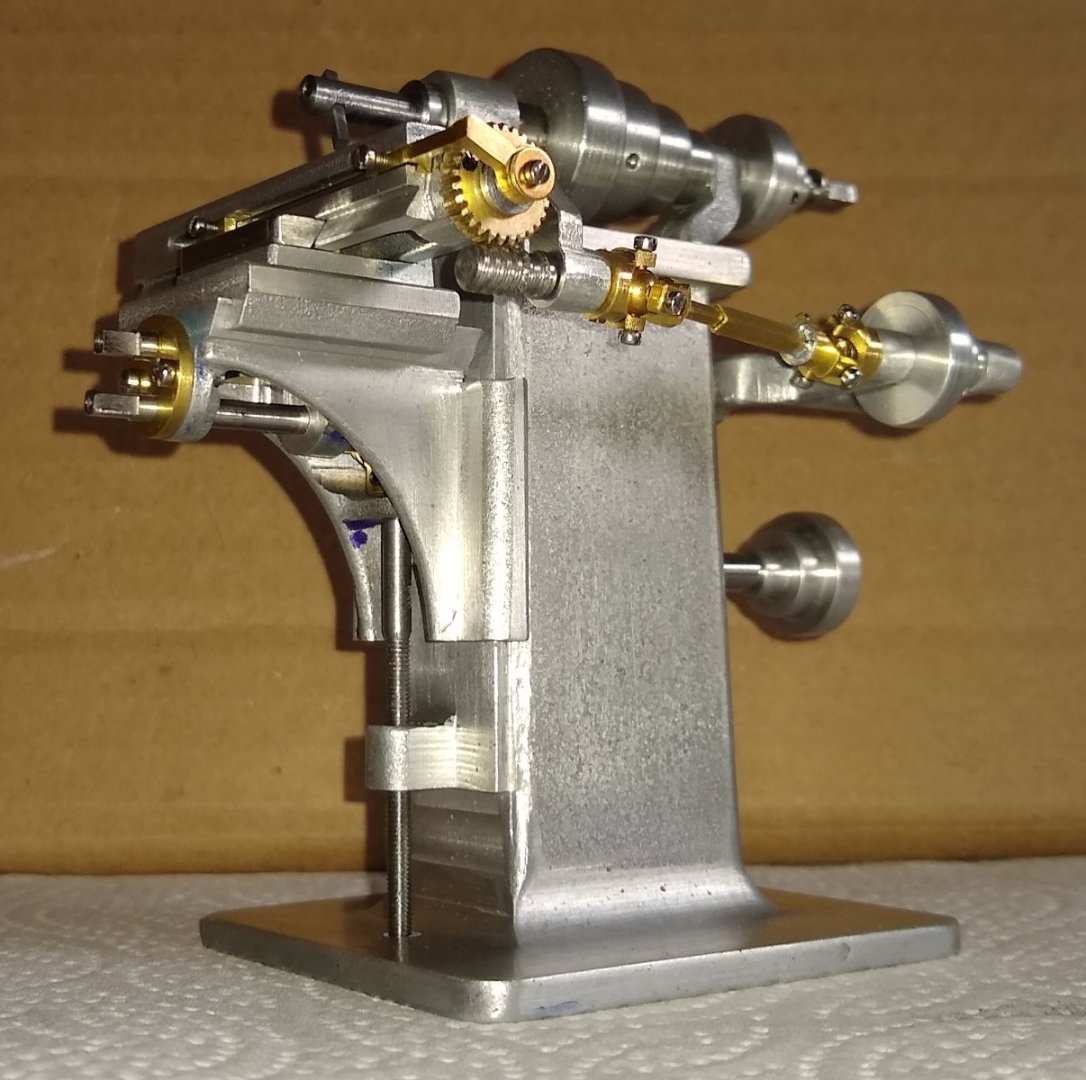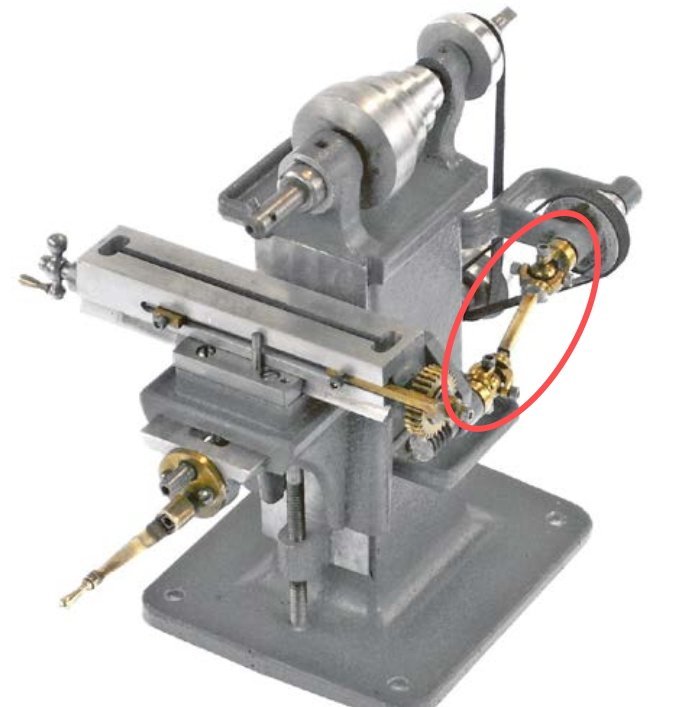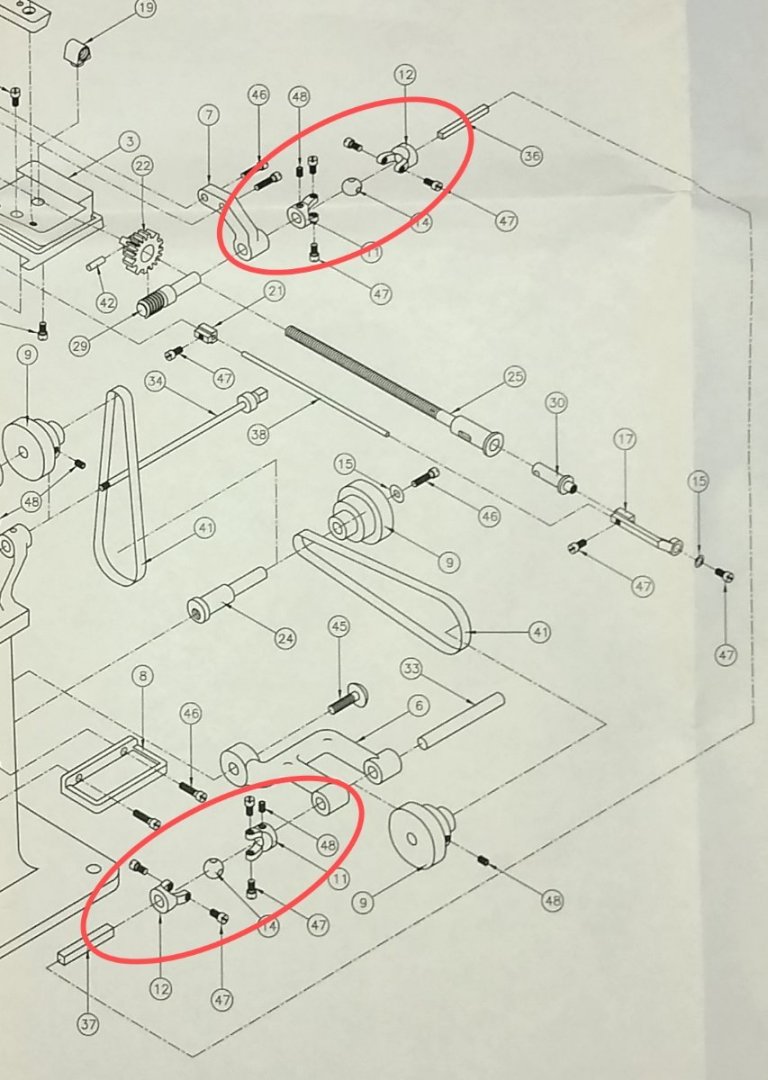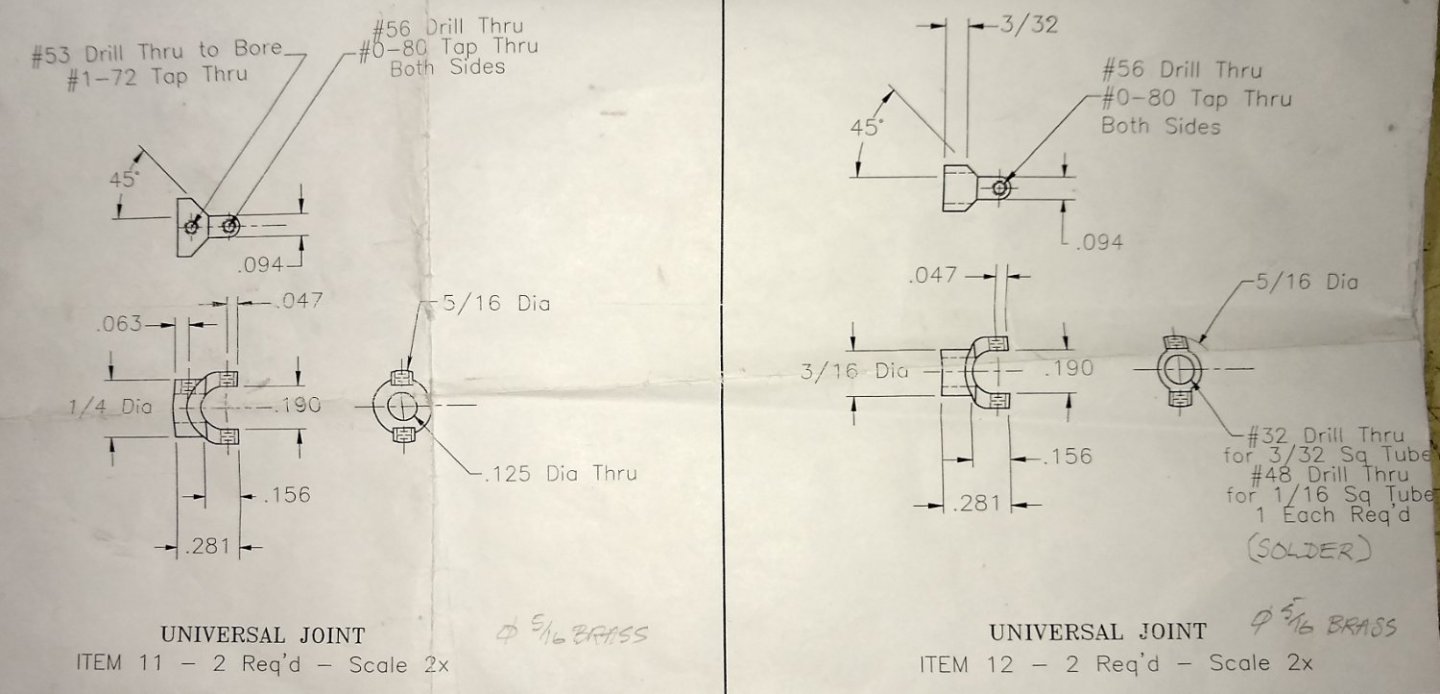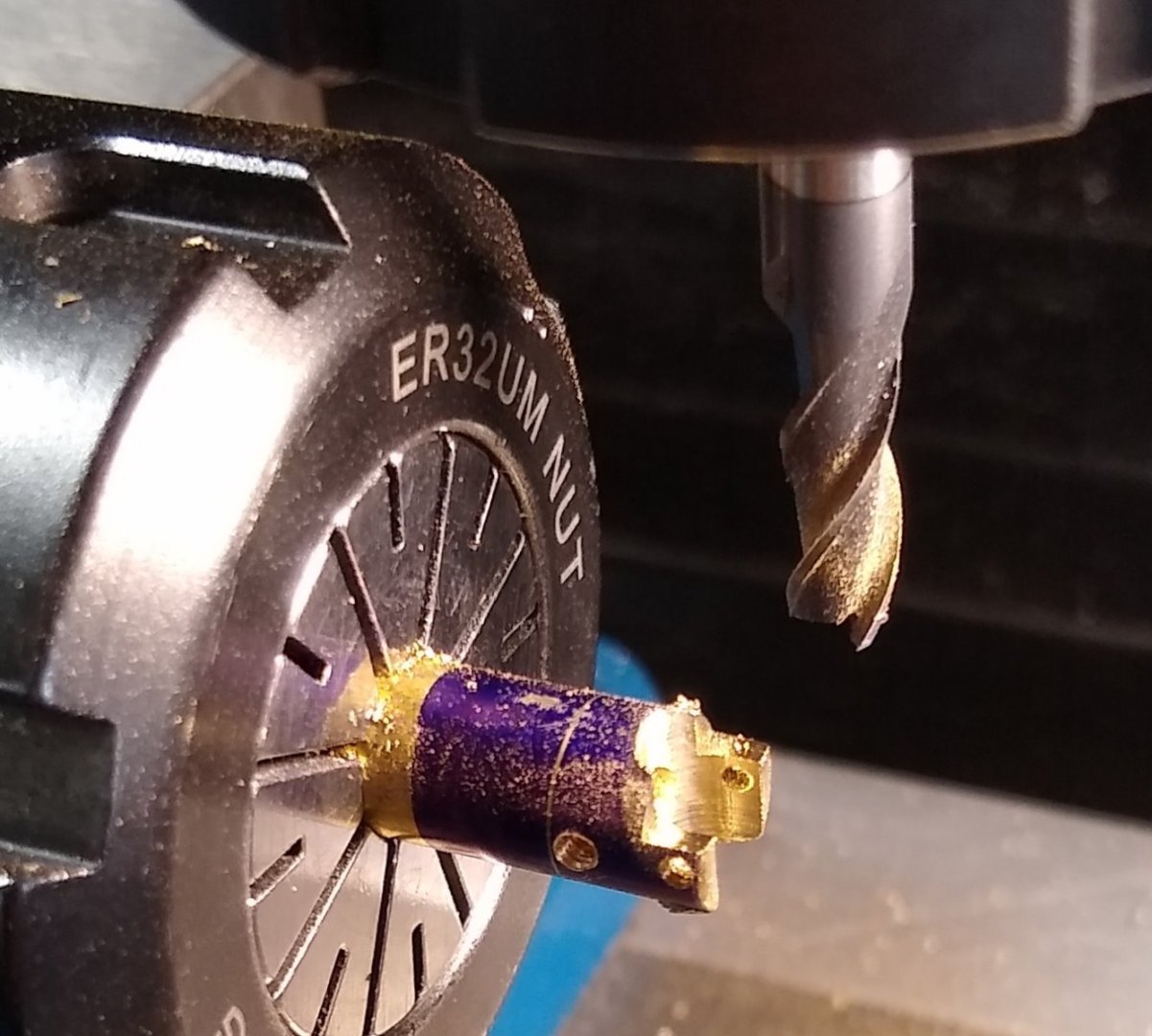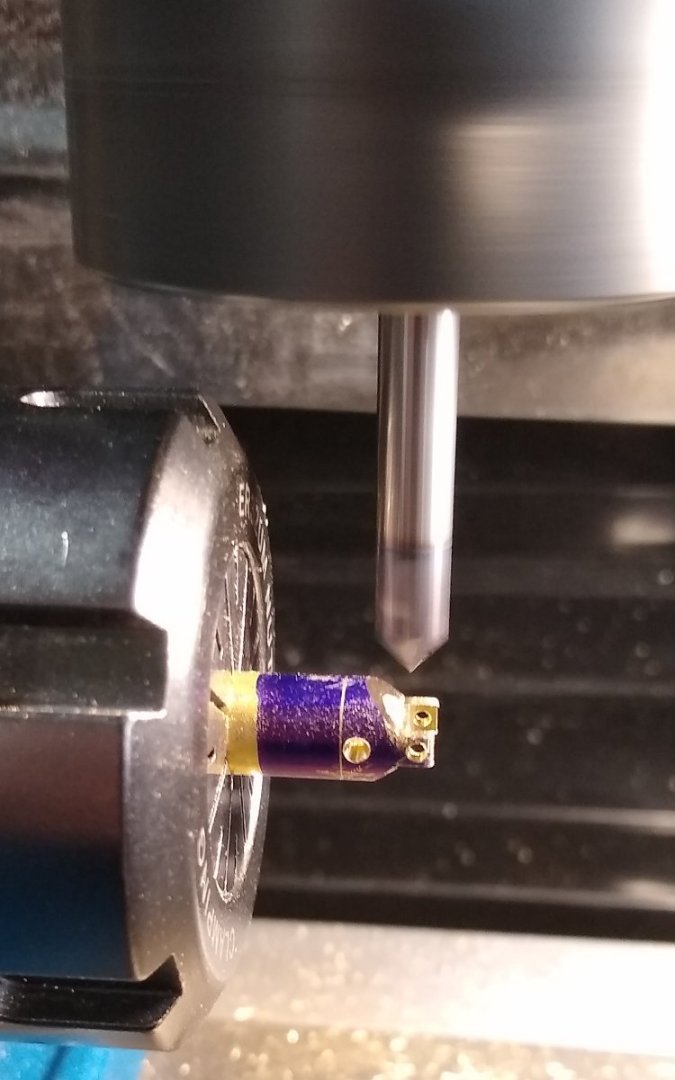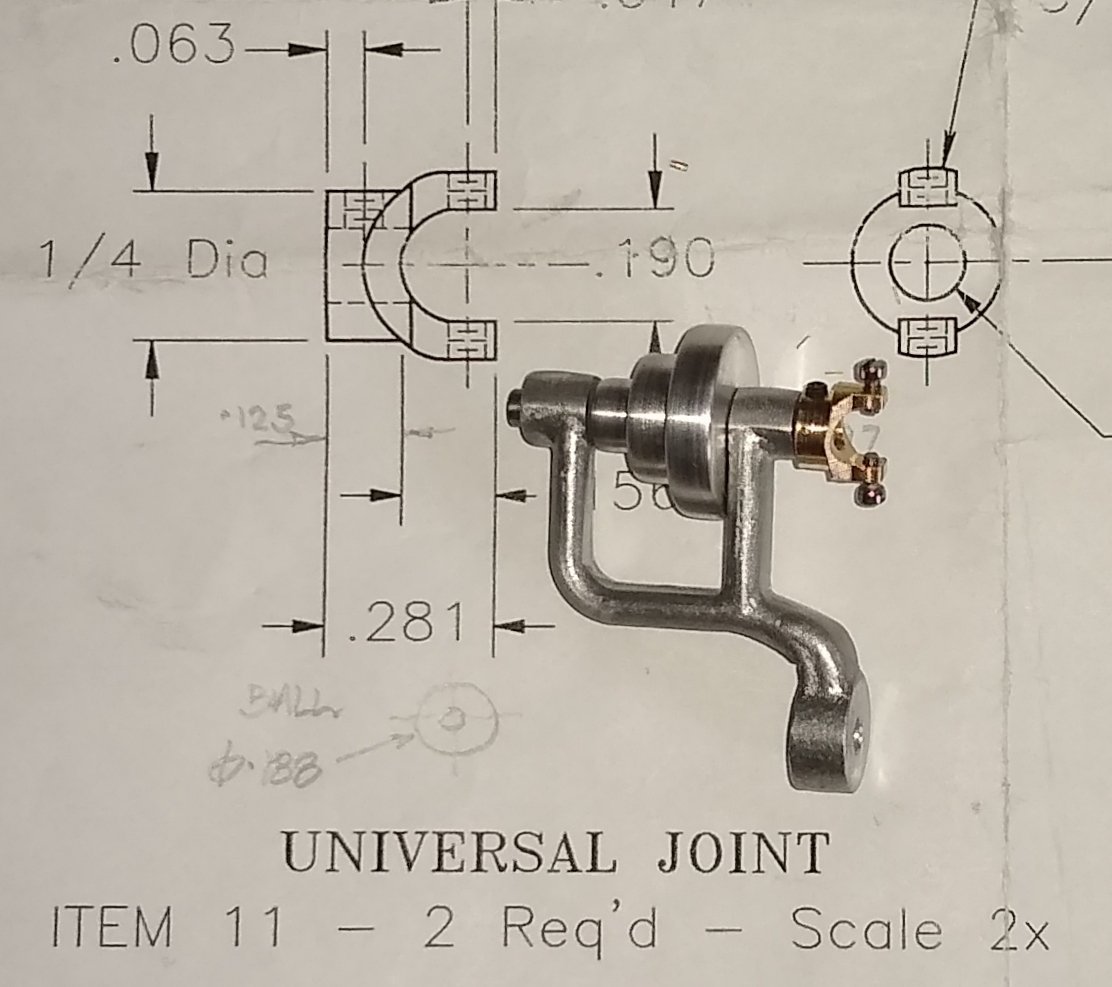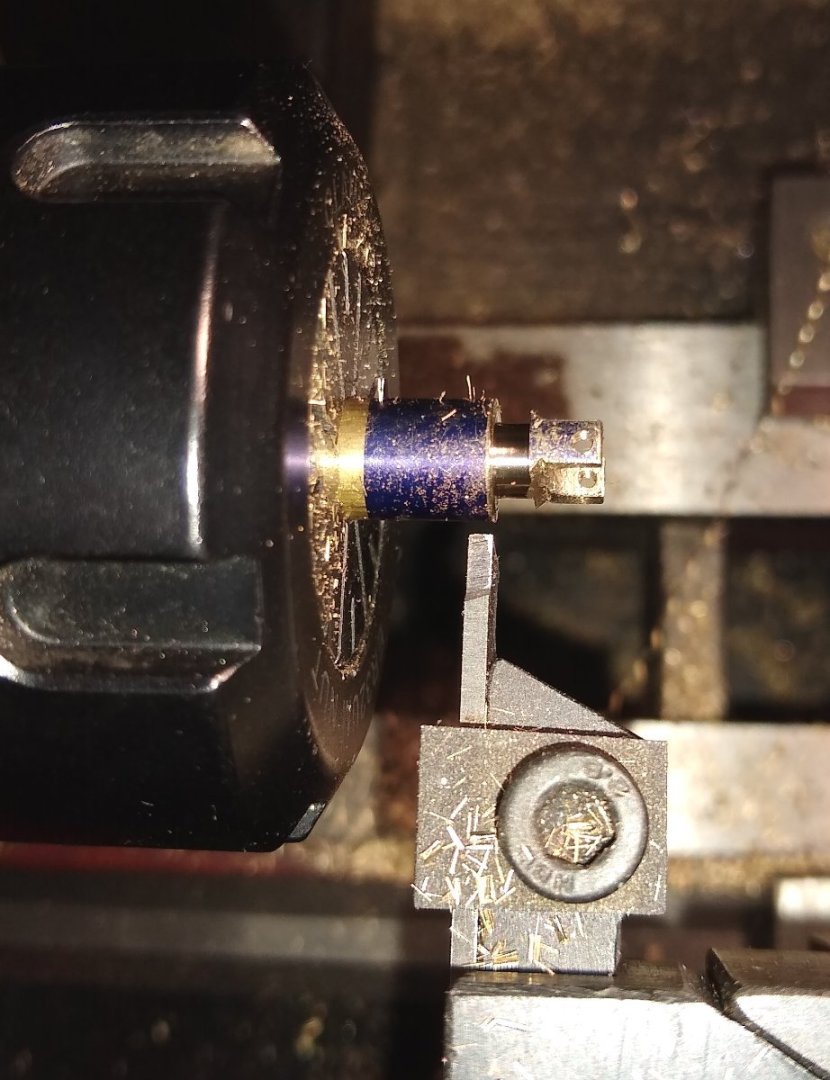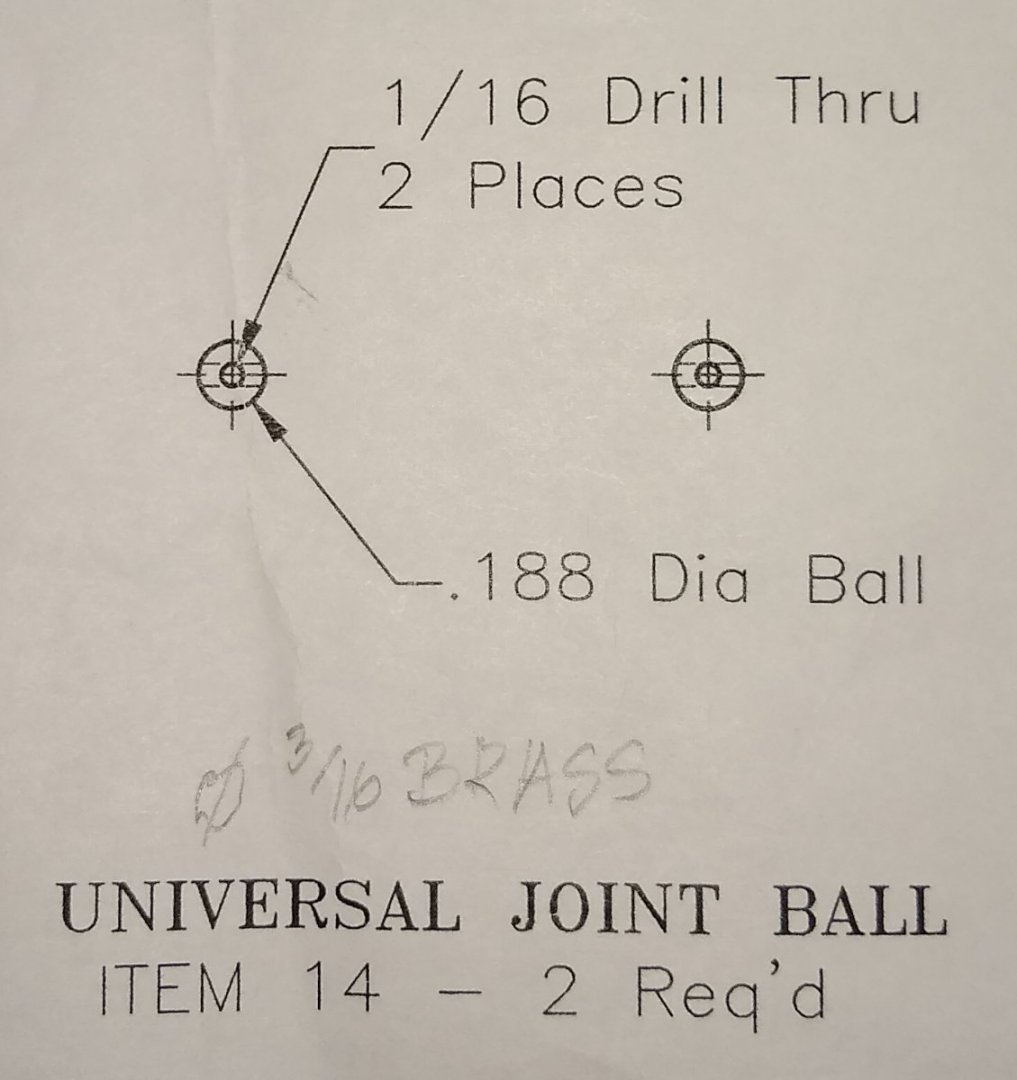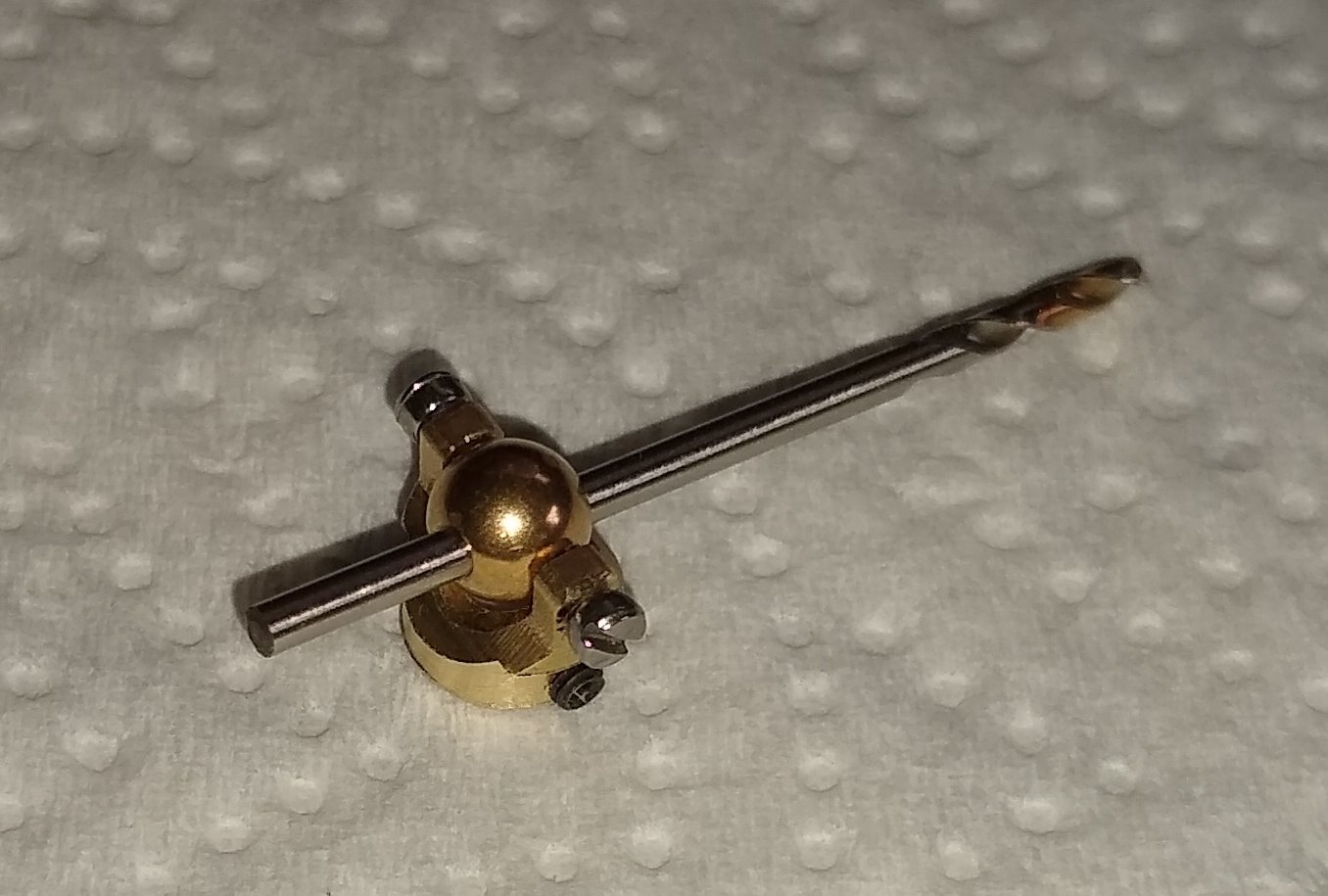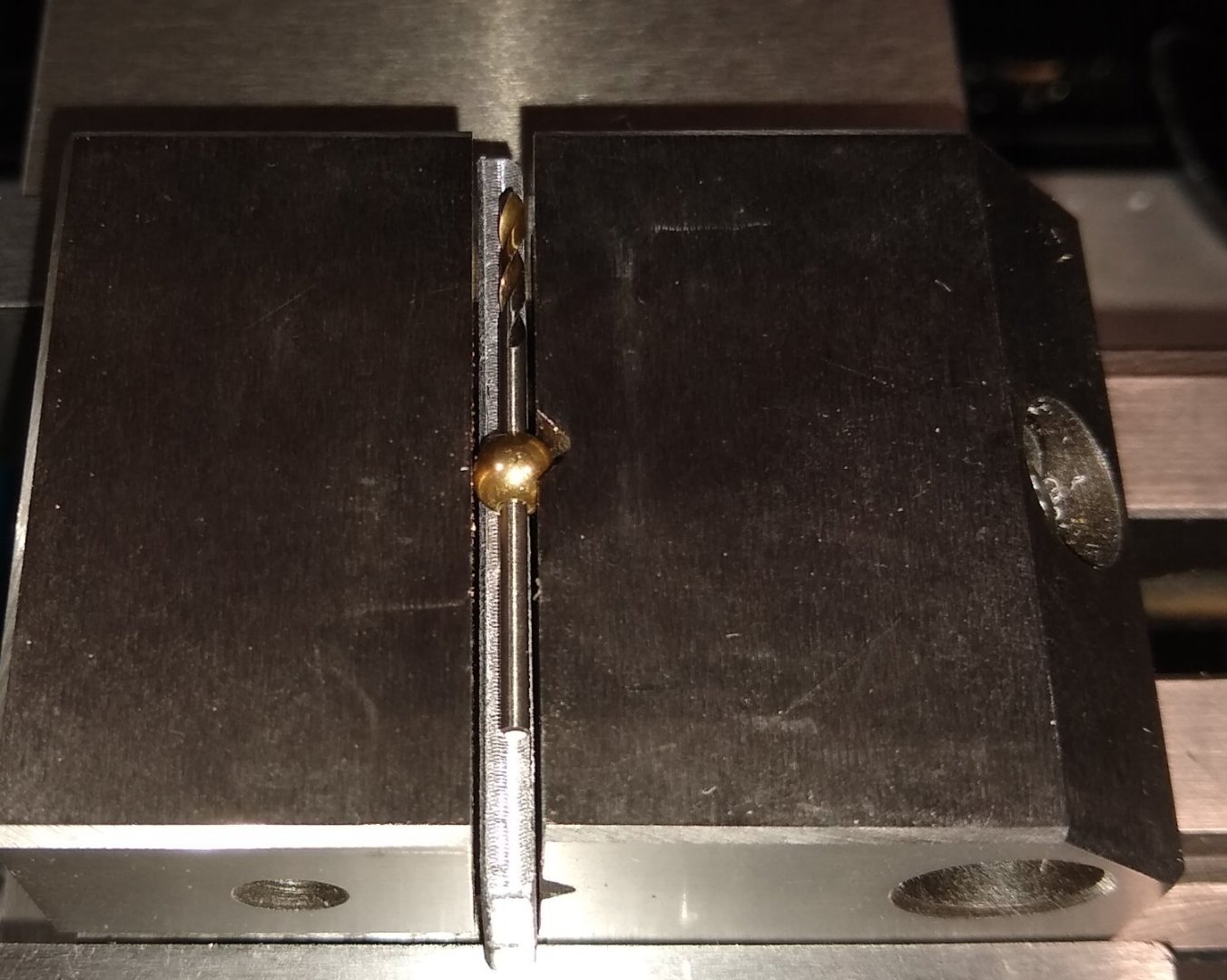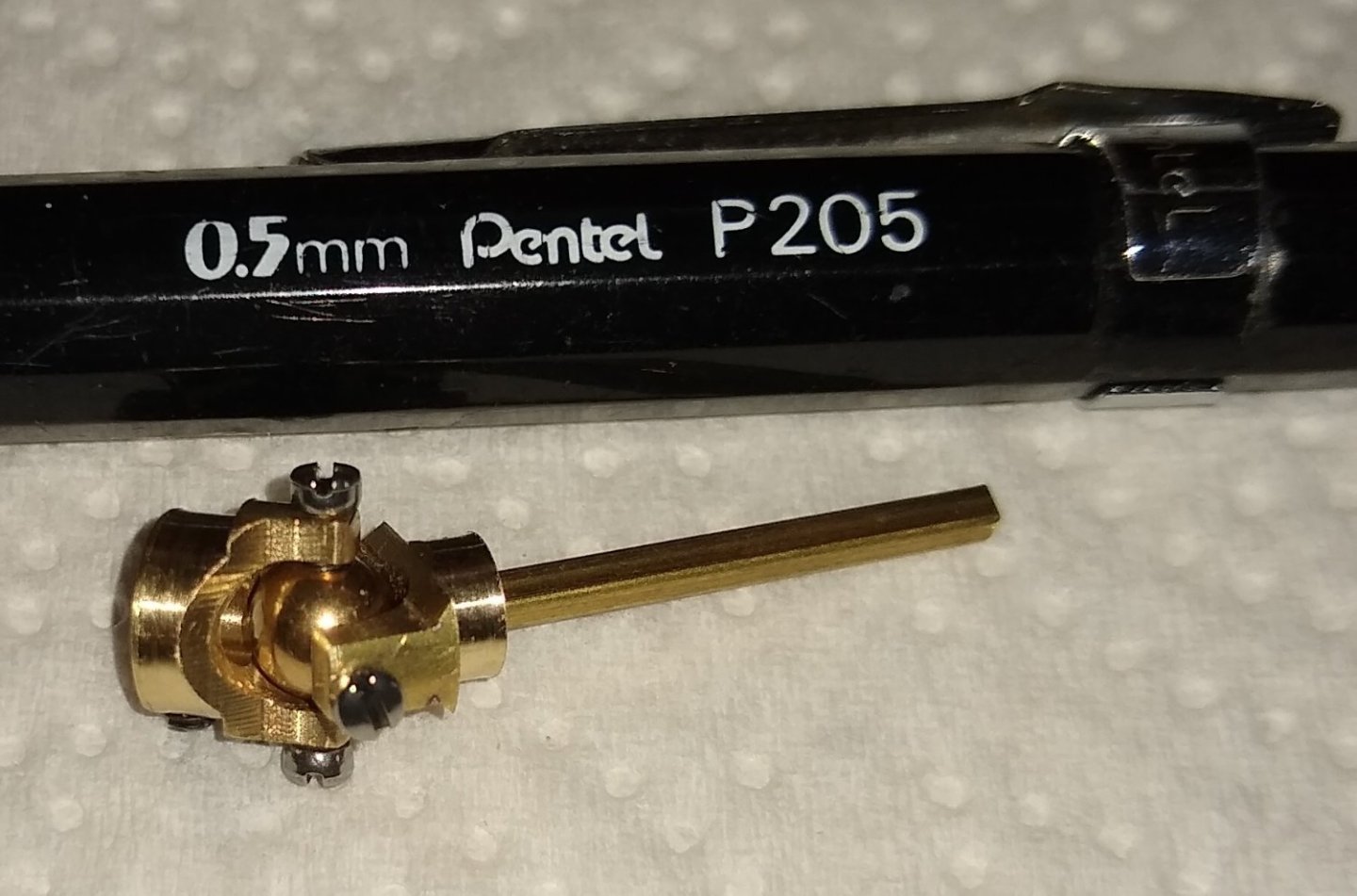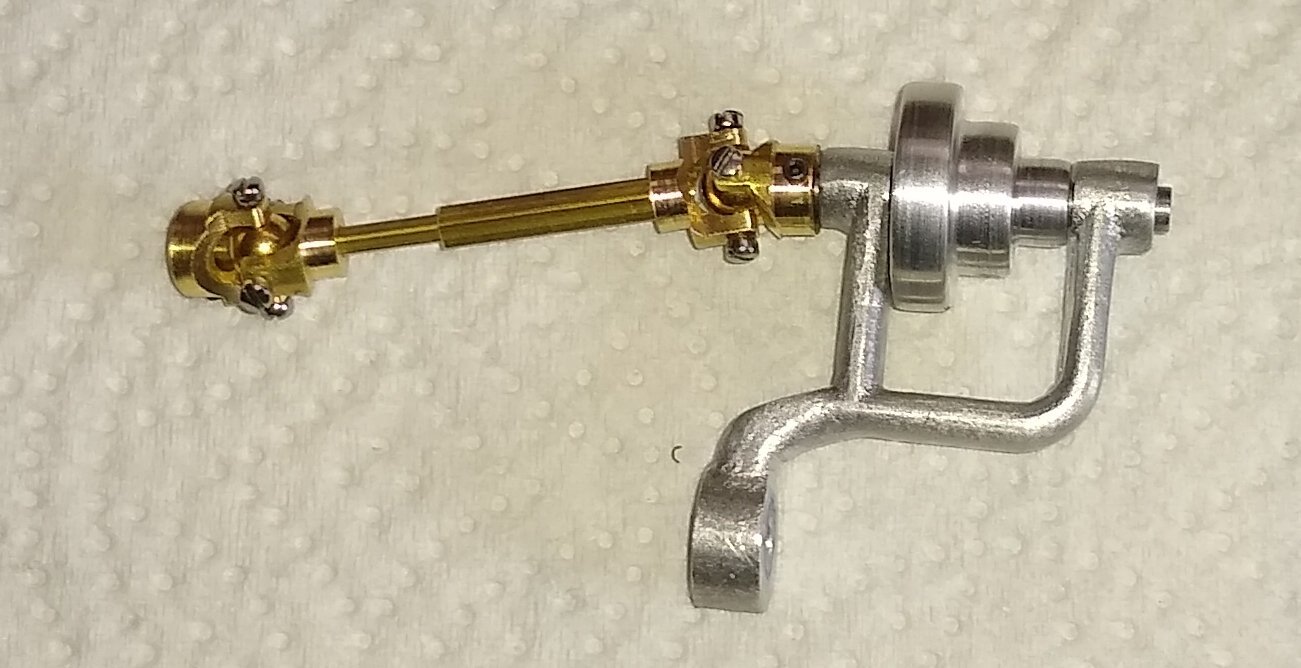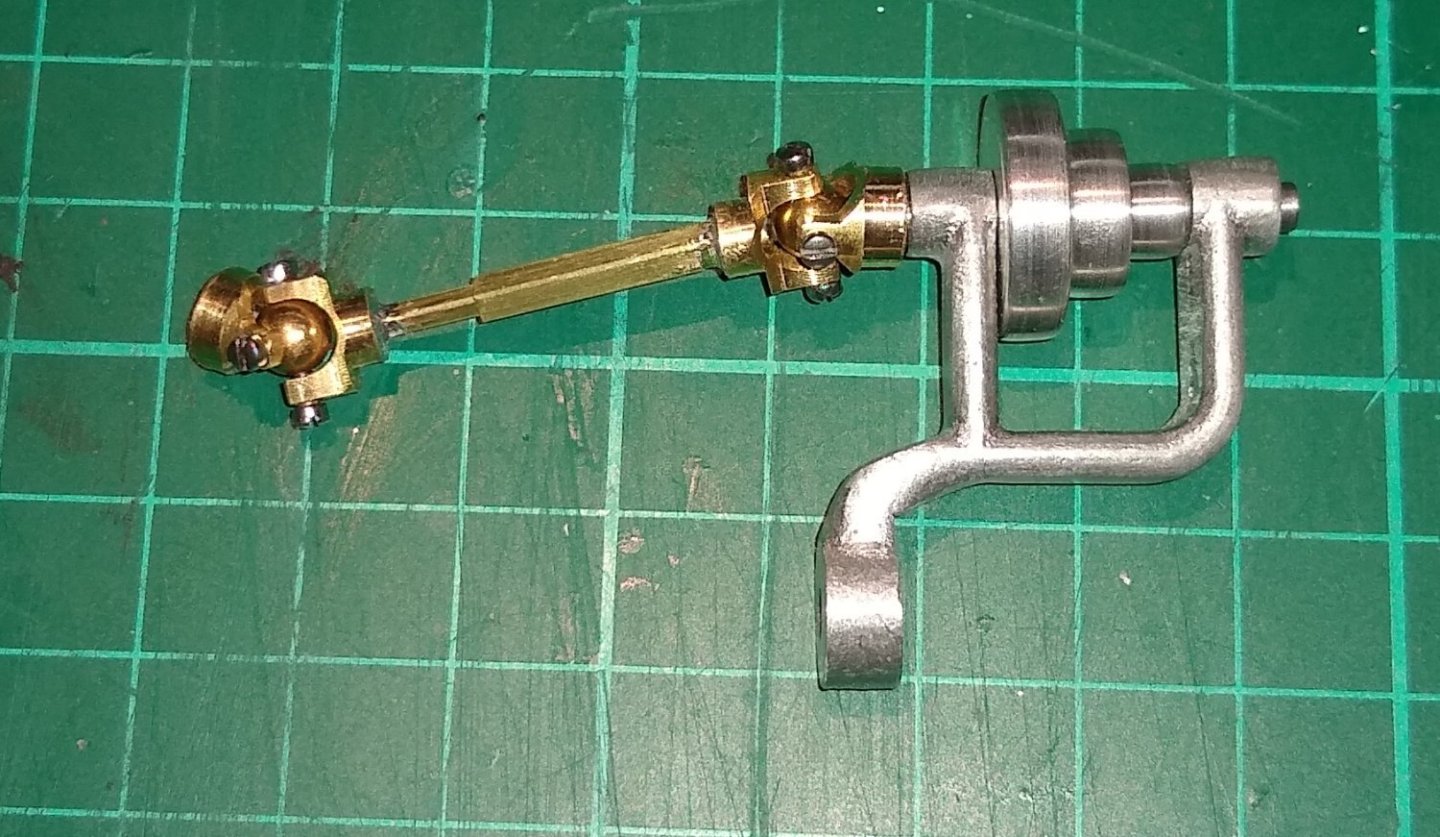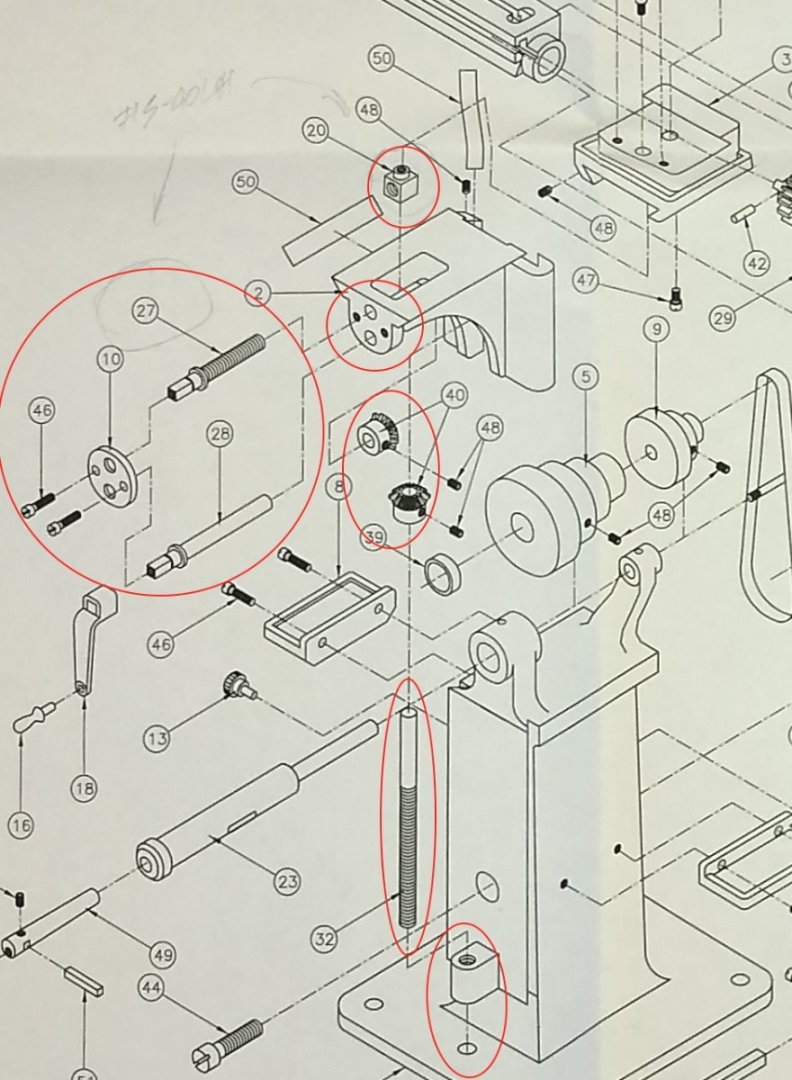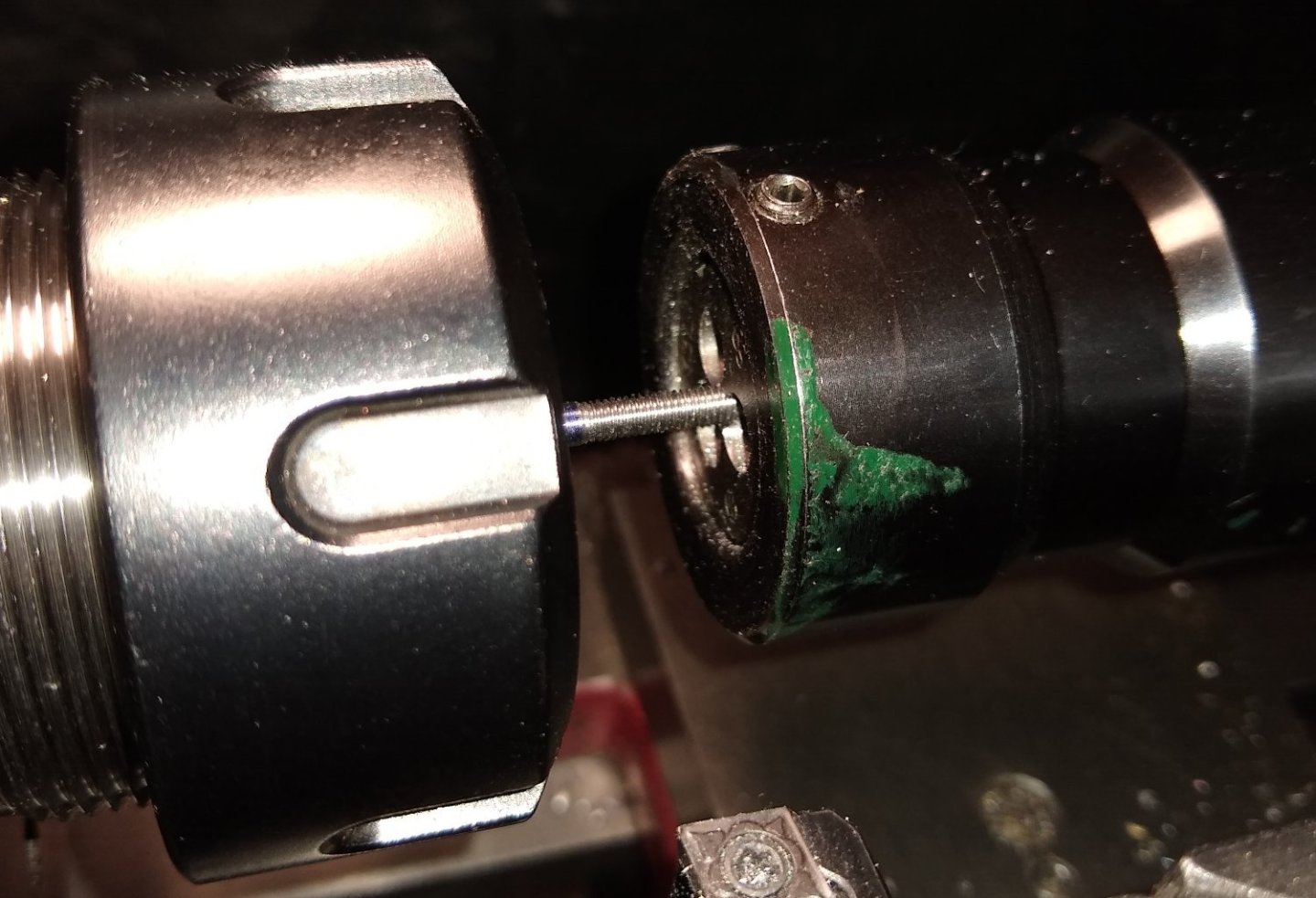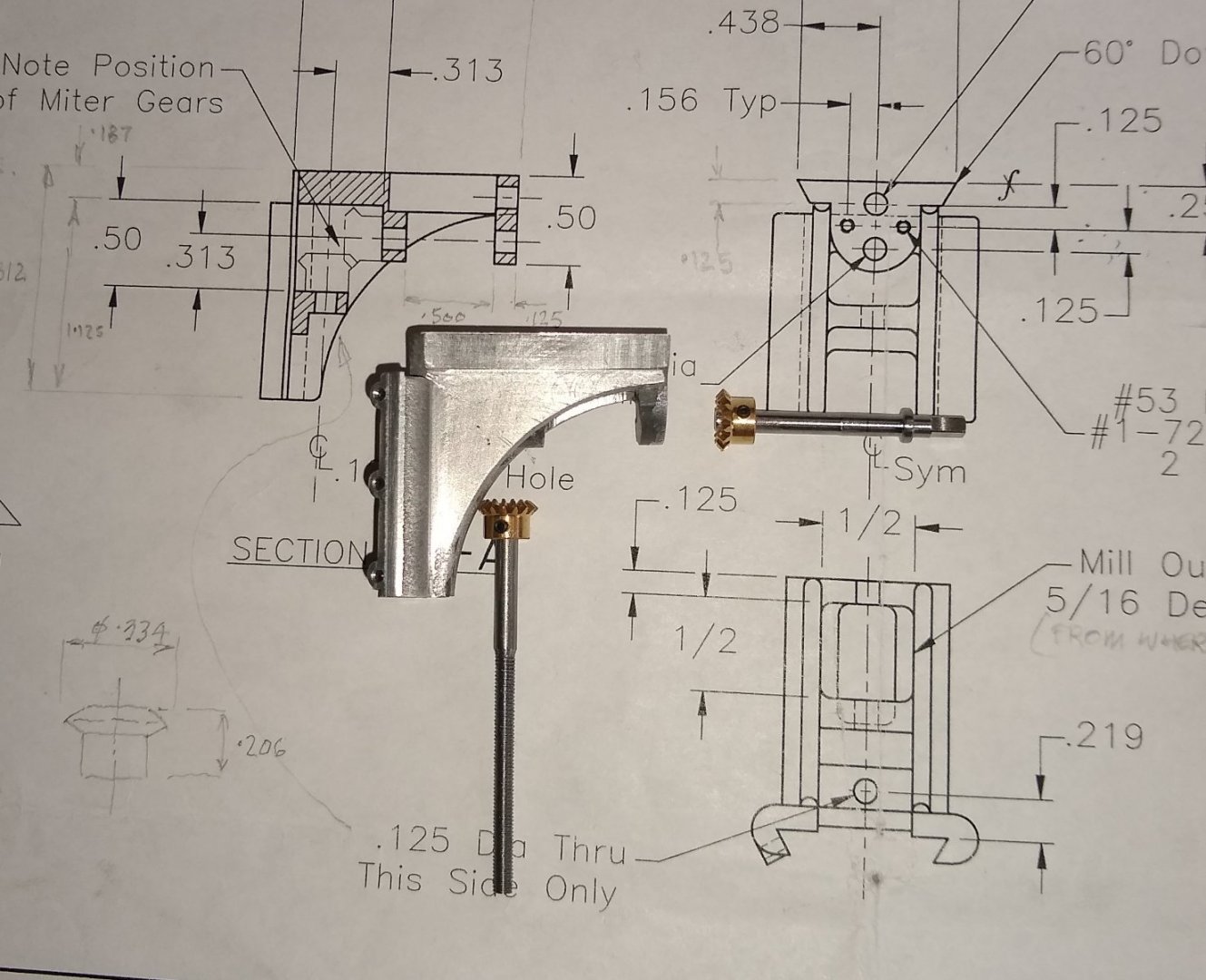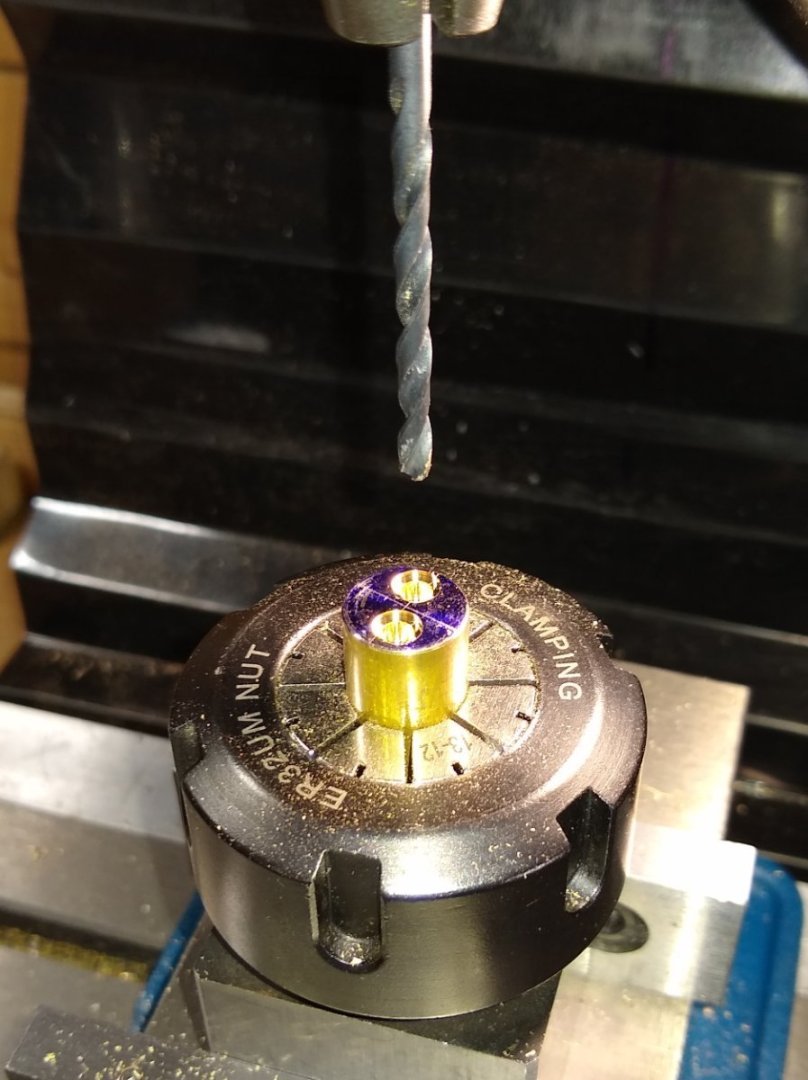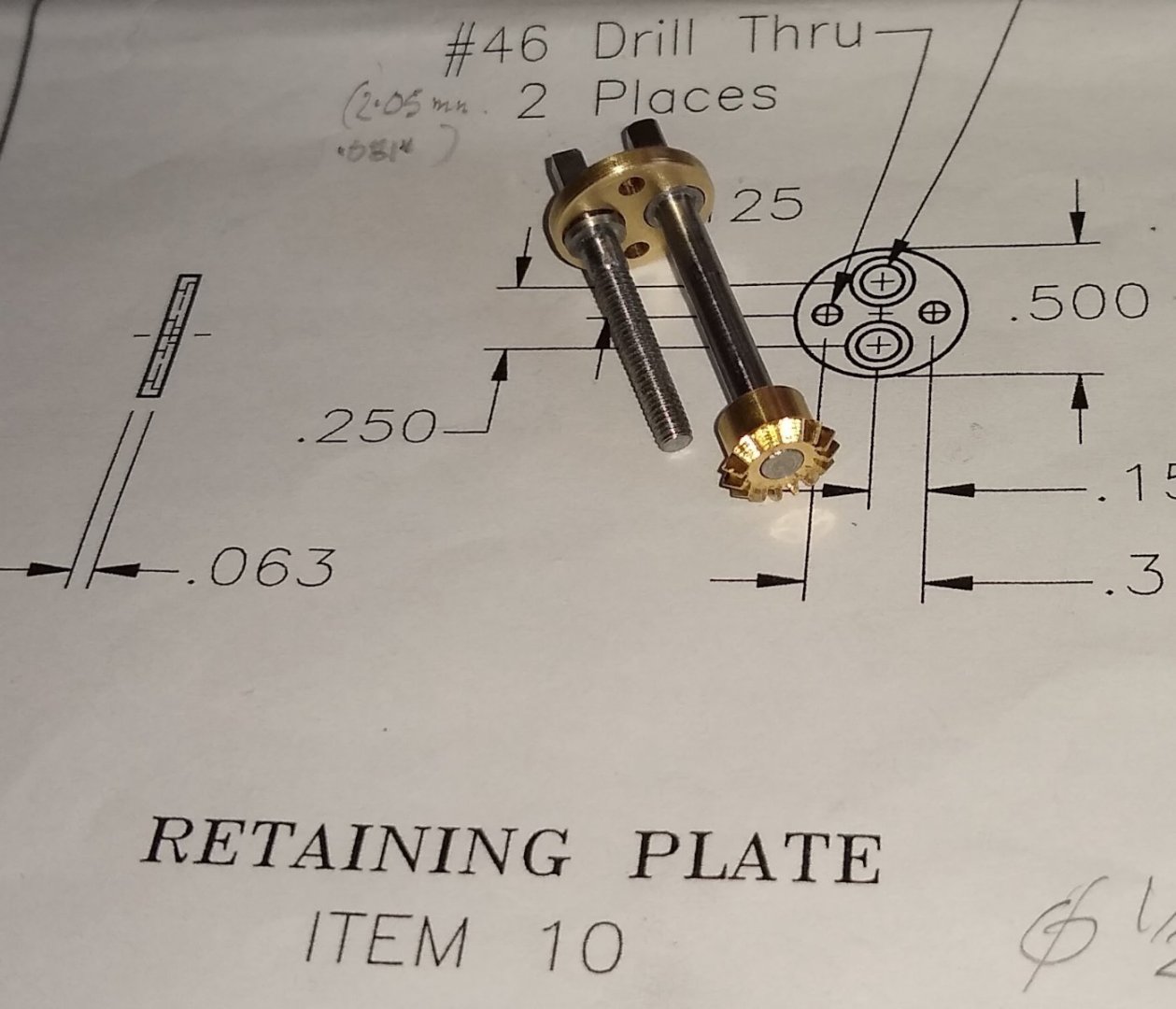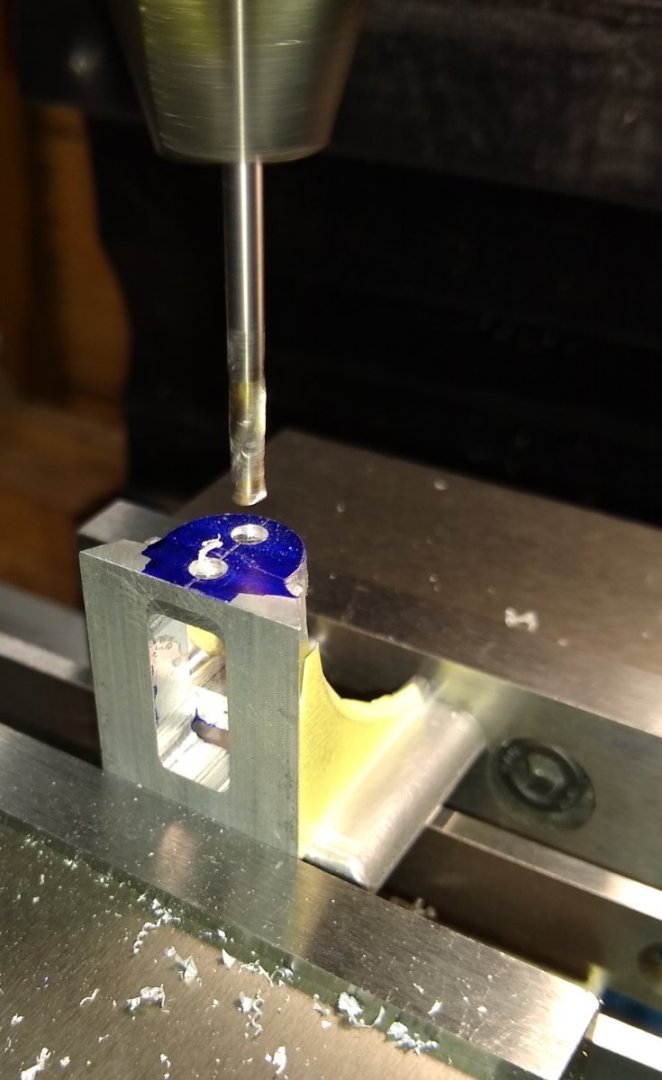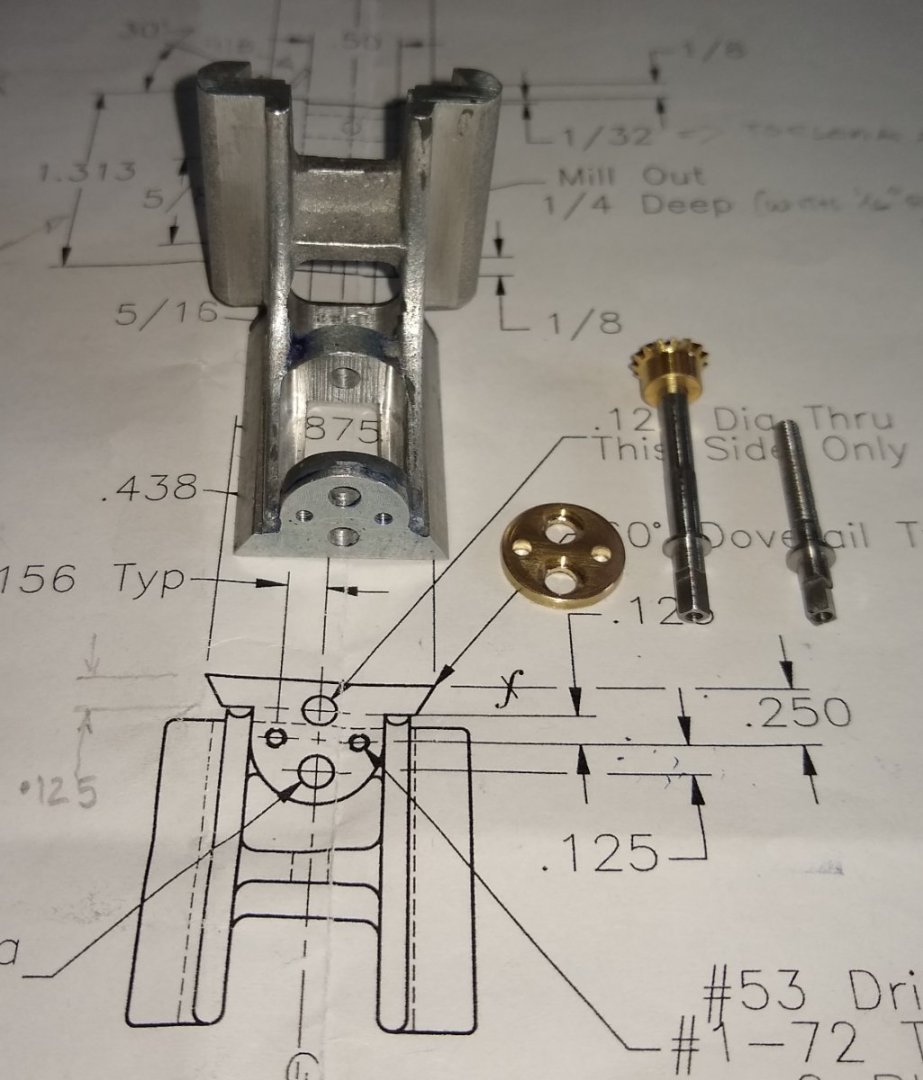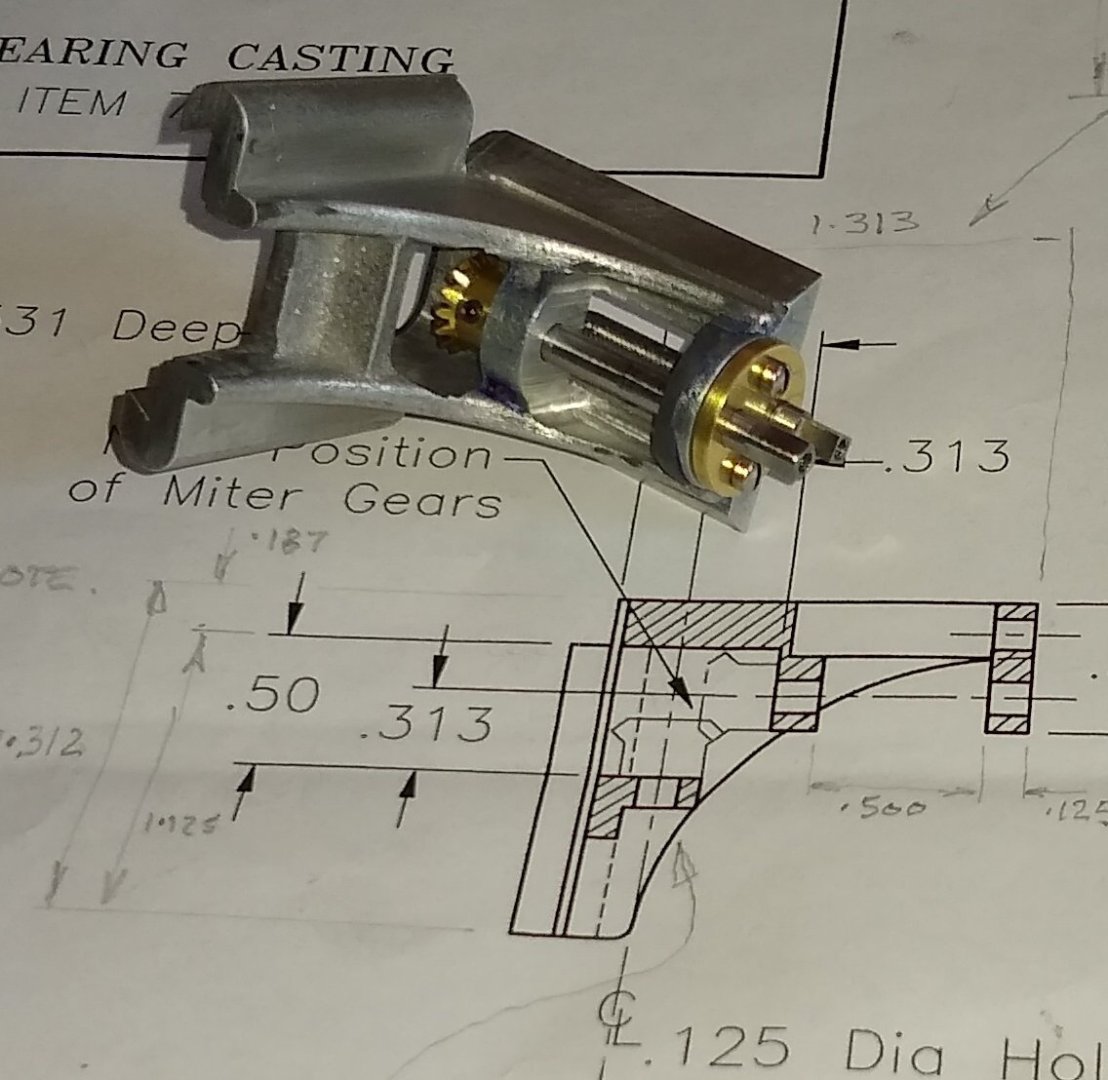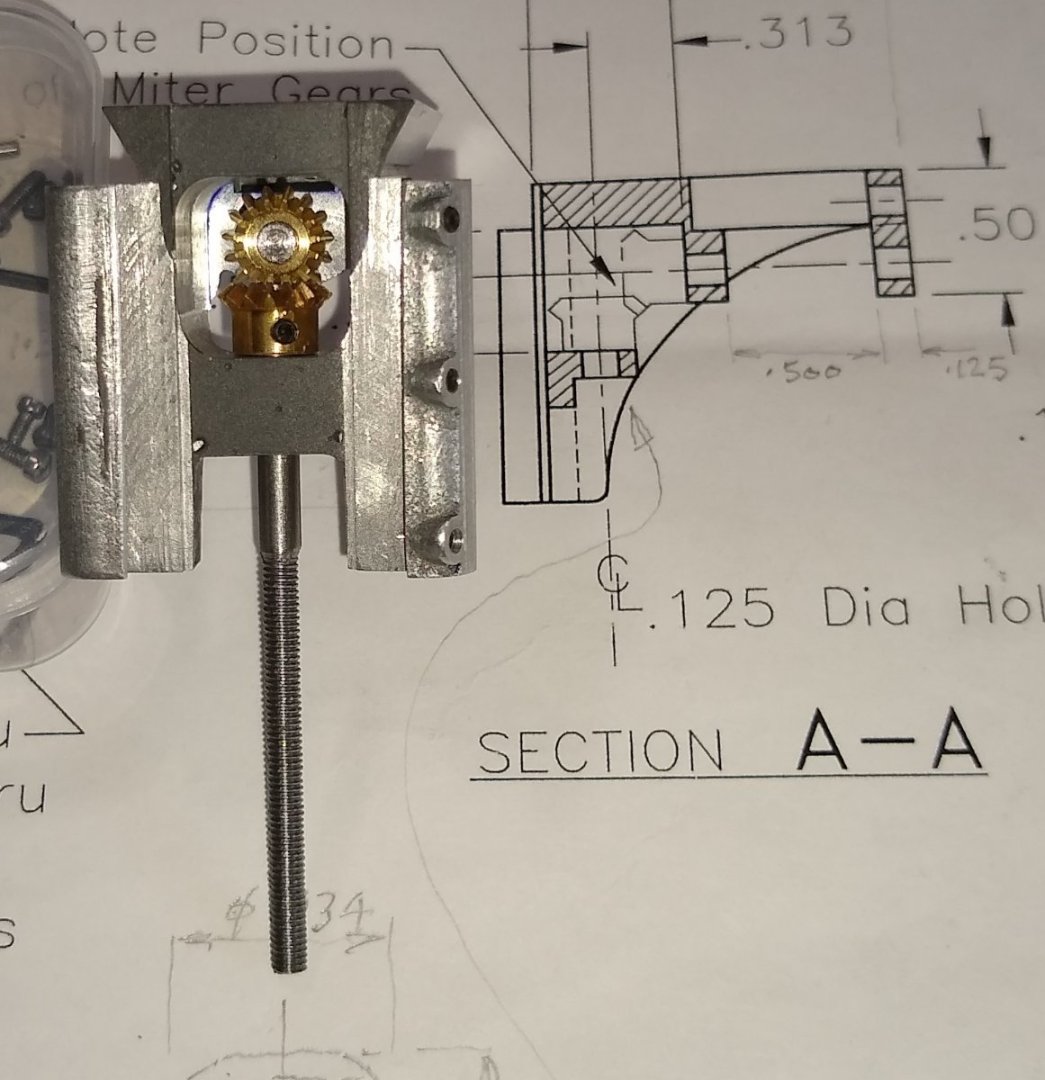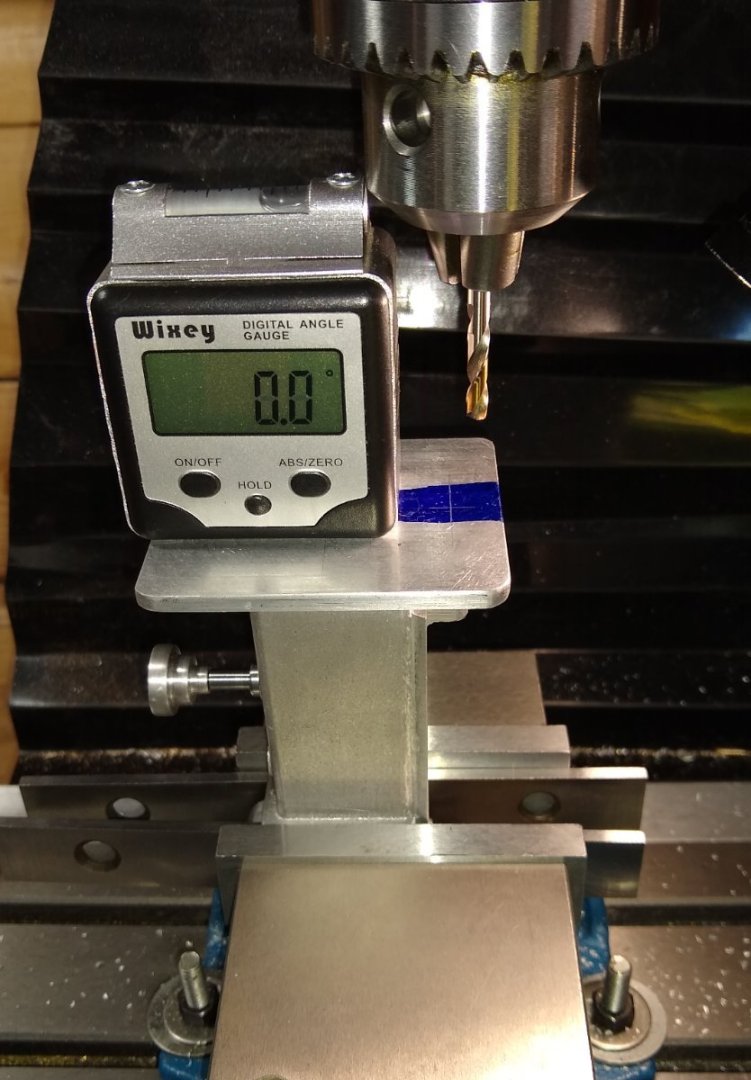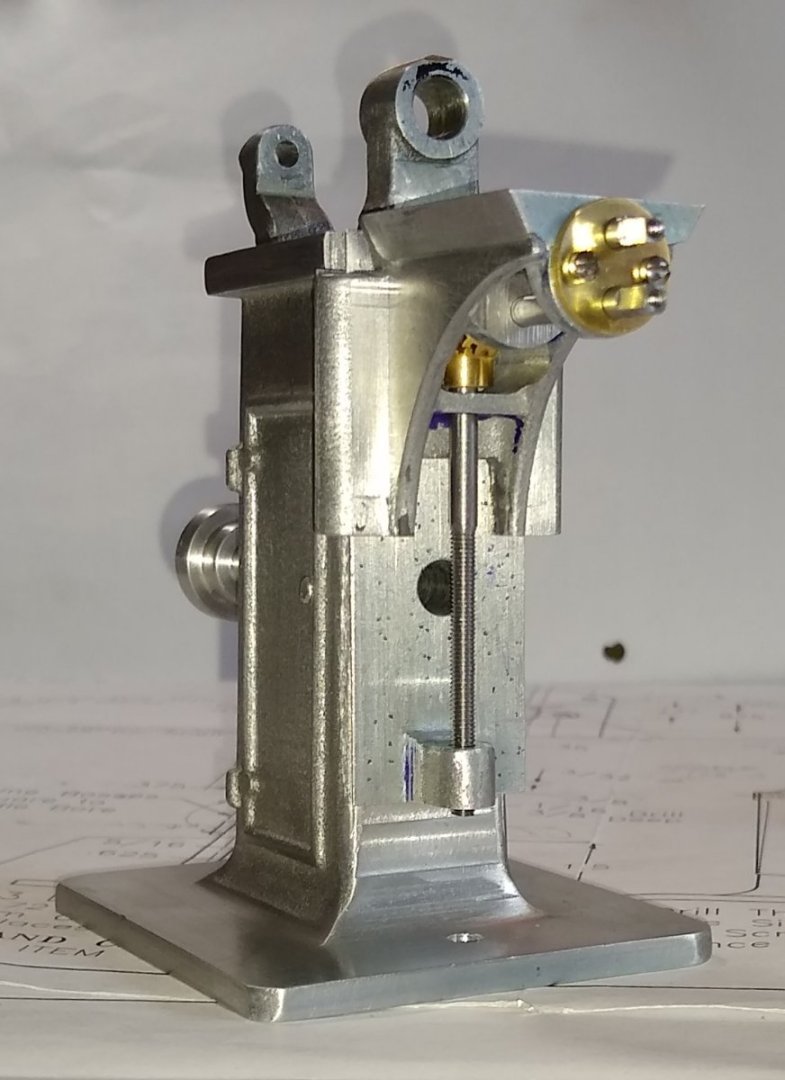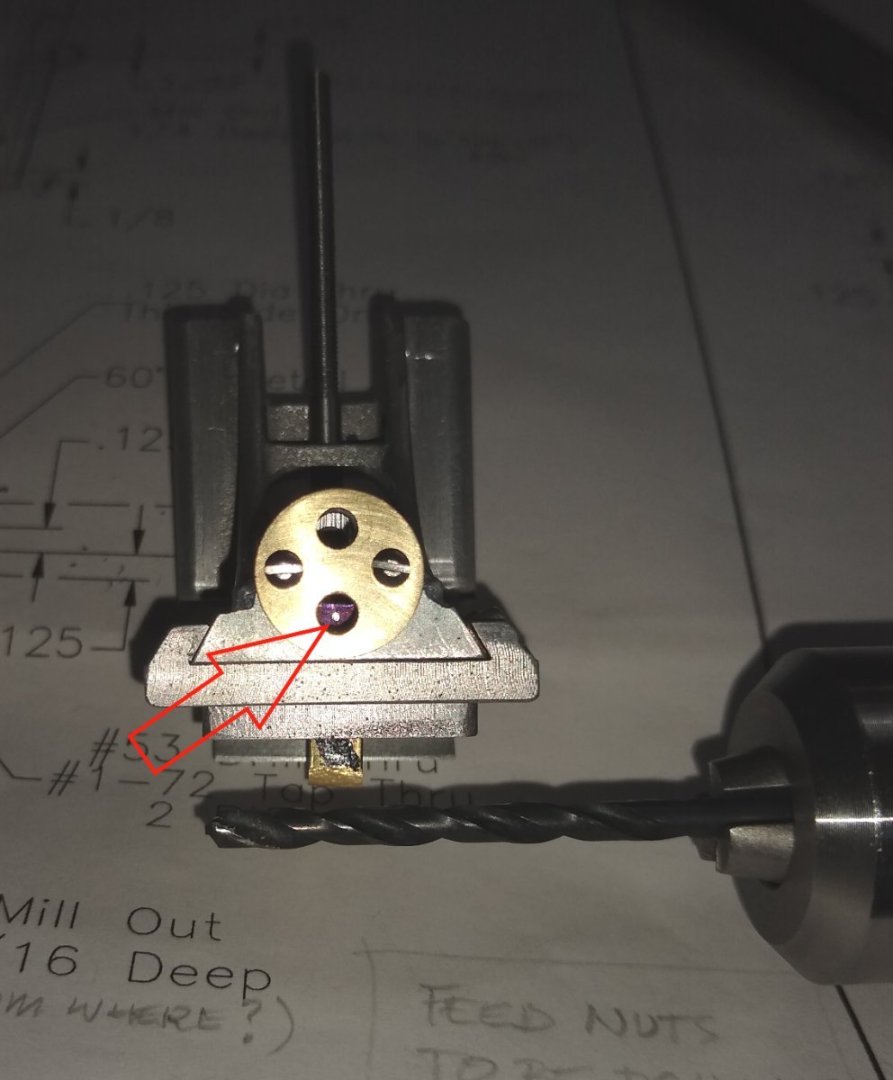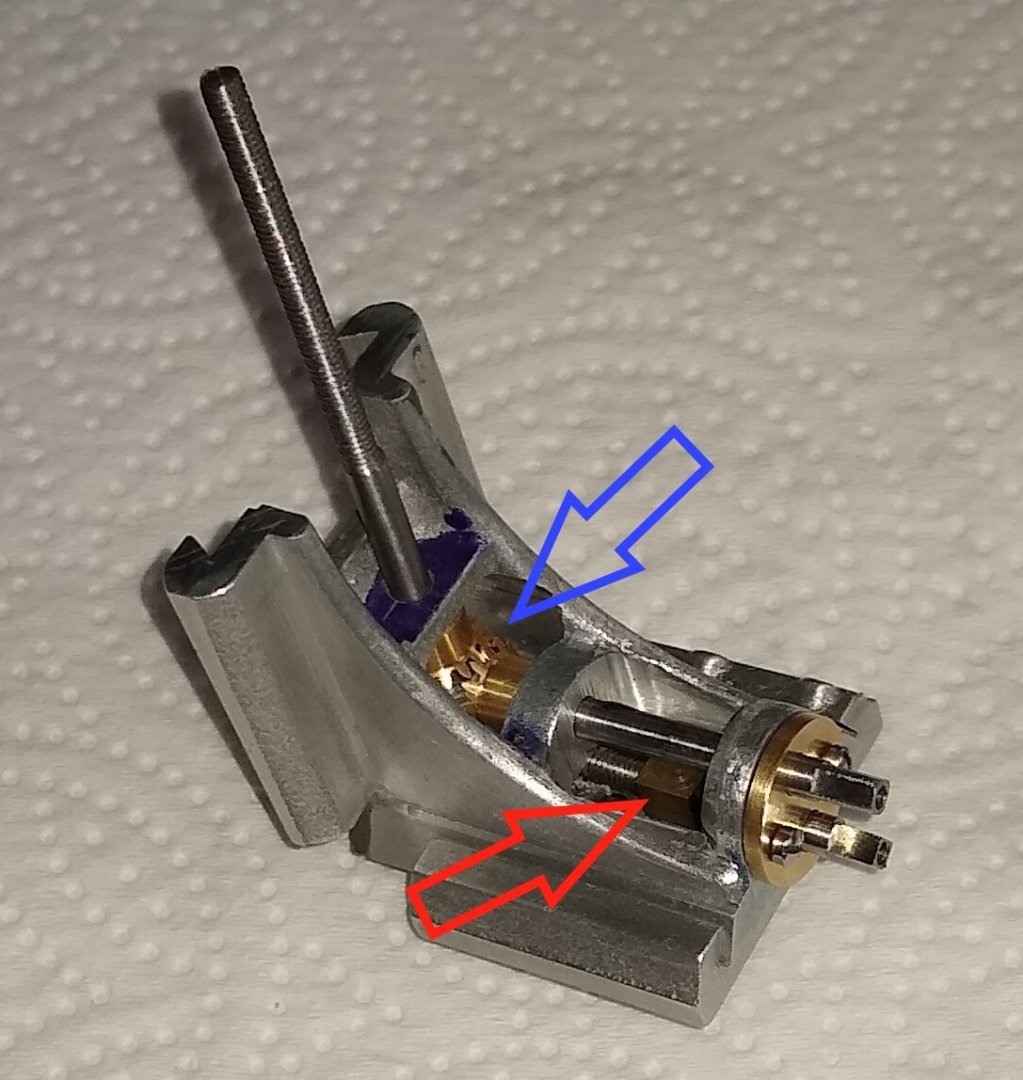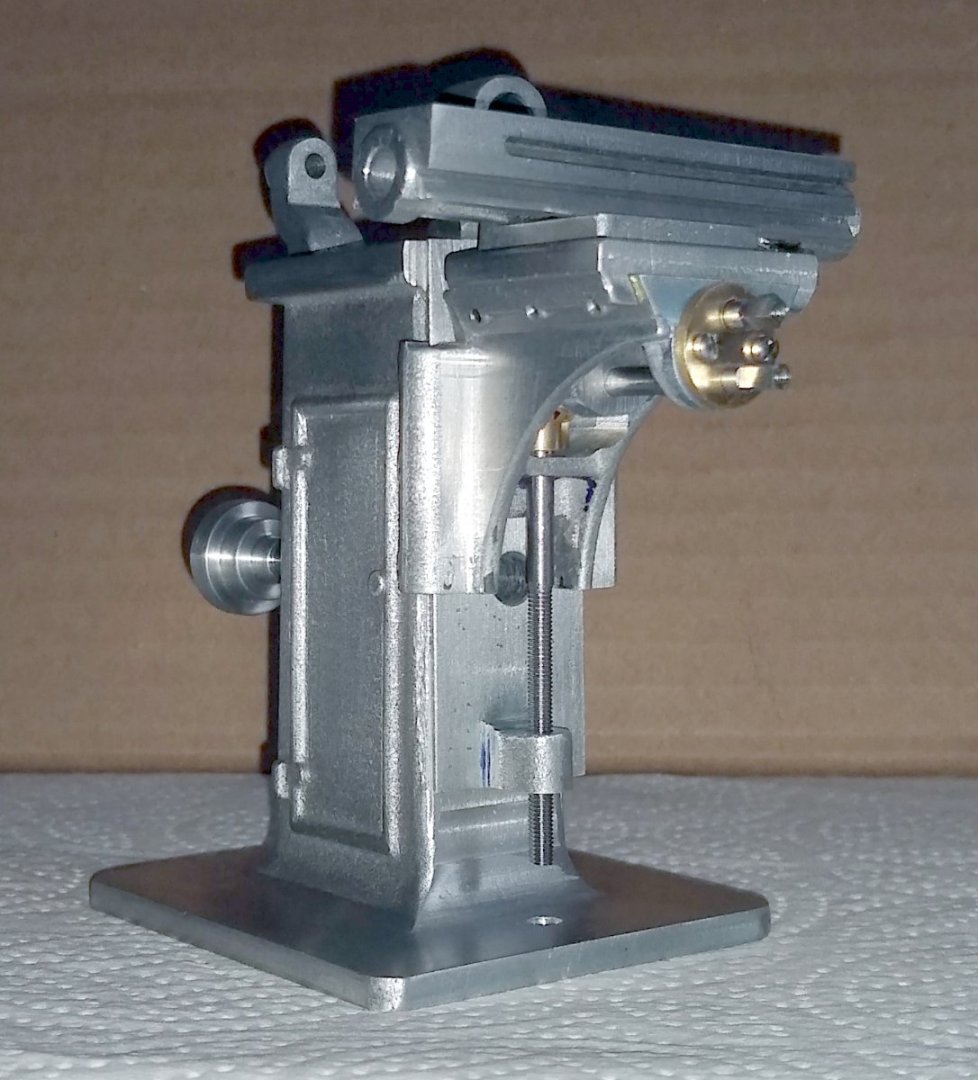-
Posts
864 -
Joined
-
Last visited
Content Type
Profiles
Forums
Gallery
Events
Everything posted by Rik Thistle
-
Thanks Wefalck. Yes, there is quite a lot of 'bling' on it 🙂 I think the model manufacturers do that deliberately to make the kit more attractive to potential buyers. It aslo makes the details stand out a bit more on a finished kit. For a display model it's OK, but for a 'real life' type model it would be unacceptable. Richard
-
I ran a Clausing 60" radial arm back in the toolroom days... Impressive machine... Those Clausing machines look like very serious pieces of kit. I did use a radial drill when I was undergoing training. I was always impressed how it could hold its accuracy even when the drill was out at the end of the arm. Not sure I could build a model from scratch though.....it would require a lot of research and design, whereas I tend to target 3-6 month projects, at least for now. But keep pushing...who knows 😉 Richard
-
Egilman, So, at 1/12th scale, it is right on the money. OK, got it. Thanks. a radial arm would be perfect Interesting. I've mostly been looking at Polly Models' range of Anthony Mount models.... https://www.pollymodelengineering.co.uk/sections/stationary-engines/anthony-mount-models/index.asp I'm limited to a 7" flywheel so quite a few of them are doable in my workshop. But I'm a long way from making my mind up....all suggestions considered 😉 Richard Edit: Yes, the Oil Field Pump has also caught my eye ... https://www.stuartmodels.com/product/oil-field-pump-unmachined/ ... it would be nice to see it running with my Stuart 10V, say.
-
Hi all, The parts are back from the paint shop and assembled. Below. There was a good bit of masking areas off before spray painting. And after the masking was removed some touch up with a fine brush was required. Colour chosen was Black - this seems to be the dominant colour around the turn of the last century and matched the colour scheme of my Stuart Lathe. Also shown above are a couple of shafts that 1-72 UNC grub screws are meant to bite in to. I decided to add flats to all such areas. Below, flats are being added to Pt 23, the Spindle Shaft. Below. One of the last things to do was add the two Belts, Pts 41. The drawing calls for them to be cut to length, with a slight overlap, then the overlaps super-glued together. The best way I found to do this was away from the mill. I firstly coiled the complete length to introduce a curve to the belt, then cut to length and then I weighed down one end whilst a cocktail stick with a dab of super-glue was applied to that end. The other end was carefully introduced and held down with finger pressure, making sure I rolled my fingers to stop the belt becoming part of my hand. Finally, three pics of the finished Milling Machine. the wooden base is temporary till I find something a bit better- it did allow me to handle the mill more easily rather than getting fingerprints all over it. Below, for scale, one material removal device sitting next to another. And the last pic shows the Mill about to meet it's workshop colleague, the Stuart Model Lathe. All the moving parts of the mill function as they are meant to - the handle at the front moves the knee up and down, same handle also moves the saddle. The belt drives work, and move the bed left and right. I will have another go at screw cutting the Feed Worm, Pt 29, and add a post about how I got on. Final thoughts are: - An enjoyable project that I would recommend. The Aluminium parts meant the workshop was much cleaner than when machining the cast iron of the Stuart lathe. However, in some ways, the Stuart product seems a bit more 'real'. - The drawing set was fine and adequate for the task. However, some of the dimensioning was a bit strange eg more than one datum on parts when really only one should be used. - The scale is claimed to be 1:12 but I always felt the real mill would be approaching 6 feet tall - the model is 4" high. - I thought I had lost one of the 1-72 grubs screws (...there are no spares in the kit) but I had somehow managed to installed two grubscrews in the same pulley fastening hole .... I found that out late in the day....and it explained why I could never properly tighten that pulley 😉 - I probably should have paid more attention to accurately making the Bed, Pt 4. It is quite important to follow the drawing dimensions 100%. Thank you for all the Likes, Comments and very useful feedback I received. It really does help bring a Build to life and also helps motivate me and helps me learn. I'm not sure what my next project will be....I have a long list to consider and some workshop improvements that need doing first. All the best, and see you soon 🙂 Richard
-
Hi all, I'm getting close to the finish line. This post covers the last remaining parts ie handles and shelves. Firstly, the Crank handle for moving the Knee up and down. The same handle also moves the Saddle in and out. The drawing calls for the Crank to be made out of one piece of 3/16" brass. I decided to fabricate it out of three parts. I wasn't convinced I could bend the brass as depicted. I had some 1mm thick brass sheet that I did a test bend on and that bent fine - that convinced me to fabricate the Crank. Below, the square hole was filed into the 3/16" brass stock. The end with the square hole was then cut off and cleaned up. Close up of the square hole. The arm and circular boss. After bending the arm of the Crank, it was soft soldered on to the square end using a hot air soldering station. Next was cleaning up and fitting the two tool shelves. As seen below, one shelf fits near the top of the mill and the other on the sloping side of the mill Stand. That latter shelf had it's mounting face slightly angled on my mill so that it would lie horizontal when fitted. Both the Crank and the Feed Shaft require handles, as does the 'door'. Below, the Door Knob and the Crank lying next to the mill. Lastly, the Bed Crank. Again, another square hole had to be filed...yup, I really need to get that broach made ;-). I had firstly turned the 1/8" dia end on the lathe. Then over to the mill to put the flats on the central section and drill the two holes. Now ready to move back to the lathe for profiling the ball shaped sections. Finally, a couple of pics of the fully assembled mill (less driving belts, Pts 41) The remaining work is to disassemble, fettle and clean, paint, make up the drive belts and reassemble. I'll post when that is done. I'll also have another go at making Pt 29, the Feed Worm and post progress. All for now, Richard
-
Bob, Jumping in on the bike tangent. I used to have a steel framed Trek 930 Singletrack .... it was the best mountain bike I ever had. Unfortunately, even after regular servicing the inside of the frame started to rust away so it was too dangerous to risk using it. I replaced it with a Marin Rock Springs - good but no 930. You are doing a very good milage per week. I need to start getting out on my bike more. Richard
- 57 replies
-
- live steam
- radio
-
(and 2 more)
Tagged with:
-
Egilman, Thanks. I think that ties in with what Wefalck has been advising. ...you set the top slide to 30 degrees... The procedure I have been missing is to introduce the tool to the workpiece at 30 deg (using the top slide) so that the tool's leading edge (on it's right side) does most of the cutting. I really can't remember if I was ever taught that back in the day...I may have but certainly don't recall it. I'm also wondering why the drawing asks for a chiselled end on the cutting tool. The mating teeth on the wheel are not flat bottomed...perhaps a rounded end on the tool would be less aggressive when cutting. As I mentioned previously, I have ordered some proper EN1A mild steel so will use that together with your's and Wefalck's advice when the time comes. Meanwhile I am getting on with making handles etc. I think I will tackle the Feed Worm issue once the project is finished, the decks are cleared and I have time to sit down and think it all out properly. I'll add an Edit if/when I am successful. Richard PS: I also just noticed that my Tailstock is about 0.25mm out in the horizontal plane - there is an adjustment for that on the tailstock, but it's a bit finicky to set-up correctly. I had adjusted it when I first got the lathe but over time it seems to have moved. Anyway, it would mean that my 2nd attempt, using the live centre for support, was probably causing the end of the workpiece to slightly wobble as it tried to straighten itself out.
-
Ron, "How to run a Lathe" by Southbend Lathe company. I've already built up a small library of general lathe and mill books, and specific ones such as 'Screwcutting in the lathe' - Martin Cleeve. I see that Amazon.uk does offer the book you mention and it's only £6. My concern is that most older books I feel are written around more rigid, higher tolerance UK/European/USA built equipments rather than small 'Chinese, built down to a price' lathes. But I'll have a think about it 😉 Richard Edit: Ron, I've now 'found' your book .... having a quick read-through now. And the lathe pictures therein remind me of a model lathe I built a few months ago!
-
Wefalck, thanks for the advice. I use an appropriately angled tool with a slight top-rake and with side clearance. The cutting speed naturally is very slow then. ....A left-hand thread I would cut from left to right. I'm doing what you suggest above. And the lathe doesn't have an issue with torque at lower speeds. As your lathe has a top-slide, I would set this to angle and feed in with this slide... I'll consider that - I think you are correct in that having only one side cutting will reduce the forces. I'm waiting for some 'known' EN1A fee cutting mild steel to arrive - currently pinning my hopes on that doing the trick🙂 As I mentioned, the lathe is not particularly rigid. I have added a saddle clamp for work such as parting-off. But I cannot clamp the saddle when using the leadscrew - I know the cutting force should push the saddle down onto the ways, but the saddle has never sat firmly on the ways since I bought it. I've had the saddle off a few times to try to find why/where there play is but can't find anything. Although I've learned to live with it, I've not given up on eventually sorting it out. Richard PS: I did initially Google a 3/16", left handed 20 tpi die but can't find such a thing. It would have made life a lot simpler, even for cleaning up my single point thread.
-
Hi Egilman, Yes, we're pretty much on the same wavelength. Your point about the chisel end is good; that and the narrow angle (40 deg) means a slim tool is doing a lot of work. I'm hoping some decent quality free cutting MS (EN1A) will improve things but the main issue is probably I'm still at the bottom of the learning curve. I should note the Sieg SC2 is not the most rigid lathe in the world...I have tweaked and modified parts of it over the past two years but it has it's limitations. Still, for the money I paid I am very happy with it. Richard PS: Yes, I did think about turning the chuck by hand .....will give that a go if all else fails ... and I did dress up the threads with a knife edged needle file.
-
Hi all, The past week or so I've been reading up on how to single-point cut a left handed thread. I've had two goes at doing it, with a third attempt probably set for the end of this week. Firstly, a quick reminder of the mill and it's parts. Highlighted in red is Pt 29, the Feed Screw which moves the Bed in the X axis. And also Pt 7, the Worm Bearing which was already made but not yet fitted to the Bed - I waited till the Feed Screw was available to ensure the Worm Bearing fixing position gave good meshing between the Worm and Wheel. Below, the drawing of the Feed Worm, with a close up of the cutting tool shape (in the top right corner). I made the cutting tool out of a High Speed Steel blank. I initially forgot to put a slight rake on the top face, sloping down from left to right. But I can't say this made a big difference with my 2nd attempt at screw cutting. The lathe I was using is a Sieg SC2. To engage the leadscrew for screw cutting the black lever (middle, bottom) is pushed in to the lower position. I actually found that, using the lathe's controls, manipulating the cutting tool was fairly simple. The lathe has a brushless motor and a Forward/Reverse switch. There are a set of gears under the red plastic cover on the left that need changing to suit the Feed Screw's 20 TPI. The label on the red cover gives details on thread pitches available. The lathe came with some extra gears to allow all the permutations shown. The actual pitch of the Feed Screw is 1.27mm so I went with 1.25mm pich - close enough for the short engagement length between the worm and wheel. When the cover was first removed the gears shown below were already installed. In normal use of the lathe these gears are not activated. The belt drive simply rotates the spindle at the top of the picture. A side-project quickly raised it head....I felt the leadscrew was a bit tight when I tried to rotate it by hand. The gears are (sacrificial) plastic so I thought it might be a good idea to slacken off/adjust the bearing blocks at both ends of the leadscrew to see if I could get it to rotate a bit more freely and so lessen the loads on the plastic gears....sigh...I wish I could just leave good-enough well alone. It took about a day to return the leadscrew to it's former movement. I don't know what the manufacturers do to initially set up the lead screw but it obviously involves some kind of dark magic. Perhaps they had the leadscrew running as they tightened up the blocks?...who knows...anyway, below I am trying a Post-It shim to 'make things better'. Below, the extra change gears supplied with the lathe, by Sieg . And the 50T, 40T and 60T gears now fitted. There are a couple of adjustment bolts that can be slackened to allow the new gears to find their correct meshing positions. Edit: I put a couple of red '?' on the two white Nylon gears ... I wonder why they are different sizes. I think one engages for moving the Leadscrew Forward, the other Backwards. I'll have another look/think and report back. I did notice that the bottom two gears did not line up correctly. So off on another wild goose chase. It would seem that the diameter marked by the red arrows should be slightly smaller - that would allow the bottom gear to move further to the right, But without taking out the leadscrew and turning that diameter on a larger lathe I was stuck with it. Below, the single point cutting tool ready for action. First attempt at cutting the 20 TPI left hand thread. I tried a number of depths of cut (1 thou", 2 thou" and 2.5 thou") but the Mild Steel seemed to be tearing rather than cutting. I tried lubricant and no lubricant...no difference. 2nd attempt, and this time supporting the far end in a dead centre. But again, no real improvement. The pic was taken just after the 12 thou" wide tip had broken off. The 1st attempt was with (some kind off) Mild Steel supplied with the kit; the 2nd attempt was with some next-day deliver (allegedly EN1A) MS from Amazon. The 3rd attempt will be based on EN1A from a guaranteed known steel supplier. I decided to move on, using the 1st attempt feed screw....it does turn the wheel but the engagement isn't too perfect. Anyway, I fitted the Worm Bearing and assembled most of the parts made so far. And a final pic for this post. From a distance it all looks OK, but there is a bit of fettling required before the mill ever gets used in a production machine shop! I've still to make a couple of handles and fit two tool trays, make a couple of drive belts, then disassemble it all, clean it up and paint. We're getting there 😉 Richard
-
Grant, That looks like a great project, and based on a very good movie with great actors. Miniature Steam Models (MSM) in Melbourne, Australia I had a look at their website...they do a lot of good stuff. I'll follow your build keenly - all the best. Richard PS: Some great quotes from the movie here .... https://www.classicmoviehub.com/quotes/film/the-african-queen-1951/page/1/
- 57 replies
-
- live steam
- radio
-
(and 2 more)
Tagged with:
-
Hi all, This week's post relates to the Universal Joints (UJ) that help feed power to the Mill, highlighted by the red oval on the PM Research image below. The UJs comprise Parts 11, 12, 14, 37, 36 and a number of screws. The square section brass tubing lenghts (Pts 36 and 37) are soldered in to the UJs. Below, on the left is the larger halves of the UJs - these locate on to 1/8" rods. On the right are the UJ halves that the square brass tubing is soldered into. The square tubing is supplied with the kit. After a lot of thought I decided the best machining procedure was... Lathe - Square off end. Drill 1/8" thro' hole. Mill - Drill and tap holes, mill semi-circular recess, mill 45 deg angle Lathe - reduce diameter to 1/4" (Pts 11) and 3/16" (Pts 12), and then part-off. Below. Cutting the semi-circular shape with a 5 mm end mill, since I didn't have a 3/16" end mill. 5mm is 0.196" diameter rather than the 0.190" the drawing calls for, so not too far away. This choice was also influenced by buying in 5mm balls for the joints, rather than turning the balls - I couldn't quite get my head round how to reasonably quickly make brass balls, so took the easy way out...sorry ;-#. And milling the 45 deg chamfer. The drawing also called for a radius on the outer surface of the 'U' shape but I didn't do that since I felt the material was getting a little thin at that point - I may go back and add a slight radius later. Back to the lathe, diameter reduced to 3/16" and ready to Part-Off. One of the UJ halves test fitted to the Bracket assembly (Pt 6 etc) Next were two brass ball that the UJ halves locate in to. As I mentioned earlier, I succumbed to the-easy-way-out and bought some 5 mm brass balls, which matched the 5mm end mill I earlier used. Using the 'V' cut-out on my Tool Vice to locate the ball, with an Aluminium 'parallel' underneath. And ready to put a centre in the top of the brass ball. Although not shown, I used a Starrett edge finder to locate the centre of the ball within the vice .... 'Edge Finder' - https://www.starrett.com/metrology/product-detail/827MB and then my Mill's X, Y and Z DROs to index to the correct position. The hole was then drilled through using a 1.5mm drill. To help position the next hole (at 90 deg to the first) I used another 1.5 mm drill for alignment. Using the aligning drill in the vice. An assembled UJ. It works quite well. And all the UJ parts test fitted together. The square brass rods slide relative to each other, with their far ends soldered in to the respective UJ half. A soldered UJ assembly. The UJ parts and assembly took a bit longer than I'd have thought as most of the time was spent thinking about machining order and work holding. I have still to make Pt 29, the Feed Worm (with Left Hand thread) and also Handles for manual operation of Pts 26, 27 and 28. Well, that's it for this week. I'm off to read up on screw cutting on the Mini-Lathe. I haven't done any single point screw cutting for decades so will probably do some test samples first and get to understand the lathe's screw cutting controls properly. All for now, Richard
-
Hi all, Another update from the machine shop 😉 Most of this week's work is shown below, circled in red. Also, there is a list of all the Mills' parts to the right. My main activity centred around completing the mechanisms of the Saddle and Knee ie attaching the saddle feed nut (Pt 20), making the saddle feed screw and knee feed shaft (Pts 27 and 28), attaching their mitre gears (Pt 40) and making and fitting the knee feed screw (Pt 32). There was also some work done on the Stand (Pt 1) . Below, die cutting the left hand thread of the saddle feed screw. This was done in about 1/4" lengths at a time. The thread should be #5-40 Left Hand, but I couldn't find any in the UK so went with an M3 LH. Below, I've attached the mitre gears to the knee feed shaft and knee feed screw to get a feel for the lie of the land. The knee feed shaft will have a handle fitted on the right hand end - this rotates the 45 deg mitre against the knee feed shaft's mitre gear causing the knee to raise up and down. Below, making the brass retaining plate (Pt 10) that keeps Pt 27 and 28 in position and allows them to rotate freely. Test fit of Pts 27 and 28 in the finished retaining plate. Back to the Saddle....drilling holes to accept the brass retaining plate. Below, the finished parts for the saddle shaft and screw. And now assembled into the saddle. The mitre gears mating perfectly. A combination of luck and treading carefully. The Stand needs to have an M3 LH thread put in the boss to accept Pt 32, the knee feed screw. The only way to get a tap in to that confined space is to drill a hole in the base and then tap from the underside of the base. Below, a part assembly showing where I've got to so far. Some of the shafts and screws are a little on the tight side but will loosen up with a bit of fettling once I get closer to final assembly. Generally, parts are lining up quite well. And talking of lining up, the saddle feed nut still had to be threaded in perfect alignment with Pt 27, the saddle feed screw. Hmm...thankfully this nut alignment had a bit more leeway in it compared to the bed feed nut from last week's post. Below, I used a 1/8" drill in the 1/8" hole to 'centre pop' the nut. This worked well. But...I had somehow had made the nut too short.... the thread would have broken through the nut's top surface...another (taller) nut was quickly made. Below, the blue arrow shows the mitre gears nicely meshing, and the red arrow points towards the (taller) saddle feed nut happily threaded on to the saddle feed screw. Finally below, a quick part-assembly view to show the results of this week's work. I feel I might be close to half-way though this build...famous last words, probably 🙂 I haven't included as many pics or drawing snippets this week due to time. But hopefully there is enough to give a flavour of what I was doing. All the best, Richard
-
Charlie, Thanks for the kind words. Unfortunately the instruction sheets and drawings disappeared in 'the great attic clear-out of 2022'. You might be able to glean some of the information from my build. Perhaps eBay could help, or even Artesania Latina themselves. Richard
- 41 replies
-
- artesania latina
- dallas
-
(and 1 more)
Tagged with:
-
Hi Ron, Thanks for the idea. Is the quick sketch below what you mean? I'm not sure the 0-80 studding could take the cutting forces. Also, there needs to be a bit of latitude in the 'Y' direction for the Nut's 4-40 threaded hole to align up with the path of the Feed Screw thread. I think I've got a workable solution at the moment, so will probably stick with that ie a floating nut. If I'm way off the mark with what you meant, apologies. Richard
-
Most of this is, of course, not relevant on a model. Yes, agreed. I have to keep reminding myself this is a model and not a fully functioning mill. However the model is designed to allow the main parts to move in a similar fashion to a full sized mill and even be belt driven. And that is my eventual aim...to make it appear to work correctly even though the parts are a compromise design. Richard
-
keeps the hardened screw thread from grinding on the softer saddle... OK, got it, thanks. I'll keep that in mind for the next one I build 😉 What I've now got is a functional but admittedly not quite 100% perfect Bed Feed Nut set-up. I will 'tune' it up on final assembly if there is too much friction. I need to move on to the next Nut and associated parts. Making some progress there, although I still have some machining to do on the saddle as I didn't want to complete it till I got to these feed nuts....just in case. Richard
About us
Modelshipworld - Advancing Ship Modeling through Research
SSL Secured
Your security is important for us so this Website is SSL-Secured
NRG Mailing Address
Nautical Research Guild
237 South Lincoln Street
Westmont IL, 60559-1917
Model Ship World ® and the MSW logo are Registered Trademarks, and belong to the Nautical Research Guild (United States Patent and Trademark Office: No. 6,929,264 & No. 6,929,274, registered Dec. 20, 2022)
Helpful Links
About the NRG
If you enjoy building ship models that are historically accurate as well as beautiful, then The Nautical Research Guild (NRG) is just right for you.
The Guild is a non-profit educational organization whose mission is to “Advance Ship Modeling Through Research”. We provide support to our members in their efforts to raise the quality of their model ships.
The Nautical Research Guild has published our world-renowned quarterly magazine, The Nautical Research Journal, since 1955. The pages of the Journal are full of articles by accomplished ship modelers who show you how they create those exquisite details on their models, and by maritime historians who show you the correct details to build. The Journal is available in both print and digital editions. Go to the NRG web site (www.thenrg.org) to download a complimentary digital copy of the Journal. The NRG also publishes plan sets, books and compilations of back issues of the Journal and the former Ships in Scale and Model Ship Builder magazines.

